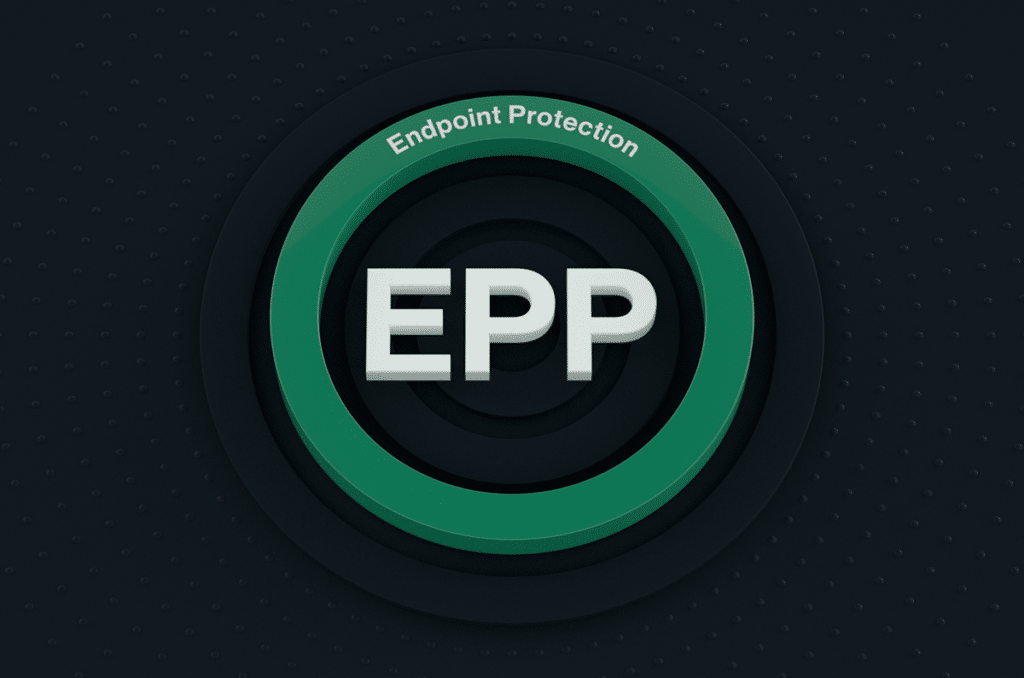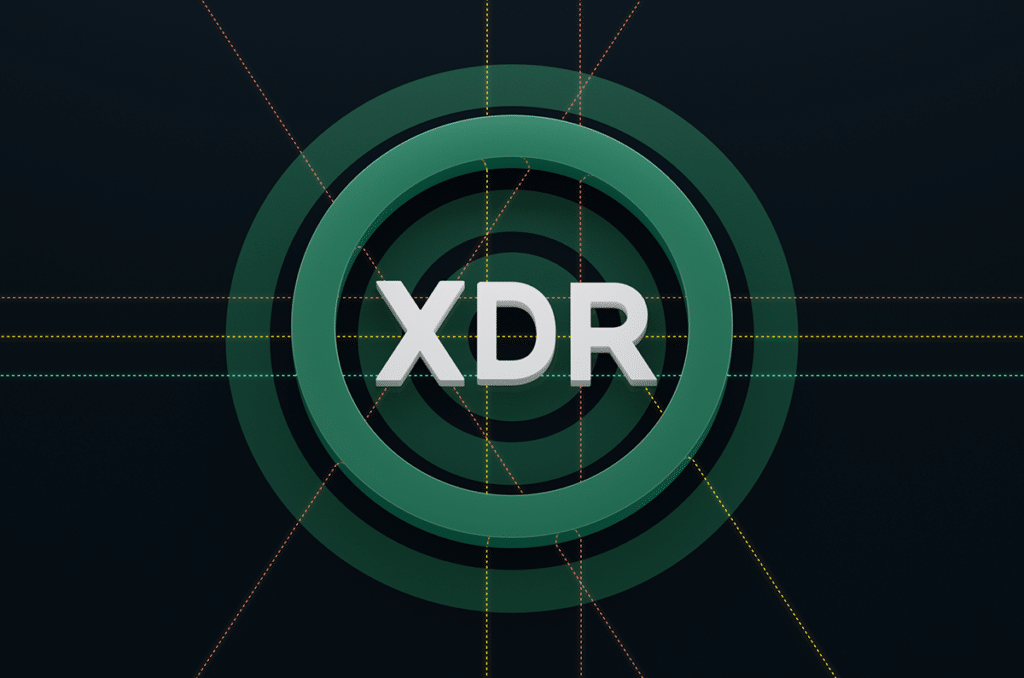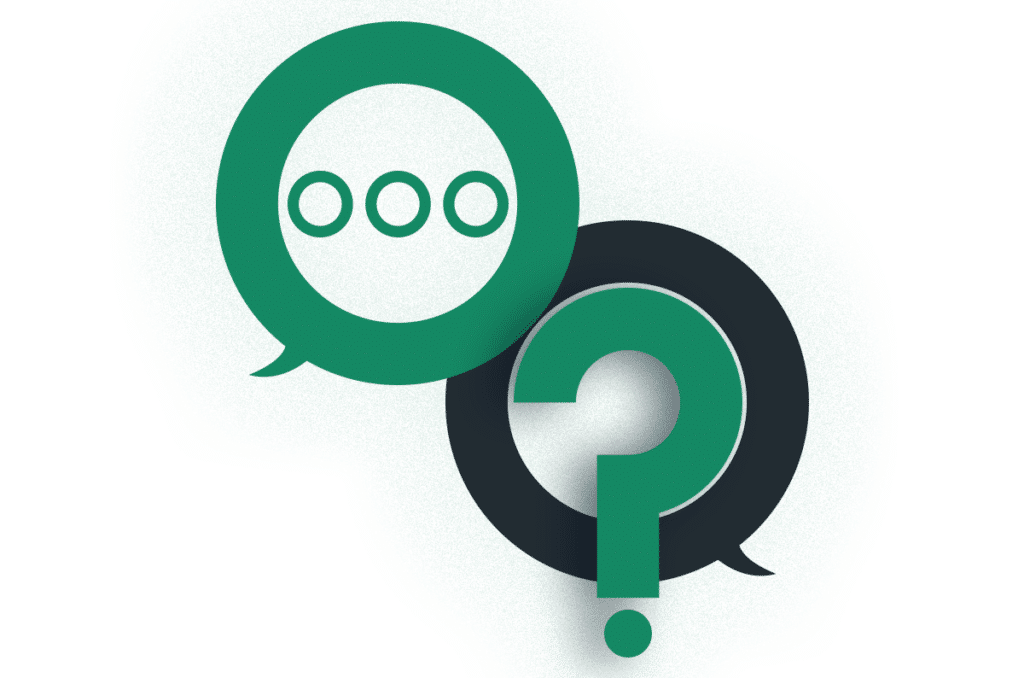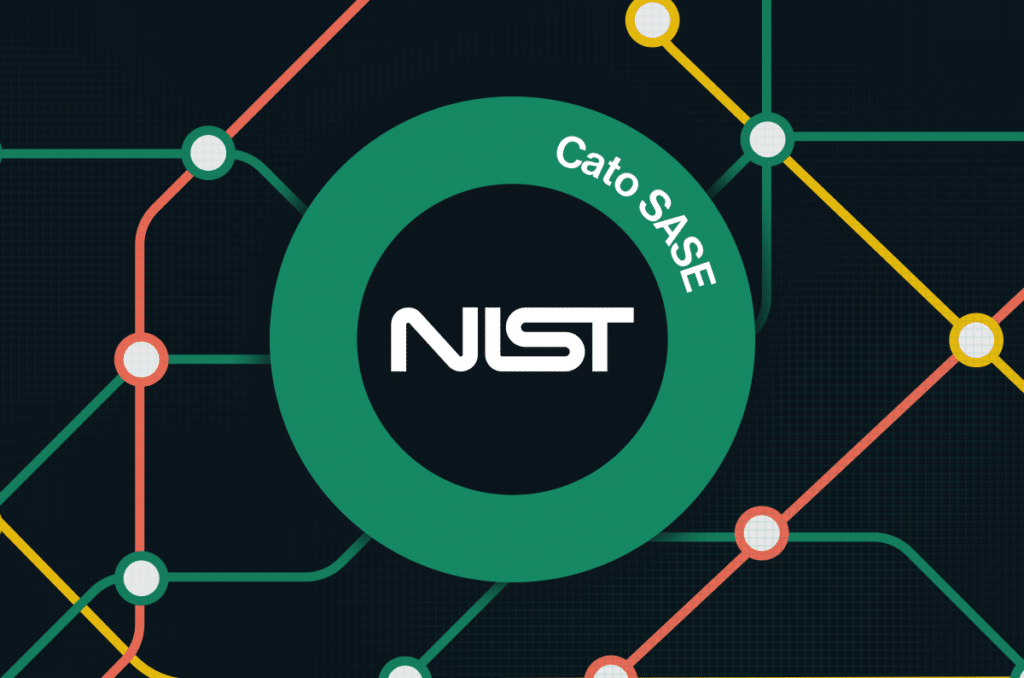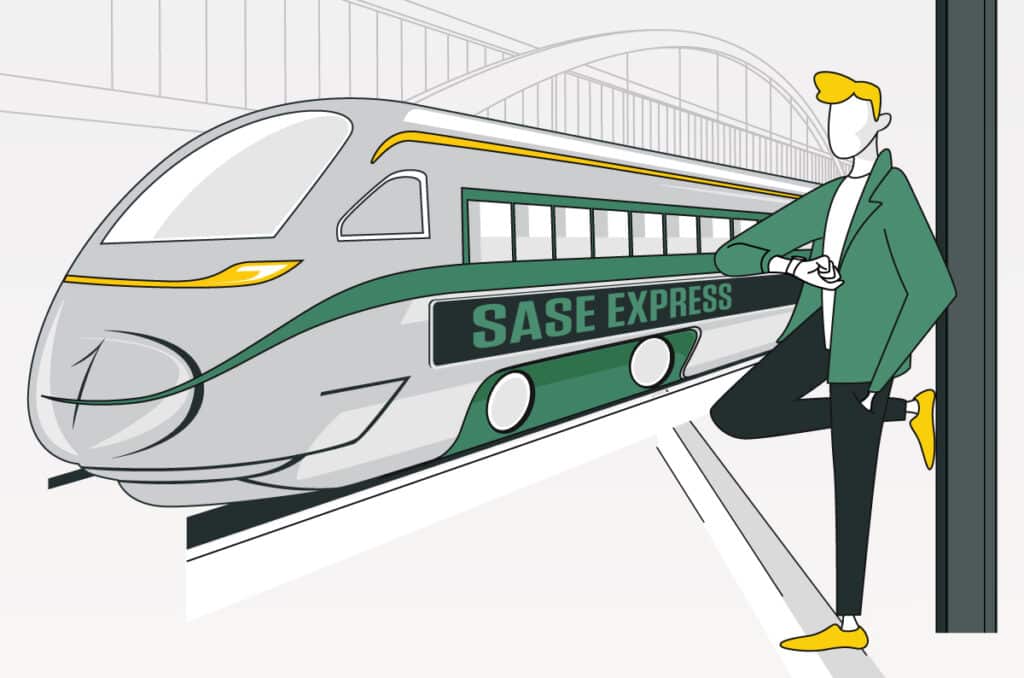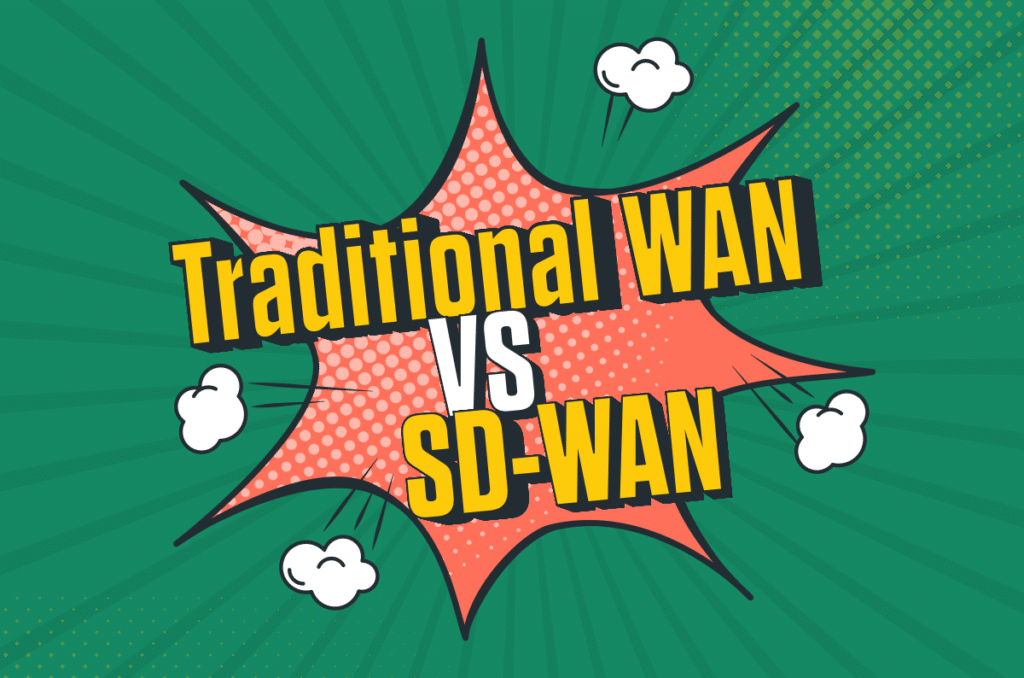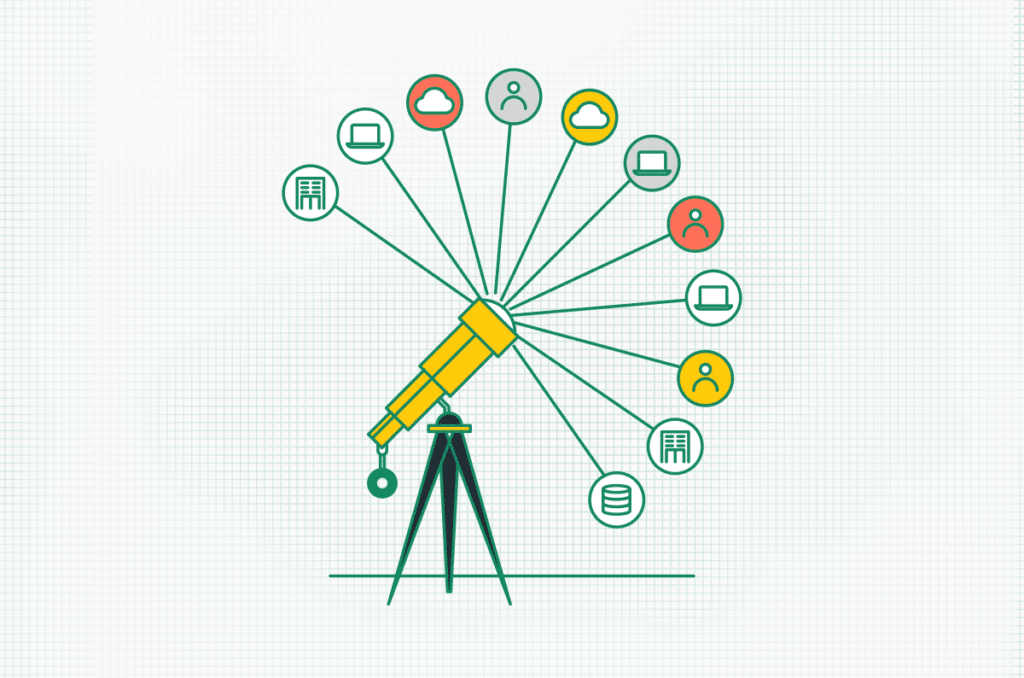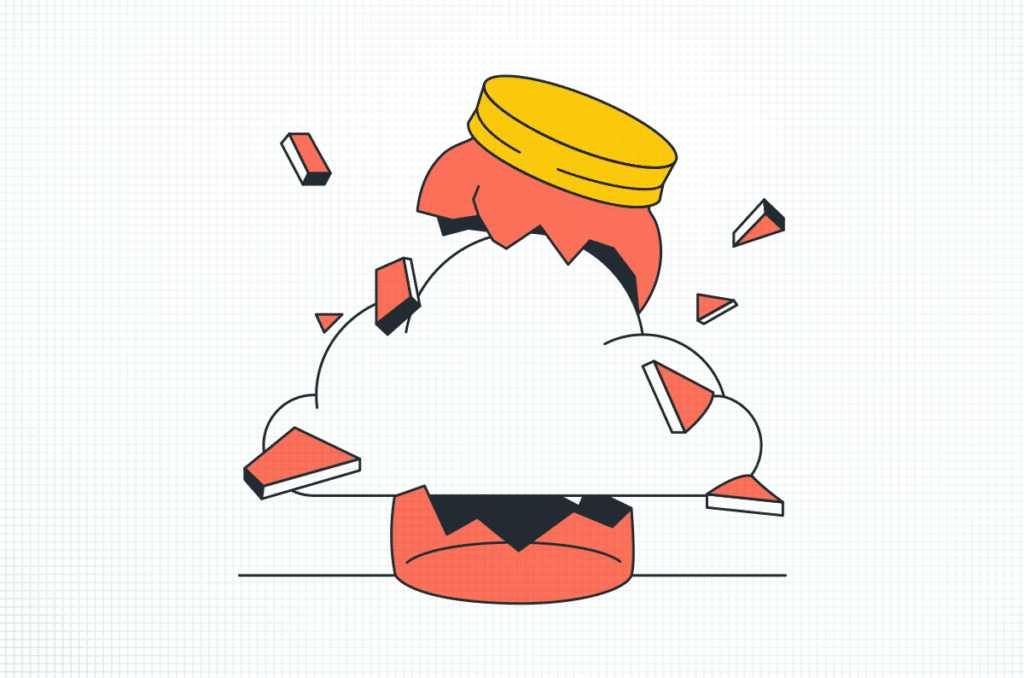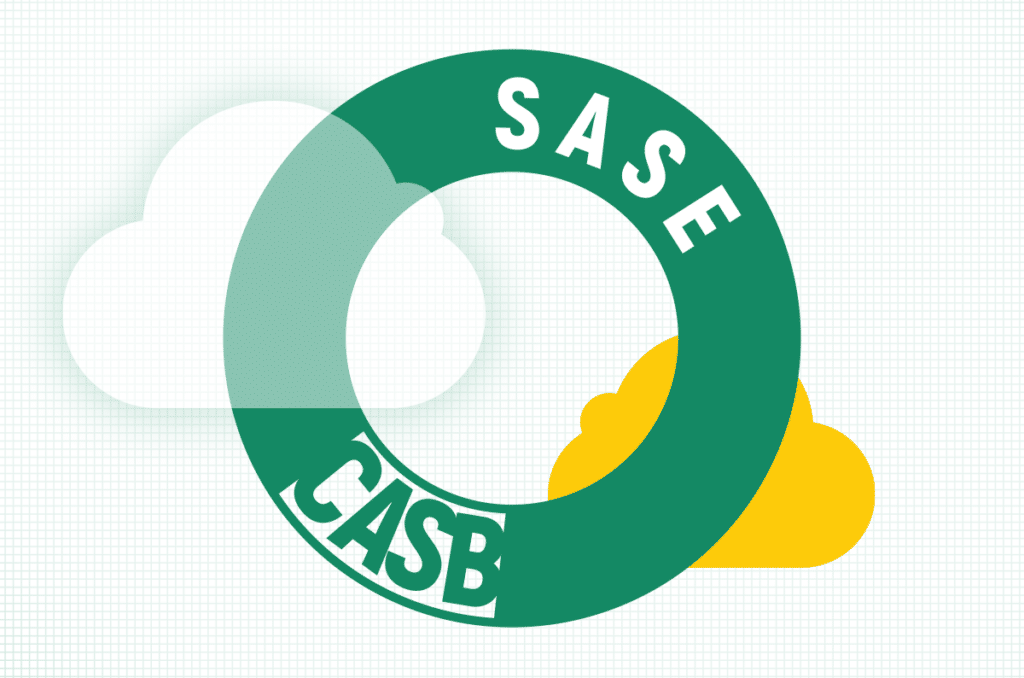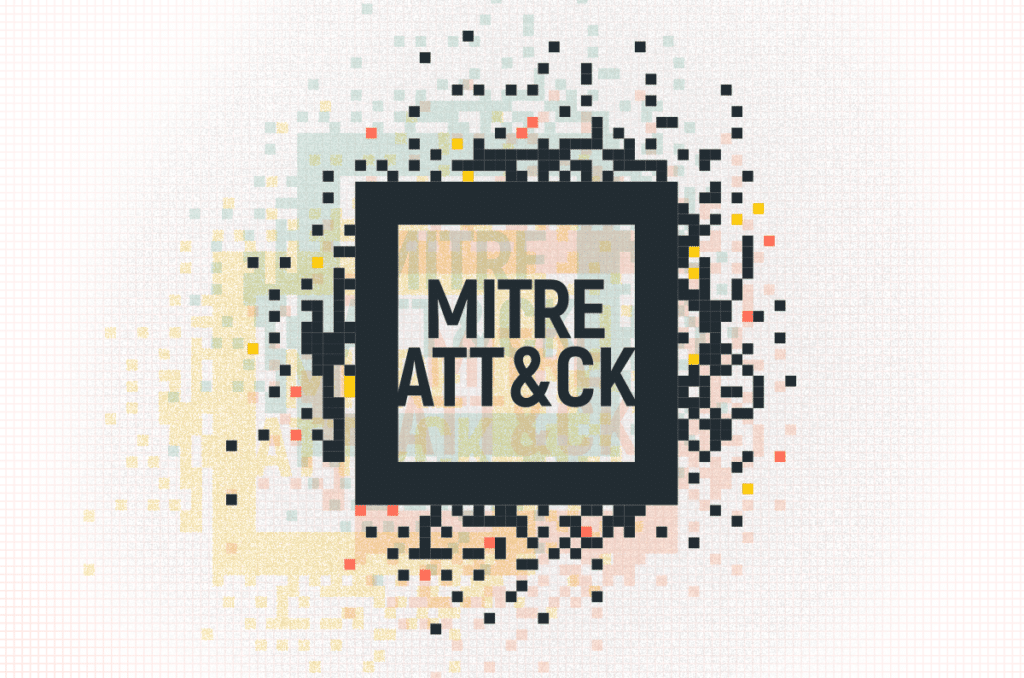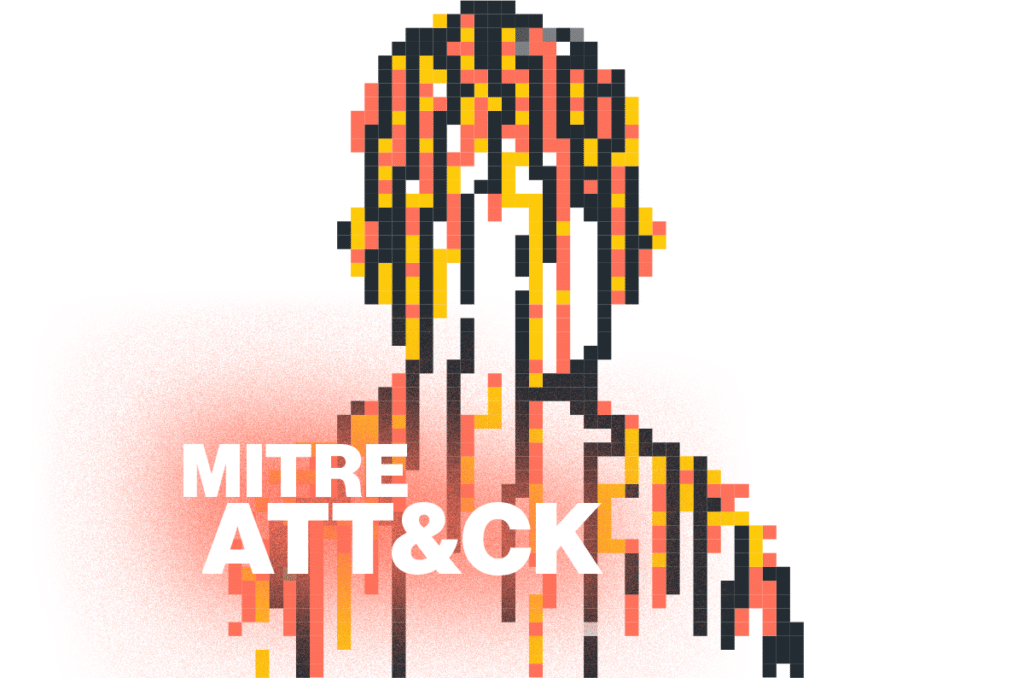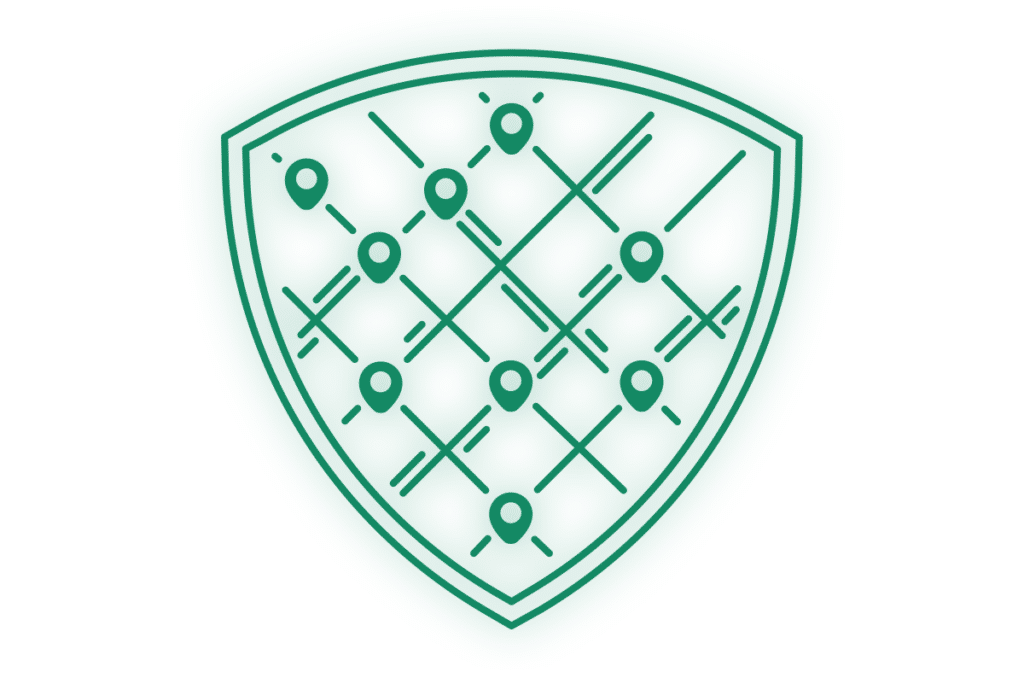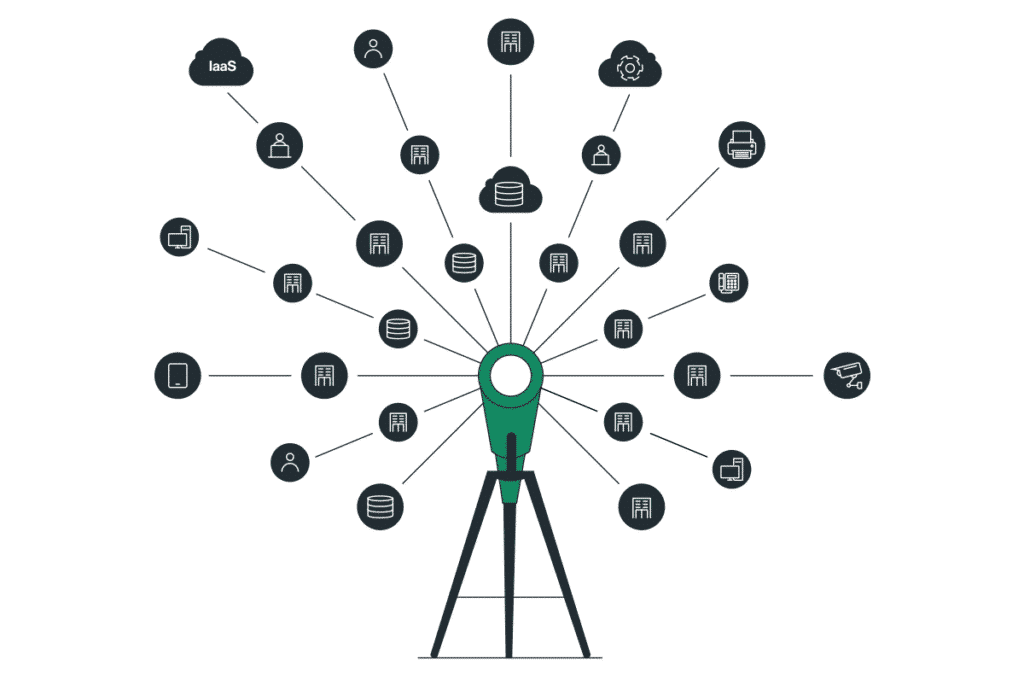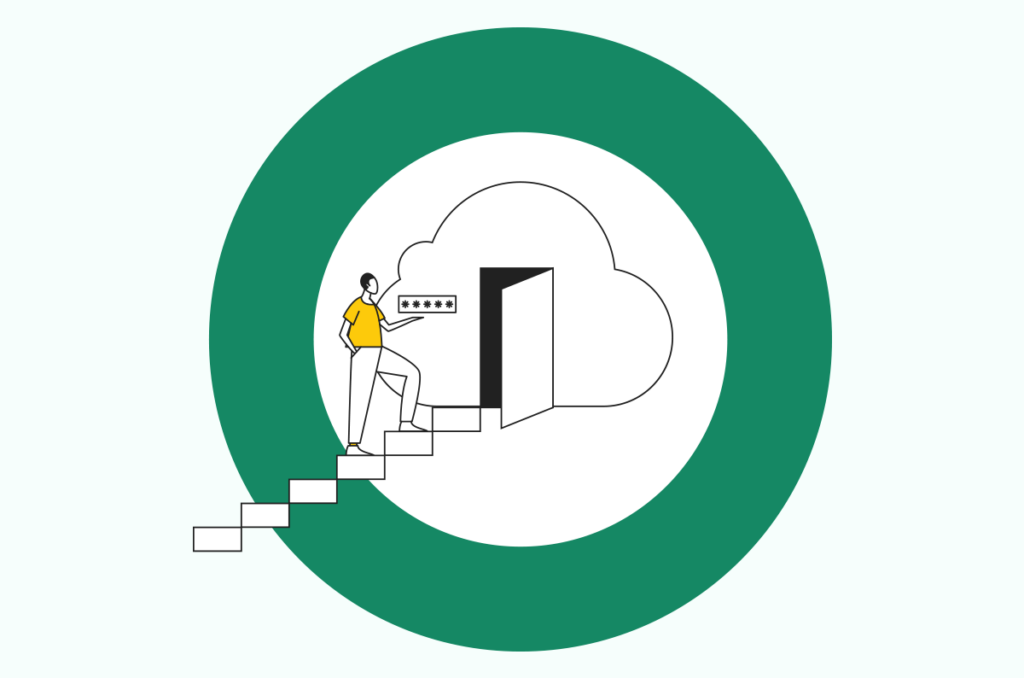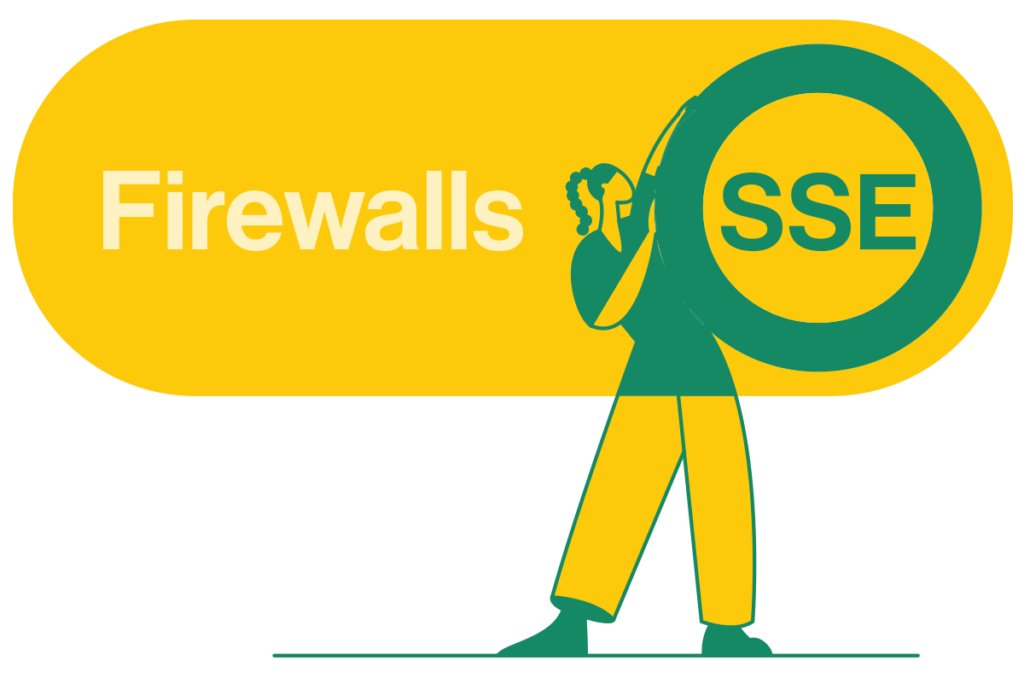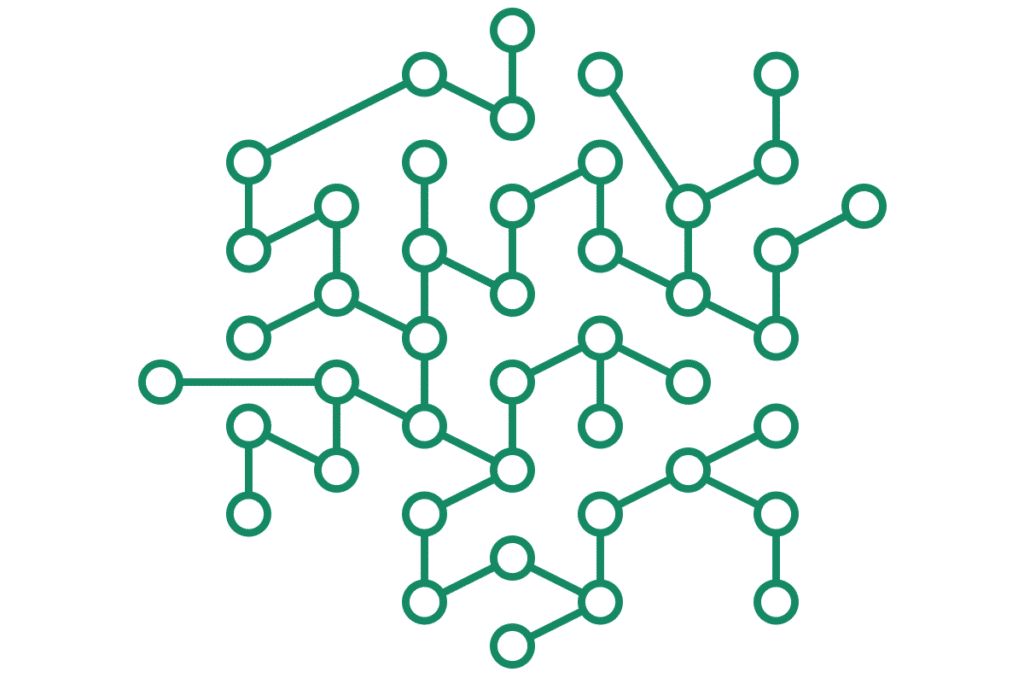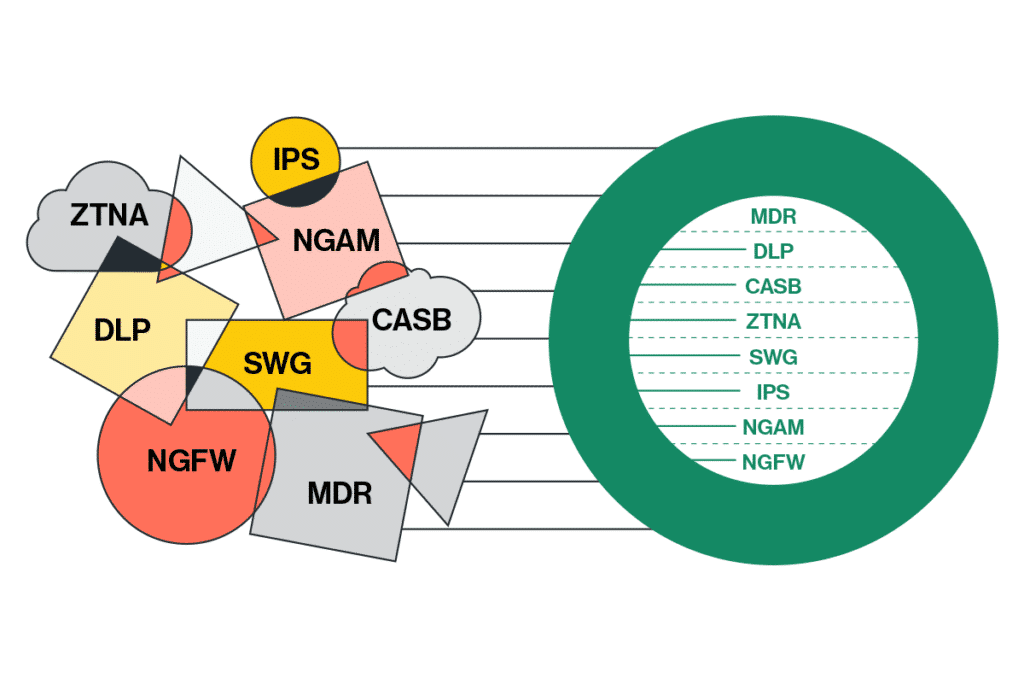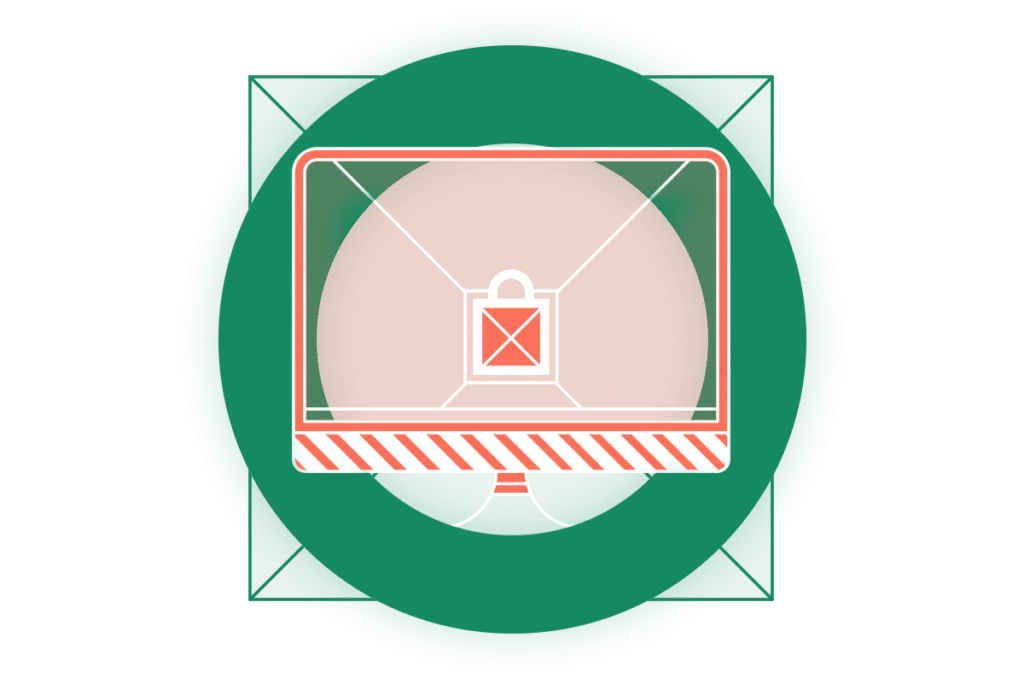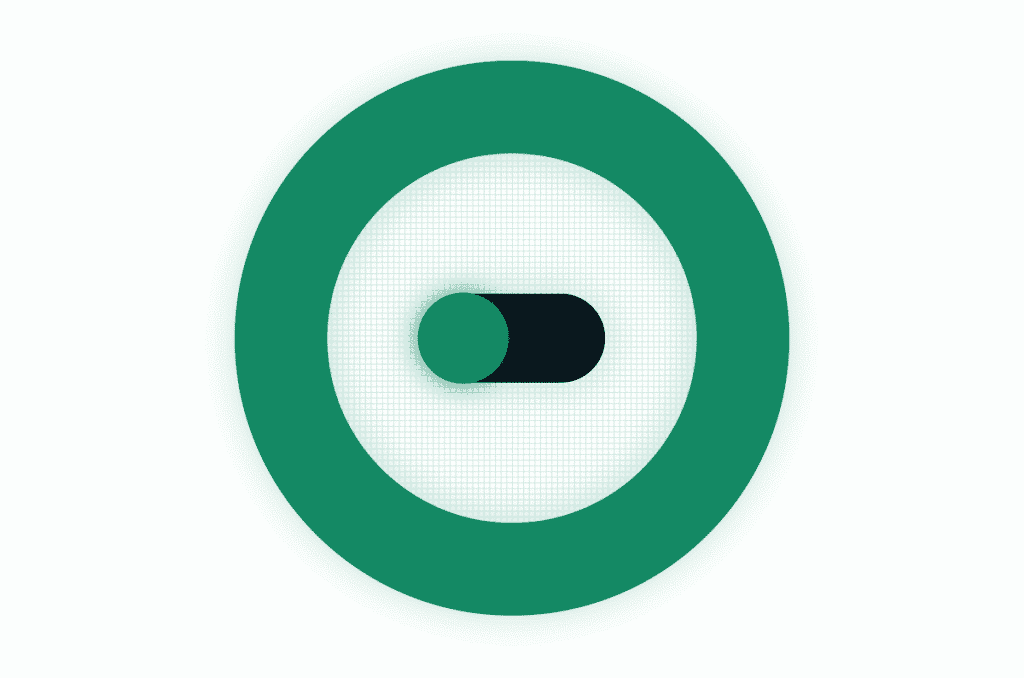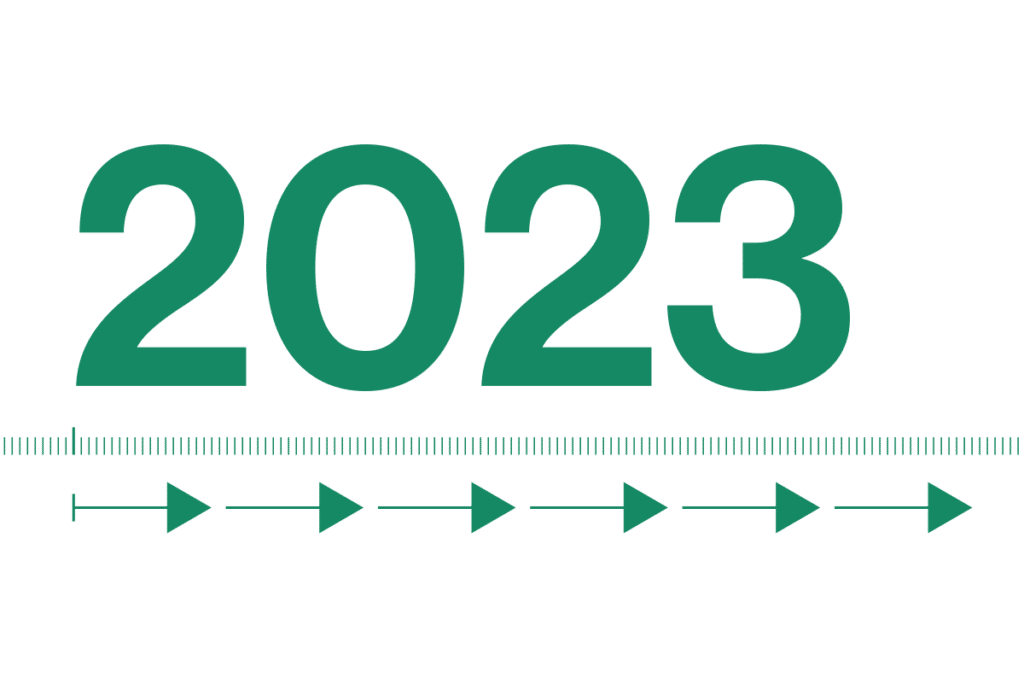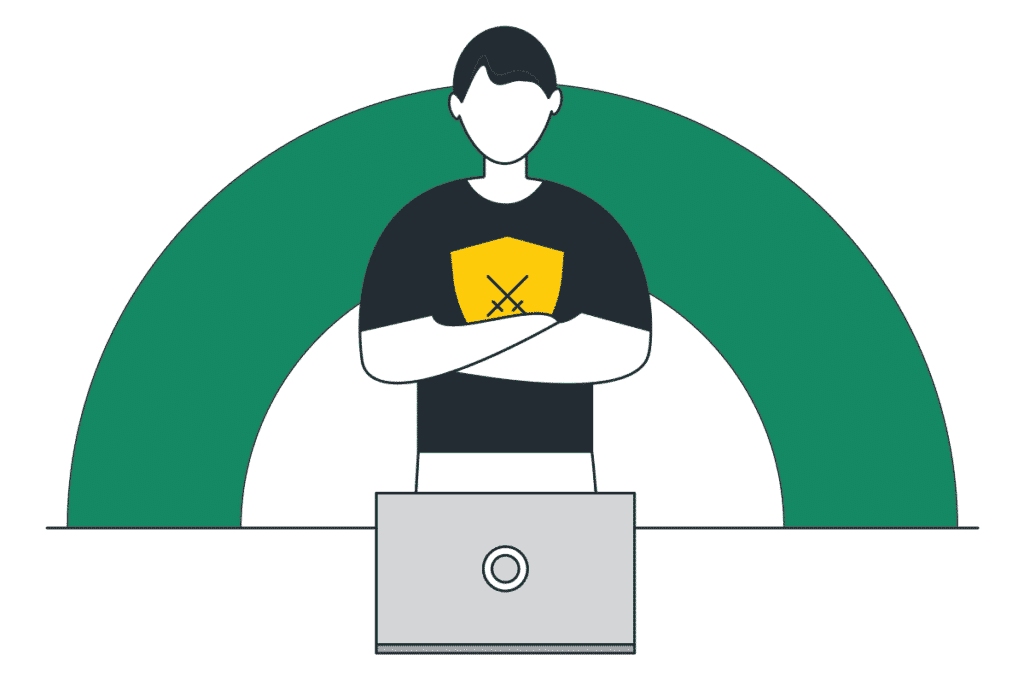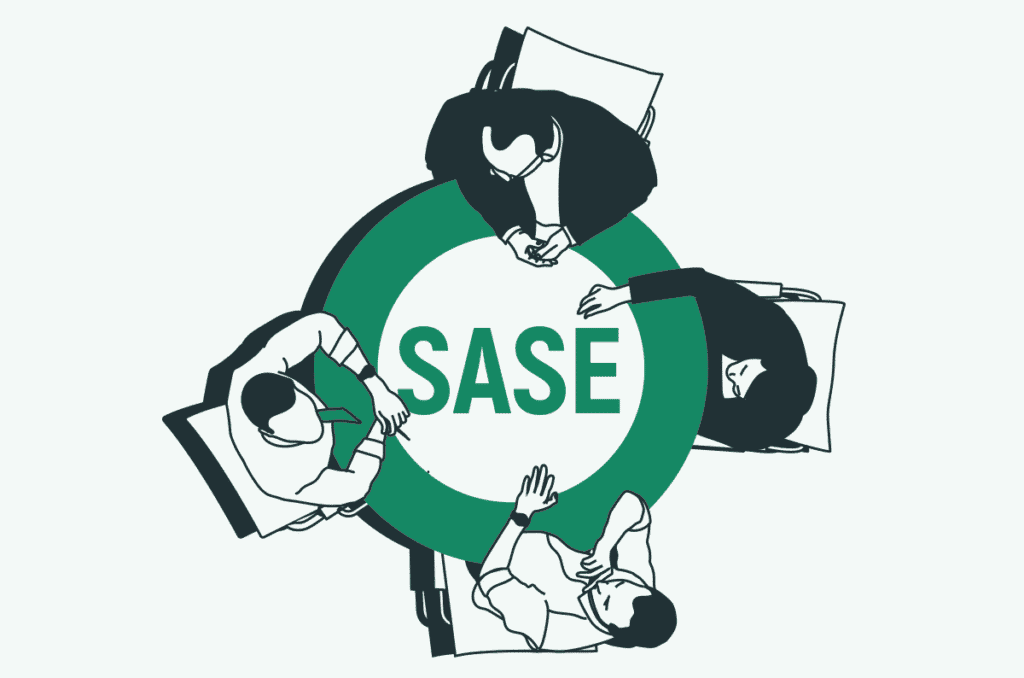The Need for Speed The rapidly evolving technology and digital transformation landscape has ushered in increased requirements for high-speed connectivity to accommodate high-bandwidth application and... Read ›
Winning the 10G Race with Cato The Need for Speed
The rapidly evolving technology and digital transformation landscape has ushered in increased requirements for high-speed connectivity to accommodate high-bandwidth application and service demands. Numerous use cases, such as streaming media, internet gaming, complex data analytics, and real-time collaboration, require we go beyond today’s connectivity trends to define new ones. Our ever-changing business landscape dictates that every transaction, every bit, and every byte will matter more tomorrow than it does today, so these use cases require a flexible and scalable network infrastructure to keep pace with innovation.
10G Enabling Industries
Bandwidth-hungry use cases continue to evolve, and the demand to accommodate them will continue to grow. To accommodate these use cases, today’s organizations must aggregate multiple 1G links, which introduces its own set of issues, including configuration, reliability, scalability, and maintenance. However, achieving these high-performance business requirements is now possible with 10 gigabits per second (10G) bandwidth, which is poised to become a key enabler of digital business. 10G has rapidly evolved into a necessity for modern digital companies, institutions, and governments, and all stand to benefit from this increased capacity. So, whether it is telemedicine, enterprise networking, or cloud computing, the requirement for 10G bandwidth will be driven by the requirement for predictable and reliable user experiences. This will revolutionize modern-day use cases across numerous industries and bring about new business opportunities for customers and service providers alike.
Another motivator for the move to 10G is the insatiable demand for scalable global connectivity. This demand dictates optimized networking and capacity that scales with the business as non-negotiable requirements for the future of digital business. 10G can deliver on these demands to accelerate networking capabilities, allowing it to exceed previous constraints to improve performance. However, despite the numerous enhancements 10G brings to modern bandwidth-hungry industries, an innovative platform that scales performance and ensures reliability is required to realize its full potential.
Achieving these benefits requires a unique architectural approach to scaling network capabilities while securely accelerating business innovation. This approach extracts core networking and security functions from the on-prem hardware edge. It then converges them into a single software stack on a global cloud-native service, making it easier to expand existing capacity to 10G without expensive hardware upgrades. This requires a SASE service that delivers the enhanced performance needed for digital industries and achieves maximum efficiency and effectiveness. This is only possible with a powerful platform like Cato.
[boxlink link="https://www.catonetworks.com/customers/from-garage-to-grid-how-cato-networks-connects-and-secures-the-tag-heuer-porsche-formula-e-team/"] From Garage to Grid: How Cato Networks Connects and Secures the TAG Heuer Porsche Formula E Team | Read Customer Story[/boxlink]
More Efficient 10G with Cato SASE Cloud Platform
The Cato SASE Cloud platform is a global service built on top of a private cloud network of interconnected Points of Presence (PoPs) running the identical software stack. This is significant because the single-pass cloud engine (SPACE) powers the platform. Cato SPACE is a converged cloud-native engine that enables simultaneous network and security inspection of all traffic flows. It applies consistent global policies to these flows at speeds up to 10G per tunnel from a single site without expensive hardware upgrades. This is only possible because of the power of Cato SPACE and improvements made to our core to enable faster performance at the cloud edge.
Cato provides customers and partners with multi-layered resiliency built into an SLA-backed backbone that drives improved 10G performance, security, and reliability without compromise. Industries like manufacturing, media, healthcare, and performance sports present unique opportunities for predictable, reliable, high-performance experiences that only a robust platform can deliver. The Cato SASE Cloud and 10G dramatically alter the performance conversation for transformational industries and bring a new digital platform approach to modernizing their networks.
Cato SASE Cloud Platform and the TAG Heuer Porsche Formula E Team
Cato has introduced 10G at the 2024 Tokyo E-Prix, the perfect venue to highlight Cato's breakthrough performance. In the fast-paced world of Formula E, every second counts. The sport is intensively data-driven, where teams rely on their IT networks to analyze data and make critical, split-second strategy decisions to achieve a winning edge. Multiple computers in the car produce 100 to 500 billion data points per event, with more than 400 gigabytes of data generated and sent back to the cloud for analysis.
With 16 E-Prix this season, many in regions lacking Tokyo's developed infrastructure, the ABB FIA Formula E Word Championship presents an incredible networking and security stress test. Cato SASE Cloud provides fast, secure, and reliable access to the TAG Heuer Porsche Formula E Team, regardless of location.
To learn more about Cato SASE Cloud, visit us at https://www.catonetworks.com/platform/
To learn more about Cato's partnership with the TAG Heuer Porsche Formula E Team, visit us at https://www.catonetworks.com/porsche-formula-e-team/.
Endpoints Under Attack As cyber threats continue expanding, endpoints have become ground zero in the fight to protect corporate resources. Advanced cyber threats pose a... Read ›
Introducing Cato EPP: SASE-Managed Protection for Endpoints Endpoints Under Attack
As cyber threats continue expanding, endpoints have become ground zero in the fight to protect corporate resources. Advanced cyber threats pose a serious risk, so protecting corporate endpoints and data should be a high priority.
Endpoint Protection Platforms (EPPs) are the first line of defense against endpoint cyber-attacks. It provides malware protection, zero-day protection, and device and application control. Additionally, EPPs serve a valuable role in meeting regulatory compliance mandates. Multiple inspection techniques allow it to detect malicious activities and provide advanced investigation and remediation tools to respond to security threats.
However, simple EPP alone is insufficient to deliver the required level of protection. In-depth endpoint protection requires a broader, more holistic approach to provide thorough security coverage.
Understanding EPP
EPP provides continuous endpoint protection and blocks malicious files activities. It uses advanced signature-based analysis to scan hundreds of file types for threats and machine learning algorithms to identify and prevent malicious endpoint activity. Heuristics and behavioral analysis perform real-time detection of anomalous characteristics. It can identify various threats, including fileless malware, Advanced Persistent Threats (APT), and evasive and stealthy file activity.
The importance of EPP providing comprehensive and proactive threat defense for users and devices cannot be overstated. As the first layer of defense protecting endpoints, EPP becomes a necessary beginning of a broader security strategy.
[boxlink link="https://www.catonetworks.com/resources/the-industrys-first-sase-based-xdr-has-arrived/"] The Industry’s First SASE-based XDR Has Arrived | Download the eBook [/boxlink]
SASE-managed EPP: A Better Approach to Endpoint Protection
The next evolution of holistic endpoint protection is SASE-managed EPP. This utilizes highly effective detection engines that combine pre-execution scanning for known threats and runtime analysis to detect anomalous and malicious activities. Built into a SASE cloud platform, it provides greater insight into malicious behavior patterns to accurately identify relationships between network security and endpoint security events.
A SASE-managed EPP provides security teams with a single management console to view and understand identified security incidents. It also streamlines endpoint security management, making it easier to investigate and remediate threats. This allows security teams to quickly secure enterprise endpoints, eliminate risk, and strengthen their security posture.
Cato EPP is the Future of Endpoint Protection
As the industry’s first SASE-managed EPP solution, Cato EPP is the ideal endpoint solution to secure today’s enterprises. Its protection combines pre-execution and runtime scanning techniques to detect known threats and unknown threats with malicious characteristics. This allows it to capture early indicators of pending threats and enables dynamic and adaptive threat protection for all users and endpoints.
Cato EPP provides is a holistic approach to securing the modern digital enterprise. Being part of the Cato SASE Cloud platform, it provides greater visibility to identify related network security and endpoint events, and display them in a single management application. This is critical to providing security teams with enhanced analysis and investigation capabilities to quickly respond to potential threats, enabling them to take the necessary steps to eliminate endpoint risk and strengthen enterprise-wide security.
Cato EPP delivers a better security experience and overcomes many of the security management issues plaguing today’s security teams. With it, these teams are now better equipped to eliminate endpoint risk by deploying a more complete EPP solution.
Security Analysts Need Better Tools Security analysts continue to face an ever-evolving threat landscape, and their traditional approaches are proving to be quite limited. They... Read ›
Cato XDR: A SASE-based Approach to Threat Detection and Response Security Analysts Need Better Tools
Security analysts continue to face an ever-evolving threat landscape, and their traditional approaches are proving to be quite limited. They continue to be overrun with security alerts, and their SIEMs often fail to properly correlate all relevant data, leaving them more exposed to cyber threats. These analysts require a more effective method to understand threats faster and reduce security risks in their environment.
Extended Detection and Response (XDR) was introduced to improve security operations and eliminate these risks. XDR is a comprehensive cybersecurity solution that goes beyond traditional security tools. It was designed to provide a more holistic approach to threat detection and response across multiple IT environments. However, standard XDR tools have a data quality issue because to process threat data, it must be normalized into a structure the XDR understands. This often results in incomplete or reduced data, and this inconsistency makes threats harder to detect.
SASE-based XDR
Cato Networks realized that XDR needed to evolve. It needed to overcome the data-quality limitations of current XDR solutions to produce cleaner data for more accurate threat detection. To achieve this, the way XDR ingested and processed data needed to change, and it would start with the platform. This next evolution of XDR would be built into a SASE platform to enable a more comprehensive approach to security operations.
SASE-based XDR is a completely different approach to security operations and overcomes the limitations of standard XDR solutions. Built-in native sensors overcome the data quality issues to produce high-quality data that requires no integration or normalization. Captured data through these sensors are populated into a single data lake and this allows AI/ML algorithms to train on this data to create quality XDR incidents.
[boxlink link="https://www.catonetworks.com/resources/cato-networks-sase-threat-research-report/"] Cato Networks SASE Threat Research Report H2/2022 | Download the Report [/boxlink]
AI/ML in SASE-based XDR
AI/ML serves an important role in SASE-based XDR, with advanced algorithms providing more accuracy in correlation and detection engines. Advanced ML models train on petabytes of data and trillions of events from a single data lake. Data populated through the native sensors requires no integration or normalization and no need for data reduction. The AI/ML is trained on this raw data to eliminate missed detections and false positives, and this results in high-quality threat incidents.
SASE-based XDR Threat Incidents
SASE-based XDR detects and acts on various types of cyber threats. Every threat in the management console is considered an incident that presents a narrative of a threat from its inception until its final resolution. These incidents are presented in the Dashboard, providing a roadmap for security analysts to understand the detected threats. SASE-based XDR generates three types of incidents:
Threat Prevention – Correlates Block event signals that were generated from prevention engines, such as IPS.
Threat Hunting – Detects elusive threats that do not have signatures by correlating various network signals using ML and advanced heuristics.
Anomaly Detection – Detects unusual suspicious usage patterns over time using advanced statistical models and UEBA (User and Entity Behavior Analytics).
Threat Intelligence for SASE-based XDR
SASE-based XDR contains a reputation assessment system to eliminate false positives. This system uses machine learning and AI to correlate readily available networking and security information and ingests millions of IoCs from 250+ threat intelligence sources. It scores them using real-time network intelligence gathered by ML models.
Threat intelligence enrichment strengthens SASE-based XDR by increasing the quality of data that is consumed by the XDR engine, thus increasing the accuracy of the XDR incidents. Security teams are now better equipped to investigate their incidents and remediate cyber threats in their environment.
Cato XDR: The Game-Changer
Cato XDR is the industry’s first SASE-based XDR solution that eases the burden of security teams and brings a 360-degree approach to security operations. It uses advanced AI/ML algorithms for increased accuracy in XDR’s correlation and detection engines to create XDR stories. It also uses a reputation assessment engine for threat intelligence to score threat sources and identify and eliminate false positives.
Cato XDR also overcomes the data quality issue of standard XDR solutions. The Key to this is native sensors that are built into the SASE platform. These high-quality sensors produce quality metadata that requires no integration or normalization. This metadata is populated into our massive data lake, and Machine Learning algorithms train on this to map the threat landscape.
Cato XDR is a true game-changer that presents a cleaner path to more efficient security operations. With XDR and security built into the platform, the results are cleaner and more accurate detection, leading to faster, more efficient investigation and remediation.
For more details, read more about XDR here.
A New Reality The nature of the modern digital business is constantly and rapidly evolving, requiring network and security architectures to move at the same... Read ›
Addressing CxO Questions About SASE A New Reality
The nature of the modern digital business is constantly and rapidly evolving, requiring network and security architectures to move at the same speed. Moving at the speed of business demands a new architecture that is agile, flexible, highly scalable, and very secure to keep pace with dynamic business changes. In short, this requires SASE. However, replacing a traditional architecture in favor of a SASE cloud architecture to meet these demands can introduce heart-stopping uncertainty in even the most forward-thinking CxOs.
Most CxOs understand what SASE delivers; some can even envision their SASE deployment. However, they require more clarity about SASE approaches, requirements, and expectations. The correct SASE decision delivers long-term success; conversely, the wrong decision adversely impacts the organization. Avoiding this predicament requires due diligence, asking tough questions, and validating their use cases and business objectives.
Understanding the right questions to ask requires understanding the critical gaps in the existing architecture to visualize the desired architecture. Asking the right questions requires clarity on the problems the business is trying to solve. Considerations like new security models, required skills, or potential trade-offs should be addressed before any project begins.
We’ll answer some of those questions and highlight how the right SASE cloud solution delivers benefits beyond architectural simplicity and efficiency.
Answering CxO Questions
Determining which questions are relevant enough to influence a buying decision and then acting on them can be exhausting. This blog addresses those concerns to clarify SASE’s ability to solve common use cases and advance business goals. While the following questions only represent a small set of the possible questions asked by CxOs, they help crystalize the potential of a SASE Cloud solution to address critical questions and use cases while assuaging any concerns.
Does this fit our use cases, and what do we need to validate?
A key decision point for many CxOs is whether or not the solution solves their most pressing use cases. So, understanding what’s not working, why it’s not working, and what success looks like when it is working provides them with their north star, per se, as guidance. One would assume that answering this question is quite easy; however, looking closer we find the answers are rather subjective.
Through our engagements with customers, we’ve found that use cases tend to fall into one of three broad categories:
1. Network & security consolidation/simplification
Point solutions to address point problems yields appliance sprawl. This has created security gaps and sent management support costs through skyrocketing. This makes increasing IT spending harder to justify to the board, pushing more CxOs to explore alternatives amid shrinking budgets.
SASE is purpose-built to consolidate and simplify network and security architectures. The right SASE Cloud solution delivers a single, converged software stack that consolidates network, access, and security into one, thus eliminating solution sprawl and security gaps. Additionally, it eliminated day-to-day support tasks, thus delivering a high ROI.
2. Secure Access/Work-From-Anywhere
Covid-19 accelerated a new working model for modern digital enterprises. Hybrid work became the rule more than an exception, increasing secure remote access requirements.
SASE makes accommodating this and other working model easy to facilitate while ensuring productivity and consistent security everywhere.
3. Cloud Optimization & Security
As hybrid and multi-cloud becomes a core business & technology strategy, performance and security demands have increased. Organizations require compatible performance and security in the cloud as they received on-premise.
SASE improves cloud performance and provides consistent security enforcement for hybrid and multi-cloud environments.
The right SASE cloud approach addresses all common and complex use cases, thus becoming a clear benefit for modern enterprises.
[boxlink link="https://www.catonetworks.com/resources/sase-as-a-gradual-deployment-the-various-paths-to-sase/"] SASE as a Gradual Deployment: The Various Paths to SASE | Get the eBook [/boxlink]
How can we align architecturally with this new model? What will our IT operations look like? Can we inspire the team to develop new skills to fit this new IT model?
When moving to a 100% cloud-delivered SASE solution, it is logical to question the level of cloud expertise required. Can IT teams easily adapt to support a SASE cloud solution? How can we efficiently align to build a more agile and dynamic IT organization?
The average IT technologist joined the profession envisioning strategic thought-provoking projects that challenged their creative and innovative prowess. SASE cloud solutions enable these technologists to realize this vision while allowing organizations to think differently about how IT teams support the overall business. Traditional activities like infrastructure and capacity planning, updating, patching, and fixing now fall to the SASE cloud provider since they own the network infrastructure. Additionally, SASE cloud strengthens NOC and SOC operations with 360-degree coverage for network and security issues. The right SASE cloud platform offloads these mundane operational tasks that typically frustrates IT personnel and leads to burn out.
IT teams can now focus on more strategic projects that drive business by offloading common day-to-day support tasks to their SASE Cloud provider.
How can all security services be effectively delivered without an on-premises appliance? What are the penalties/risks if done solely in the cloud?
Traditional appliances fit nicely into IT comfort zones. You can see it and touch it, so moving all security policies to the cloud can be scary. Some will question if it makes sense to enforce all policies in the cloud and whether this will provide complete security coverage. These questions try to make sense of SASE, highlighted by a fear of the architectural unknown.
There is a reason most CxOs pursue SASE solutions. They’ve realized that current network architectures are unsustainable and require a bit of sanity. The right SASE Cloud platform provides this through the convergence of access, networking, and security into a single software stack. All technologies are built into a single code base and collaborate to deliver more holistic security. And, with a global private network of SASE PoPs, SASE Cloud delivers consistent policy enforcement everywhere the user resides. This simple method of delivering Security-as-a-Service makes sense to them.
What will this deployment journey be like, and how simple will it be?
Traditional network and security deployments are extremely complex. They require hardware everywhere, extended troubleshooting, and other unknown risks. These include integrating cloud environments; ensuring cloud and on-premise security policies are consistent; impact on normal operations; and licensing and support contracts, just to name a few.
Mitigating risks inherent with on-premises deployments is top-of-mind for most CxOs. SASE cloud solution deployments are straightforward and simple with most customers gaining a very clear idea of this during their POC. The POC provides customers with deep insight into common SASE cloud deployment practices and ease of configuration, and they gain clarity for their journey based on their use cases. Best of all, they see how the solution works in their environment and, more importantly, how the SASE cloud solution integrates into their existing production network. This helps alleviate any concerns for their new SASE journey.
What, if any, are the quantitative and qualitative compromises of SASE? How do we manage them?
CxOs face daunting, career-defining dilemmas when acquiring new technologies, and SASE is no different. They must determine how to prioritize and find necessary compromises when needed. Traditional solution deployments are sometimes accompanied by unexpected costs associated with ancillary technology or resource requirements. For example, how would they manage a preferred solution if they later find it unsuitable for certain use cases? Do they move forward with their purchase? Do they select another knowing it may fail to address a different set of use cases?
While priorities and compromises are subjective, it helps to identify potential trade-offs by defining the “must-have”, “should-have”, and “nice-to-have” requirements for a particular environment. Working closely with your SASE cloud vendor during the POC, you will test and validate your use cases against these requirements. In the end, customers usually find that the right SASE cloud solution will meet their common and complex access, network, and security use cases.
How do we get buy-in from the board?
SASE is just as much a strategic business conversation as an architectural one. How a CxO approaches this – what technical and business use cases they map to, their risk-mitigating strategy, and their path to ROI – will determine their overall level of success. So, gaining board-level buy-in is an important and possibly, the most critical part of their process.
CxOs must articulate the strategic business benefits of converging access, networking, and security functions into a single cloud-native software stack with unlimited scalability to support business growth. An obvious benefit is how SASE accelerates and optimizes access to critical applications and enhances security coverage while improving user experiences and efficiency. CxOs can also consult our blog, Talk SASE To Your Board, for board conversation tips.
Cato SASE Cloud is the Answer
A key advantage of Cato SASE Cloud is that it solves the most common business and technical use cases. Mapping the SASE cloud solution into these use cases and testing them during a POC will uncover the must/should/nice-to-have requirements and help customers visualize solving them with a SASE cloud solution.
CxOs and other technology business leaders will naturally have questions about SASE and how to approach potential migration. SASE changes the networking and security game, so embarking upon this new journey requires changing minds. Cato SASE Cloud represent the new secure digital platform of the future that is best positioned to allow enterprises to experience business transformation without limits.
For more advice on deciding which solution is right for your organization, please read this article on evaluating SASE capabilities.
According to a recent Yerbo survey, 40% of IT professionals are at high risk of burnout. In fact, and perhaps even more alarming, 42% of... Read ›
6 Steps for CIOs To Keep Their IT Staff Happy According to a recent Yerbo survey, 40% of IT professionals are at high risk of burnout. In fact, and perhaps even more alarming, 42% of them plan to quit their company in the next six months. And yet, according to Deloitte, 70% of professionals across all industries feel their employers are not doing enough to prevent or alleviate burnout.
CIOs should take this statistic seriously. Otherwise, they could be dealing with the business costs of churn, which include loss of internal knowledge and the cost of replacing employees, both resulting in putting strategic plans on hold.
So, what’s a CIO to do? Here are six steps ambitious CIOs like you can take to battle burnout in the IT department and keep their staff happy.
This blog post is a short excerpt of the eBook “Keeping Your IT Staff Happy: How CIOs Can Turn the Burnout Tide in 6 Steps”. You can read the entire eBook, with more details and an in-depth action plan, here.
Step 1: Let Your Network Do the Heavy Lifting
If your IT team is receiving negative feedback from users, they might be feeling stressed out. Poor network performance, security false positives and constant user complaints can leave them feeling dread and anxiety about that next “emergency” phone call.
SASE can help ease this pressure. SASE provides reliable global connectivity with optimized network performance, 99.999% uptime and a self-healing architecture that ensures employees can focus on advancing the business, instead of tuning and troubleshooting network performance. With SASE, IT managers can provide a flawless user experience and business continuity, while enjoying a silent support desk.
[boxlink link="https://www.catonetworks.com/resources/keep-your-it-staff-happy/"] Keep your IT Staff happy: How CIOs Can Turn the Burnout Tide in 6 Steps | Get the eBook [/boxlink]
Step 2: Leverage Automation to Maximize Business Impact
IT professionals are often caught in a cycle of mundane activities, leaving them feeling unchallenged. Instead of having IT teams fill the time with endless maintenance and monitoring, CIOs can focus their IT teams on work that achieves larger business objectives. SASE automates repetitive tasks, which frees up IT to focus on strategic business objectives. In addition, the repetitive tasks become less prone to manual errors.
Step 3: Eliminate Networking and Security Solution Sprawl with Converged SASE
IT teams are swamped with point solutions, each corresponding to a specific, narrow business problem. All of these solutions create a complicated mix of legacy machines, hardware and software; which are difficult for IT to operate, maintain, support and manage.
With SASE, CIOs can transform their network into a single platform with a centralized management application. IT can now gain a holistic view of their architecture, and enjoy easy management and maintenance.
Step 4: Ensure Business Continuity and Best-in-class Security with ZTNA
Working from anywhere has doubled IT’s workload. They are now operating in reactive mode, attempting to support end-user connectivity and security through VPNs that were not built to support such scale.
SASE is the answer for remote work, enabling users to work seamlessly and securely from anywhere. Eliminating VPN servers removes the need to backhaul traffic and improves end-user performance. Traffic is authenticated with Zero Trust and inspected with advanced threat defense tools to reduce the attack surface.
Step 5: Minimize Security Vulnerabilities Through Cloudification and Consolidation
Global branches, remote work, and countless integrations between network and security point products have created an expanding attack surface. For IT, this means fighting an uphill battle without the tools they need to win.
A SASE or SSE solution helps IT apply consistent access policies, avoid misconfigurations and achieve regulatory compliance. This also allows them to prevent cyber attacks in real time and helps the organization remain secure and prevent compliance issues.
Step 6: Bridge Your Team’s Skillset Gap and Invest in Their Higher Education
Skills gaps occur for a number of reasons. Whatever the reason, this can leave your IT team members feeling overwhelmed and professionally unfulfilled, resulting in them leaving the organization.
Providing training and professional development helps IT professionals succeed, which in turn, may motivate them to remain in their roles longer, according to a recent LinkedIn survey. These benefits are felt everywhere and by everyone from the IT professional who receives more at-work satisfaction, to CIOs who don’t have to backfill the skills gaps externally. This enables the organization to achieve ambitious plans for growth and business continuity through technology.To read more about how CIOs can tackle IT burnout head on, click here to access the full eBook.
Introduction The National Institute of Standards and Technology (NIST) Cybersecurity Framework (CSF) 1.1 has been a critical reference to help reduce or mitigate cybersecurity threats... Read ›
NIST Cybersecurity & Privacy Program Introduction
The National Institute of Standards and Technology (NIST) Cybersecurity Framework (CSF) 1.1 has been a critical reference to help reduce or mitigate cybersecurity threats to Critical Infrastructures. First launched in 2014, it remains the de facto framework to address the cyber threats we have seen. However, with an eye toward addressing more targeted, sophisticated, and coordinated future threats, it was universally acknowledged that NIST CSF 1.1 required updating.
NIST has released a public draft of version 2.0 of their Cybersecurity Framework (CSF), which promises to deliver several improvements. However, to understand the impact of this update, it helps to understand how CSF v1.1 brought us this far.
Background
Every organization in today’s evolving global environment is faced with managing enterprise security risks efficiently and effectively. Cybersecurity is daunting; depending on your industry vertical, adhering to an intense list of regulatory and compliance standards only adds to this nightmare. Whether it’s the International Organization for Standardization (ISO) 27001, Information Systems Audit and Controls Association (ISACA) COBIT5, or other such programs, it is often confusing to know how or where to start, but they all specify processes to protect and respond to cybersecurity threats.
This was the impetus behind the National Institute of Standards and Technology (NIST) developing the Cybersecurity Framework (CSF). NIST CSF references proven best practices in its Core functions: Identify, Protect, Detect, Respond, and Recover. With this framework in place, organizations now have tools to better manage enterprise cybersecurity risk by presenting organizations with the required guidance.
NIST 2.0
The development of NIST CSF version 2.0 was a collaboration of industry, academic, and government experts across the globe, demonstrating the intent of adapting this iteration of the CSF to organizations everywhere, and not just in the US. It’s focused on mitigating cybersecurity risk to industry segments of all types and sizes by helping them understand, assess, prioritize, and communicate about these risks and the actions to reduce them.
To deliver on this promise, NIST CSF 2.0 highlights several core changes to deliver a more holistic framework. The following key changes are crucial to improving CSF to make it more globally relevant:
Global applicability for all segments and sizes
The previous scope of NIST CSF primarily addressed cybersecurity for critical infrastructure in the United States. While necessary at the time, it was universally agreed that expanding this scope was necessary to include global industries, governments, and academic institutions, and NIST CSF 2.0 does this.
Focus on cybersecurity governance
Cybersecurity governance is an all-encompassing cybersecurity strategy that integrates organizational operations to mitigate the risk of business disruption due to cyber threats or attacks. Cybersecurity governance includes many activities, including accountability, risk-tolerance definitions, and oversight, just to name a few. These critical components map neatly across the five core pillars of NIST CSF: Identify, Protect, Detect, Respond, and Recover. Cybersecurity governance within NIST CSF 2.0 defines and monitors cybersecurity risk strategies and expectations.
Focus on cybersecurity supply chain risk management
An extensive, globally distributed, and interconnected supply chain ecosystem is crucial for maintaining a strong competitive advantage and avoiding potential risks to business continuity and brand reputation. However, an intense uptick in cybersecurity incidents in recent years has uncovered the extended risk that exists in our technology supply chains. For this reason, integrating Cybersecurity Supply Chain Risk Management into NIST CSF 2.0 enables this framework to effectively inform an organization’s oversight and communications related to cybersecurity risks across multiple supply chains.
[boxlink link="https://www.catonetworks.com/resources/nist-compliance-to-cato-sase/"] Mapping NIST Cybersecurity Framework (CSF) to the Cato SASE Cloud | Download the White Paper [/boxlink]
Integrating Cybersecurity Risk Management with Other Domains Using the Framework
NIST CSF 2.0 acknowledges that no one framework or guideline solves all cybersecurity challenges for today’s organizations. Considering this, there is alignment to several important privacy and risk management frameworks included in this draft:
Cybersecurity Supply Chain Risk Management Practices for Systems and Organizations – NIST SP 800-161f1
NIST Privacy Framework
Integrating Cybersecurity and Enterprise Risk Management – NIST IR 8286
Artificial Intelligence Risk Management Framework – AI 100-1
Alignment to these and other frameworks ensures organizations are well-equipped with guidelines and tools to facilitate their most critical cybersecurity risk programs holistically to achieve their desired outcomes.
Framework Tiers to Characterize Cybersecurity Risk Management Outcomes
NIST CSF 2.0 includes framework tiers to help define cybersecurity risks and how they will be managed within an organization. These tiers help identify an organization's cybersecurity maturity level and will specify the perspectives of cybersecurity risk and the processes in place to manage those risks. The tiers should serve as a benchmark to inform a more holistic enterprise-wide program to manage and reduce cybersecurity risks.
Using the Framework
There is no one-size-fits-all approach to addressing cybersecurity risks and defining and managing their outcomes. NIST CSF 2.0 is a tool that can be used in various ways to inform and guide organizations in understanding their risk appetite, prioritize activities, and manage expectations for their cybersecurity risk management programs. By integrating and referencing other frameworks, NIST CSF 2.0 is a risk management connector to help develop a more holistic cybersecurity program.
Cato SASE Cloud and NIST CSF
The Cato SASE Cloud supports the Cybersecurity Framework’s core specifications by effectively identifying, mitigating, and reducing enterprise security risk. Cato’s single converged software stack delivers a holistic security posture while providing extensive visibility across the entire SASE cloud.
Our security capabilities map very well into the core requirements of the NIST CSF to provide a roadmap for customers to comply with the framework. For more details, read our white paper on mapping Cato SASE Cloud to NIST CSF v1.1.
Gartner introduced SASE as a new market category in 2019, defining it as the convergence of network and security into a seamless, unified, cloud-native solution.... Read ›
7 Compelling Reasons Why Analysts Recommend SASE Gartner introduced SASE as a new market category in 2019, defining it as the convergence of network and security into a seamless, unified, cloud-native solution. This includes SD-WAN, FWaaS, CASB, SWG, ZTNA, and more.
A few years have gone by since Gartner’s recognition of SASE. Now that the market has had time to learn and experience SASE, it’s time to understand what leading industry analysts think of SASE? In this blog post, we bring seven observations from analysts who recommend SASE and analyze its underlying impact. You can read their complete insights and predictions in the report this blog post is based on, right here.
1. Convergence Matters More Than Adding New Features
According to the Futuriom Cloud Secure Edge and SASE Trend Report, “The bottom line is that SASE underlines a larger trend towards consolidating technology tools and integrating them together with cloud architectures.”
Point solutions increase complexity for IT teams. They also expand the attack surface and decrease network performance. SASE converges networking and security capabilities into a holistic and cloud-native platform, solving this problem.
Convergence makes SASE more efficient and effective than point solutions. It improves performance through single-pass processing, improves the security posture thanks to holistic intelligence, and simplifies network planning and shortens time to resolve issues with increased visibility.
2. SASE is the Ultimate “Convergence of Convergence”
SASE is convergence. Gartner Predicts 2022 highlighted how converged security delivers more complete coverage than multiple integrated point solutions. Converged Security Platforms produce efficiencies greater than the sum of their individual parts.
This convergence can be achieved only when core capabilities leverage a single pass engine to address threat prevention, data protection, network acceleration, and more.
3. SASE Supports Gradual Migration: It’s an Evolution, Not a Revolution
According to David Holnes, Senior Forrester Analyst, “SASE should be designed to support a gradual migration. There is definitely a way not to buy everything at once but start small and grow gradually based on your need and your pace.”
SASE is a impactful market category. However, this doesn’t mean enterprise IT teams should suddenly rearchitect their entire network and security infrastructure without adequate planning. SASE transformation can take a few months, or even a few years, depending on the organization’s requirements.
[boxlink link="https://www.catonetworks.com/resources/7-compelling-reasons-why-analysts-recommend-sase/"] 7 Compelling Reasons Why Analysts Recommend SASE | Download the eBook [/boxlink]
4. SASE is about Unification and Simpliciation
According to John Burke, CTO and Principal Analyst of Nemertes, “With SASE, policy environments are unified. You’re not trying to define policies in eight different tools and implement consistent security across context.”
With SASE, networking and security are inseparable. All users benefit from the holistic security and network optimization in SASE.
5. SASE Allows Businesses to Operate with Speed and Agility
According to Andre Kindnes, Principal Analyst at Forrester Research “The network is ultimately tied to business, and becomes the business’ key differentiator.”
SASE supports business agility and adds value to the business, while optimizing cost structures. IT can easily perform all support operations through self-service and centralized management. In addition, new capabilities, updates, bug fixes and patches are delivered without extensive impact on IT teams.
6. SASE is Insurance for the Future
According to John Burke, CTO and Principal Analyst of Nemertes, “It’s pandemic insurance for the next pandemic.”
SASE future proofs the business and network for on-going growth and innovation. It could be a drastic event like a pandemic, significant changes like digital transformation, M&A or merely changes in network patterns. SASE lets organizations move with speed and agility.
7. SASE Changes the Nature of IT Work from Tactical to Strategic
According to Mary Barton, Consultant at Forrester, “IT staff is ultimately more satisfied, because they no longer deploy to remote sites to get systems up and running.”
She also says, “The effect is IT morale goes up because the problems solved on a day-to-day basis are of a completely different order. They think about complex traffic problems and application troubleshooting and performance.”
The health of your network has a direct impact on the health of the business. If there are network outages or performance is poor, the business’ bottom line and employee productivity are both affected. An optimized network frees IT to focus on business-critical tasks, rather than keeping the lights on.
Cato Networks is SASE
According to Scott Raynovich, Founder and Chief Analyst at Futuriom, “Cato pioneered SASE, creating the category before it existed.” He added, “They saw the need early on for enterprises to deliver global, cloud-delivered networking and security. It’s a vision that is now paying off with tremendous growth.”
Read the complete report here.
SASE sets the design guidelines for the convergence of networking and security as a cloud service. With SASE, enterprises can achieve operational simplicity, reliability, and... Read ›
Single Vendor SASE vs. the Alternatives: Navigating Your Options SASE sets the design guidelines for the convergence of networking and security as a cloud service. With SASE, enterprises can achieve operational simplicity, reliability, and adaptability. Unsurprisingly, since Gartner defined SASE in 2019, vendors have been repositioning their product offerings as SASE. So, what are the differences between the recommended single-vendor SASE approach and other SASE alternatives? Let’s find out.
This blog post is based on the e-book “Single Vendor SASE vs. Other SASE Alternatives”, which you can read here.
What is SASE?
The disappearance of traditional network boundaries in favor of distributed network architectures, with users, applications, and data spread across various environments, has created greater complexity and increased risk. Consequently, enterprises dealt with increased operational costs, expanding security threats, and limited visibility.
SASE is a new architectural approach that addresses current and future enterprise needs for high-performing connectivity and secure access for any user to any application, from any location.
Per Gartner, the fundamental SASE architectural requirements are:
Convergence - Networking and security are converged into one software that simultaneously handles core tasks, such as routing, inspection, and enforcement while sharing context.
Identity-driven - Enforcing ZTNA that is based on user identities and granular access control to resources.
Cloud-native - Cloud-delivered, multi-tenant, and with the ability to elastically scale. Usually, this means a microservices architecture.
Global - Availability around the globe through PoPs (Points of Presence) that are close to users and applications.
Support all Edges - Serving all branches, data centers, cloud, and remote users equally through a uniform security policy, while ensuring optimal application performance.
In addition, a well-designed SASE solution should be controllable through a single management application. This streamlines the processes of administration, monitoring, and troubleshooting.
Common SASE Architectures
Today, many vendors are offering “SASE”. However, not all SASE is created equal or offers the same solutions for the same use cases and in the same way. Let's delve deeper into a quick comparison of each SASE architecture and unveil their differences.
[boxlink link="https://www.catonetworks.com/resources/cato-sase-vs-the-sase-alternatives/"] Cato SASE vs. The SASE Alternatives | Download the eBook [/boxlink]
1. Single-vendor SASE
A single-vendor SASE provider converges network and security capabilities into a single cloud-delivered service. This allows businesses to consolidate different point products, eliminate appliances, and ensure consistent policy enforcement.
In addition, event data is stored in a single data lake. This shared context improves visibility and the effective enforcement of security policies. Additionally, centralized management makes it easier to monitor and troubleshoot network & security issues. This makes SASE simple to use, boosts efficiency, and ensures regulatory compliance.
2. Multi-vendor SASE
A multi-vendor SASE involves two vendors that provide all SASE functionalities, typically combining a network-focused vendor with a security-focused one. This setup requires integration to ensure the solutions work together, and to enable log collection and correlation for visibility and management. This approach requires multiple applications. While it can achieve functionality similar to a single-vendor system, the increased complexity often results in reduced visibility, and lack of agility and flexibility.
3. Portfolio-vendor SASE (Managed SASE)
A portfolio-vendor SASE is when a service provider delivers SASE by integrating various point solutions, including a central management dashboard that uses APIs for configuration and management. While this model relieves the customer from handling multiple products, it still brings the complexity of managing a diverse SASE infrastructure. In addition, MSPs choosing this approach may face longer lead times for changes and support, adversely impacting an organization’s agility and flexibility.
4. Appliance-based SASE
Appliance-based SASE, often pitched by vendors that are still tied to legacy on-premise solutions, typically routes remote users and branch traffic through a central on-site or cloud data center appliance before it reaches its destination. Although this approach may combine network and security features, its physical nature and backhauling of network traffic can adversely affect flexibility, performance, efficiency and productivity. It's a proposition that may sound appealing but has underlying limitations.
Which SASE Option Is Best for Your Enterprise?
It might be challenging to navigate the different SASE architectures and figuring out the differences between them. In the e-book, we present a concise comparison table that maps out the SASE architectures according to Gartner’s SASE requirements.
The bottom line: a single-vendor SASE is most equipped to answer enterprises’ most pressing challenges:
Network security
Agility and flexibility
Efficiency and productivity
This is enabled through:
Convergence - eliminating the need for complex integrations and troubleshooting.
Identity-driven approach - for increased security and compliance.
Cloud-native architecture - to ensure support for future growth.
Global availability - to enhance productivity and support global activities and expansion.
Support for all edges - one platform and one policy engine across the enterprise to enhance security and efficiency.
According to Gartner, by 2025, single-vendor SASE offerings are expected to constitute one-third of all new SASE deployments. This is a significant increase from just 10% in 2022. How does your enterprise align with this trend? Are you positioned to be part of this growing movement?
If you're interested in diving deeper into the various architectures, complete with diagrams and detailed comparisons, while exploring specific use cases, read the entire e-book. You can find it here.
The corporate WAN connects an organization’s distributed branch locations, data center, cloud-based infrastructure, and remote workers. The WAN needs to offer high-performance and reliable network... Read ›
Traditional WAN vs. SD-WAN: Everything You Need to Know The corporate WAN connects an organization’s distributed branch locations, data center, cloud-based infrastructure, and remote workers. The WAN needs to offer high-performance and reliable network connectivity to ensure all users and applications can communicate effectively.
As the WAN expands to include SaaS applications and cloud data centers, managing this environment becomes more challenging. Companies reliant on a traditional WAN architecture will seek out alternative means of connectivity like SD-WAN.
Below, we compare the traditional WAN to SD-WAN, and explore which of the two is better suited for the modern organization.
Traditional WAN Overview
WANs were designed to connect distributed corporate locations, traditionally, with WAN routers at each location. These WAN routers defined the network boundaries and routed traffic to the appropriate destination.
Key Features
Some of the key features that define a traditional WAN include the following:
Hardware Focus: Traditional WANs are built using hardware products such as routers to connect distributed locations..
Manual Configuration: Heavy manual configurations is characteristic of traditional WANs. While this provided a high level of control over policy configurations, it also introduces significant complexity, overhead, and potential misconfigurations.
Benefits of Traditional WAN
Traditional WANs have a long history. There are several beneficial reasons for this, including the following:
Security: Dedicated leased lines ensured strong security and privacy since no two enterprises shared the same network connection.
Reliability: These dedicated links provide much higher reliability than network routing over the public Internet.
Control: Traditional WANs gave organizations complete control of their network and allowed them to define routing policies to prioritize traffic types and flows.
Limitations of Traditional WAN
While a traditional WAN can effectively connect distributed corporate locations, it is far from perfect, especially for the modern enterprise. Some of its limitations includes:
Cost: MPLS connections are expensive and have hard caps on available bandwidth.
Agility: Modifications and upgrades require extensive manual intervention, limiting their ability to adapt to changing business requirements.
Scalability: Reliance on hardware also makes them difficult to scale. If an organization’s bandwidth needs exceed the current hardware capacity, new or additional hardware is required, and this can be a slow and expensive process.
Complexity: Traditional WANs are defined by complex architectures. Managing these is difficult and can require specialized skills that are difficult and expensive to retain in-house.
Cloud Support: Cloud traffic is often backhauled through the coroporate data center, resulting in greater latency and degraded performance. This is a serious problem as more organizations migrate to Cloud.
[boxlink link="https://www.catonetworks.com/resources/sase-vs-sd-wan-whats-beyond-security/"] SASE vs SD-WAN - What’s Beyond Security | Download the eBook [/boxlink]
SD-WAN Overview
SD-WAN is best defined by: 1) Routing traffic at the software level, and 2) SD-WAN appliances’ ability to aggregate multiple network connections for improved performance and resiliency.
Key Features
Some of the key features of SD-WAN includes the following:
Software Overlay: SD-WAN creates a software overlay, with all routing decisions made at the software level. This allows the use of public internet for transport, which reduces networking costs.
Simplified Management: Most SD-WAN solutions offer centralized management for deploying and monitoring for all functions, including networking, traffic management, and security components and policies.
Increased Bandwidth: Organizations can increase available bandwidth with widely available broadband offerings and ensure optimal network and application performance.
Benefits of SD-WAN
Many organizations have made the switch from traditional WANs to SD-WAN. Some of the benefits of SD-WAN include the following:
Cost Savings: One of the main distinguishers and advantages of SD-WAN is that it does not require dedicated connections and used available broadband. This generates significant cost savings when compared to traditional WANs.
Flexibility: With SD-WAN, the network topology and architecture are defined in software, resulting in greater flexibility in configuration, changes and overall management.
Scalability: Because SD-WAN is a virtual overlay, scaling required bandwidth when business changes dictate it can be made quickly and easily.
Software-Based Management: Operating at the software level, many management tasks are made easier through automation. This reduces the cost and complexity of network management.
Cloud Support: SD-WAN provides direct connectivity to cloud data centers, eliminating backhauling and reducing latency. This is essential for the performance of corporate apps migrated to cloud and for SaaS applications.
Limitations of SD-WAN
SD-WAN has become a popular WAN solution, but it still has limitations, including the following:
Reliability and Performance: Reliance on public Internet to carry traffic can result in unpredictable reliability and performance since the performance of SD-WAN depends on that of the unreliable public Internet.
Security: SD-WAN typically has basic security, so defense against advanced threats does not exist. This requires the organization to purchase and install next-gen firewall appliances, which increases the hardware complexity in their environment.
Traditional WAN vs. SD-WAN: The Verdict
Both options serve similar purposes. They connect distributed locations and carry multiple traffic types. Additionally, both solutions implements QoS and traffic prioritization policies to optimize the performance and security of the network.
That said, legacy WANs don’t offer the same benefits as SD-WAN. A properly designed and implemented SD-WAN can offer the same reliability and performance guarantees as a traditional WAN while reducing the cost and overhead associated with managing it. Also, SD-WAN offers greater flexibility and scalability than traditional WANs, enabling it to adapt more quickly and cost-effectively to an organization’s evolving needs.
Traditional WANs served their purpose well, but in today’s more dynamic networking environment of cloud and remote work, they are no longer a suitable option. Today, modern businesses implement SD-WAN to meet their more dynamic and ever-evolving business needs.
Migrating to SD-WAN with Cato Networks
The main challenge with most SD-WAN solutions is that their reliability and performance are defined by the available routes over public Internet. Cato Networks offers SD-WAN as a Service built on top of a global private backbone. This offers reliability comparable to dedicated MPLS while enhancing performance with SD-WAN’s optimized routing. Additionally, Cato SASE Cloud converges SD-WAN and Cato SSE 360 to provide holistic security as well as high performance.
Learn more about how SD-WAN is evolving into SASE and how your organization can benefit from network and security convergence with Cato.
With the transition to the cloud and remote work, some organizations are undervaluing network security. However, network vulnerabilities and threats still require attention. Enterprises should... Read ›
How to Enhance Your Network Security Strategy With the transition to the cloud and remote work, some organizations are undervaluing network security. However, network vulnerabilities and threats still require attention. Enterprises should not forgo the core capabilities required to secure the network from security threats.
In this blog post, we delve into SASE, a converged, cloud-delivered network and security solution, which protects the network while ensuring high performing connectivity. We explain which considerations to take into account, pitfalls to avoid and how to get started.
This blog post is based on the insightful conversation that Eyal Webber-Zvik, VP of Product Marketing at Cato Networks participated in at Infosecurity Europe, which was hosted by Melinda Marks, Senior Analyst at ESG. You can watch the entire conversation, recorded live right from the show floor, here.
What is SASE
Gartner defined SASE in 2019 as a transformational approach that converges network and security in the cloud and replaces legacy solutions. This includes the network, firewalls, routers, SD-WAN appliance, SWG, CASB, and more. The promise of SASE is ingrained in the cloudification of all on-premises point products into one unified solution. Rather than integrating point solutions, SASE is a single software stack designed from the ground up to answer all network and security needs as a cloud service.
[boxlink link="https://catonetworks.easywebinar.live/registration-enhancing-your-enterprise-network-security-strategy"] Enhancing Your Enterprise Network Security Strategy | Watch the Webinar [/boxlink]
Supporting Business Growth
SASE is a fit for modern businesses because it enables connectivity and security in hours, not days. Legacy technologies cannot move as fast, leaving business in the lurch. Whether it’s opening up a new branch, popup store, or construction site, connecting multiple point network and security products to support these moves is very complex and increases the security risk.
Overcoming the Skills Shortage Gap
One of the main organizational challenges enterprises are dealing with is a skills shortage. Losing talented people is a huge business risk, leaving the business exposed. There are a number of SASE vendors that can minimize this risk by providing services as an extension of the IT team. They take away a lot of the work, like maintenance, supervision, inspection, hunting, threat analysis, and more.
This SASE support enables IT teams to focus on business outcomes and strategic requirements, rather than maintenance and keeping the lights on. Consequently, burnout is reduced and so is the risk of talented personnel leaving the organization.
SASE and Managed Services
SASE also supports MSSPs by enabling them to respond faster to business requirements. By normalizing and aggregating all data into a single location, it becomes more accessible. This enables making better and faster decisions, building better practices and providing a better service.
How to Start with SASE
There are two approaches for starting with SASE: rip and replace, i.e going full-blown SASE all at once, or gradually adding more SASE capabilities based on prioritizing needs. The second approach is often easier for organizations, and SASE’s cloud-based nature allows for it.
When planning SASE, it’s important to identify silos or blockers between network and security teams and find ways to overcome them. No team wants to be the inhibitor of business growth. SASE enables these teams to be the IT champions, bringing immense value in terms of performance, ease of use, better security, and more.
What to Expect After Deploying SASE
SASE is transformational. Deploying SASE provides a “before and after” type of experience. Here are some of the real “after” effects SASE users have reported:
The IT team gains better work-life balance back. No more patching, updating and maintaining over the weekend.
The IT team is able to focus on strategic business objectives instead of keeping the lights on.
SASE provides meaning to the team’s day-to-day work and helps avoid burnout.
Pitfalls to Avoid When Choosing a SASE Vendor
When choosing a SASE vendor, it’s important to conduct proper due diligence on the solution that you are evaluating. Run a POC to ensure it ticks all the boxes and fits your use cases. This includes relevant features, visibility, ease of use, and more. Filter through the marketing noise and educate yourself on the vendor’s capabilities and offerings to ensure your vendor sees eye-to-eye with you and can support all your current and future network and security needs.
The Future of Network and Security
As the needs of enterprises are changing, they are looking for new approaches that support their ever-evolving digital business. SASE has emerged as a solution that addresses these requirements, and enterprises are realizing they can rely on the delivery of network and security in the cloud and do not need to be tied to legacy on-prem boxes.
At the same time, customers are educating themselves to ensures they choose the right solution and vendor for all their current and future needs.
If your enterprise SD-WAN contract is due for renewal but your existing SD-WAN solution doesn’t align with your functional or business objectives, you have other... Read ›
Don’t Renew Your SD-WAN Contract Before Reading This Article If your enterprise SD-WAN contract is due for renewal but your existing SD-WAN solution doesn't align with your functional or business objectives, you have other options. In this blog post, we review four potential paths to replace or enhance your SD-WAN infrastructure. Then, we list which considerations you should take when deciding on your next steps.
This blog post is based on a webinar held with Roy Chua, principal analyst at AvidThink and a 20-year veteran of the cybersecurity and networking industry, which you can watch here.
What is Triggering SD-WAN Evaluation?
For many enterprises, the decision to re-examine their SD-WAN network and ultimately migrate to a different solution is triggered by their evolving business and technical needs. While SD-WAN still serves the enterprise, there are additional use cases it does not answer:
Global connectivity
Improving cloud connectivity
Scaling remote access
Zero Trust Network Access
Architecture simplification
Mobile networking
Connecting Supply-chain partners
TAdvanced security
Supporting M&A
Take Into Account The Growing Importance of the Cloud
When choosing your path forward, it’s important to remember there have been changes since your last SD-WAN deployment. In recent years, Cloud has risen in importance and become a cornerstone of the organizational networking and security strategy.
Many organizations have adopted cloud as their deployment of choice, moving their enterprise applications to cloud and utilizing cloud storage. This is due to the operational benefits of moving to the cloud, namely offloading the maintenance of the security and networking stacks to vendors who provide it as a service.
Moving to cloud also leverages economies of scale: a single vendor can amortize the cost of R&D over many clients.
4 Technology Paths Forward
Now that we’ve mapped out what brought us here and the considerations we need to take, let’s discuss the four main possible transformation paths forward.
1. Replace your SD-WAN vendor
2. Keep your existing SD-WAN and add on SSE
3. Switch your SD-WAN vendor and add on SSE
4. Switch to SASE (including SD-WAN)
[boxlink link="https://catonetworks.easywebinar.live/registration-dont-renew-your-sd-wan-contract-before-watching-this"] Don’t Renew Your SD-WAN Contract Before Watching This Webinar | Watch the Webinar [/boxlink]
Path #1: Replace Your SD-WAN Vendor
If you want to enhance your existing SD-WAN with more features, transition from self-management to an MSP, or adopt a new managed services model, it may be beneficial to find a new SD-WAN vendor. Look for a solution that offers a network of private global PoPs to ensure scalable and reliable global connectivity. A global private backbone with controlled, optimized routing can provide high availability, self-healing capabilities, and automated failover routing without the need for infrastructure or capacity planning.
Upgrading your SD-WAN network is also a good idea when there is no need to address security. This may be when your existing security stack answers all your needs or when security decisions in your company are made by other stakeholders. Just make sure to be conscious of potential security gaps. In addition, when choosing a new vendor, make sure you're not simply trading one pain point for another.
Path #2: Keep Your Existing SD-WAN and Add on SSE
If you’re satisfied with your SD-WAN vendor or you don’t have the budget to upgrade, and you also need to improve security posture and simplify your security architecture, the right solution for you may be to add an SSE (Security Service Edge) solution. SSE complements SD-WAN by providing converged, cloud-native security. SSE converges SWG, CASB, DLP, ZTNA, FWaaS, and IPS. SSE is also easier to manage than point security solutions and enables greater operational savings.
Make sure you have a plan in place for managing two distinct vendors. Also make sure the two integrate well to ensure security is delivered continuously and consistently throughout your entire network.
Path #3: Replace Your SD-WAN Vendor and Add SSE
If you have already signed with a new SD-WAN vendor or have specific requirements only a certain SD-WAN vendor can provide, you can still add SSE features the SD-WAN vendor doesn’t have. This will help you deliver security capabilities and protect against cyber attacks across your organization.
However, be aware you’ve taken on a challenging task: onboarding a new SD-WAN vendor and an SSE vendor at the same time. This creates significant overhead and operational difficulties.
Path #4: Switch to SASE in One Go
The fourth option you have is to transition directly to SASE (Secure Access Services Edge). SASE provides a converged networking and security platform in a cloud-native architecture with a unified networking-security policy. This is the ideal path when your organization can make a joint networking and security decision. With SASE, organizations can benefit by eliminating the cost and complexity of managing fragmented legacy point solutions while providing secure, high performing connectivity to all users and for all resources.
Upgrading your network and security can be hard. So make sure you choose a SASE vendor that has a converged solution for both aspects, rather than loosely-integrated point solutions.
How to Decide On Your Next Steps
You have four possible paths ahead. How can you determine which one is right for you? Here is a framework to help you decide:
1. Understand your short and long-term needs - Know your short and mid-term networking and security requirements and understand your resource and budget limitations.
2. Eliminate weakest fits - Review the four options again. Eliminate the architectural solutions that aren’t a good fit. Determine which route is the best fit for you.
3. Talk to trusted partners - Leverage your professional network to obtain recommendations, reviews and new points of view for evaluating your choices. Then, re-evaluate the sub-set of vendors to ensure they fit your options and needs.
4. Make an informed decision - Decide when and how the next major infrastructure upgrade will take place.
Whichever solution you choose, make sure you take into account future needs, so you’re always ready for whatever is next.
Watch the entire webinar here.
If you’re starting your SASE evaluation journey, Gartner is here to assist. In a new helpful guide, they delineate how organizations can build their SASE... Read ›
Gartner: Where Do I Start With SASE Evaluations: SD-WAN, SSE, Single-Vendor SASE, or Managed SASE? If you’re starting your SASE evaluation journey, Gartner is here to assist. In a new helpful guide, they delineate how organizations can build their SASE strategy and shortlist vendors. In this blog post, we bring a short recap of their analysis. You can read the entire document here.
Quick Reminder: What is SASE?
Gartner defined SASE as the convergence of networking and network security into a single, global, cloud-native solution.
How to Start Evaluating SASE
Here are Gartner’s recommendations:
Step 1: Build a Long Term SASE Strategy
Your strategy should aim to consolidate point solutions and identify a single SASE vendor (combining networking and security) or two partnering vendors (one for networking, one for security). Solutions can be self-service or out-sourced as a managed service.
Step 2: Shortlist Vendors
Identify the use cases driving your transition to SASE. This will ensure you shortlist the right type of providers. Otherwise, you might find yourself with unused features and/or missing functionalities.
Drivers may include:
Modernizing the WAN edge - Including branch network modernization, implementing a cloud first strategy, network simplification, and more. In this case, it is recommended to start with SD-WAN and add SSE when the organization is ready.
Improving security - Including advanced security controls for employees, services and data protection. In this case, it is recommended to start with SSE and augment with SD-WAN when the organization is ready.
Reducing the operational overhead of managing network and security, including unified management and easy procurements. In this case, it is recommended to start with managed SASE or single-vendor SASE.
[boxlink link="https://www.catonetworks.com/resources/gartner-report-where-do-i-start-with-sase/"] Gartner® Report: Where Do I Start With SASE Evaluations: SD-WAN, SSE, Single-Vendor SASE, or Managed SASE? | Download the Report [/boxlink]
Step 3: Understand the 4 Markets
There are four potential markets with vendors that can help implement SASE.
SD-WAN - When the organization prioritizes replacing or upgrading network features. Security features can be added natively or via a partnership.
Single-vendor SASE - When the organization has a unified networking and security vision for transitioning to SASE, and prioritizes integration, procurement simplicity and unified management.
SSE - When the organization prioritizes best-of-breed security features. SSE can be integrated with an existing SD-WAN provider.
Managed SASE - When the organization has a strategic approach to outsourcing. The setup and configuration of SASE are outsourced to their MSP, MSSP, or ISP.
Step 4: Verify Vendor Claims
Ensure vendors can support SASE and do not have gaps in their offering.
Prioritize automation and orchestration. This will ensure long-term cyber resilience.
For Managed SASE, only choose a provider with single-vendor or dual-vendor SASE solutions.
Understand the SASE capabilities to make sure it fits your requirements.
If you are investing in solutions that are subsets of SASE functionality, like stand-alone ZTNA, SWG, or CASB, Gartner recommends limiting the investments and keeping them tactical, shorter-term and at lower costs.
Read the entire guide here.
Cloud adoption has exploded in recent years. Nearly all companies are using cloud solutions, and the vast majority having deployments spanning the platforms of multiple... Read ›
SASE and CASB Functions: A Dynamic Duo for Cloud Security Cloud adoption has exploded in recent years. Nearly all companies are using cloud solutions, and the vast majority having deployments spanning the platforms of multiple cloud service providers.
These complex cloud infrastructures can create significant usability and security challenges for an organization. If security settings are misconfigured, an organization’s cloud infrastructure, services and applications could be potentially vulnerable to exploitation.
Cloud security solutions are essential to managing the security risks associated with cloud adoption. Two of the most important security capabilities for the cloud are a cloud access security broker (CASB) and secure access service edge (SASE).
What is a Cloud Access Security Broker?
CASBs enforce an organization’s enterprise security policies when using cloud applications and service. These solutions can be deployed anywhere within an organization’s infrastructure, including on-prem data centers, a cloud service provider, or as part of a SASE deployment.
CASB is essential to the safe and secure use of cloud applications and services because they enable an organization to ensure that its enterprise security policies are enforced in the cloud. This capability not only enables the organization to more effectively protect applications in the cloud, but it’s also essential to ensuring that the organization’s cloud environment maintains compliance with applicable regulatory requirements.
CASB Functions and Features
In order to ensure enforcement of enterprise security policies in the cloud, CASB solutions must provide various features and capabilities, such as:
Visibility: Visibility is one of the core capabilities that any effective CASB solution should provide. CASB’s role as a policy enforcement engine means that it needs to provide administrators with visibility into their cloud environments to define granular security policies, and ensure they are effectively enforced. Also, CASB can help to detect unauthorized or misuse of cloud resources that fall outside of enterprise security policy and the management of the IT and security teams.
Access Controls: CASB solutions provide organizations with the ability to govern the usage of their cloud-based environments and services. This includes tailoring access controls to an employee’s role and needs as well as defining rules governing access, basing access decisions on the employee’s identity, location or other factors.
Threat Protection: CASB solutions perform behavioral analysis for cloud applications, identifying unusual activities that might indicate a malware infection or other potential risks. This behavioral monitoring enables security administrators to investigate and remediate these issues.
Compliance Enforcement: Many organizations are subject to common data protection regulations and standards. CASB will enforce enterprise security policies and regulatory compliance policies. A CASB solution should streamline the process of implementing required security controls, perform logging, and compliance reporting. Such reports can inform internal stakeholders and regulatory authorities of the organization’s compliance posture.
[boxlink link="https://www.catonetworks.com/resources/cato-casb-overview/"] Cato CASB overview | Download the White Paper [/boxlink]
How CASB works with SASE
CASB is a key element of SASE’s unified security stack, providing visibility, security, and control over cloud applications. SASE’s visibility into all traffic flows provides CASB with the access and control needed to fulfill its role. SASE provides secure, optimized access to enterprise and cloud applications and resources.
In the end, both CASB and SASE are crucial to an organization’s enterprise and cloud security posture. SASE provides the secure, high-performance network platform for the modern enterprise, while CASB ensures the safe and secure use of cloud applications and resources. Together they strengthen an organization’s overall security posture.
CASB Functions for Cloud Service Providers (CSPs)
CASB is a crucial component of a cloud security strategy. Without the visibility and policy enforcement it provides, an organization can’t effectively manage, secure, or maintain regulatory compliance in their cloud deployments. For this reason, some organizations may purchase CASB functionality as a standalone capability from their CSP.
For organizations whose cloud environment is solely within one cloud service provider, this may offer a workable solution. However, companies with multi-cloud environments may find that relying on CSP-provided CASB solutions creates visibility and management siloes, and increases the complexity of enforcing consistent security policies and access controls across an organization’s entire IT infrastructure.
CASB, SASE, and Cato Networks
Cato SASE Cloud includes advanced CASB functionality as part of its converged security software stack. Companies can monitor the use of all cloud applications, enforce enterprise security policies and access controls, assess risk, and ensure regulatory compliance. Cato’s CASB functionality also benefits from built-in advanced threat protection tools that provide an extra layer of defense against potential cyber threats. The Cato SASE Cloud is uniquely architected to secure multi-cloud deployments, making it easy for organization’s to maintain a safe and secure cloud security posture.
Cato SASE Cloud — Cato’s pioneering SASE solution converges networking and network security into a single cloud-native platform. Traffic flows across our global private backbone, ensuring reliable and predictable performance for an organization’s enterprise and cloud environments. The Cato SASE Cloud is the Digital Transformation Platform of the modern digital enterprise.
MITRE ATT&CK is a popular knowledge base that categorizes the Tactics, Techniques and Procedures (TTPs) used by adversaries in cyberattacks. Created by nonprofit organization MITRE,... Read ›
MITRE ATT&CK and How to Apply It to Your Organization MITRE ATT&CK is a popular knowledge base that categorizes the Tactics, Techniques and Procedures (TTPs) used by adversaries in cyberattacks. Created by nonprofit organization MITRE, MITRE ATT&CK equips security professionals with valuable insights to comprehend, detect, and counter cyber threats. In this blog post, we dive into the framework, explore different use cases for using it and discuss cross-community collaboration.
This blog post is based on episode 12 of Cato’s Cyber Security Masterclass, which you can watch here. The masterclass is led by Etay Maor, Sr. Director of Security Strategy at Cato. This episode hosted guests Bill Carter, system engineer at Cato, Ross Weisman, innovation lead at MITRE CTID.
Security Frameworks: A Short Into
MITRE ATT&CK is one of the most advanced security frameworks in use, but it is not the only one. Additional frameworks in use include:
The Lockheed Martin Cyber Kill Chain
One of the most foundational and venerable frameworks is the Lockheed Martin Cyber Kill Chain. The kill chain includes seven different stages spanning three category buckets. They are:
Preparation - Reconnaissance, Weaponization
Intrusion - Delivery, Exploitation, Installation
Breach - Command & Control (C&C), Action
This kill chain is widely-used across organizations due to its easy-to-understand, high-level approach.
The Diamond Model
Another popular model is the diamond model, The diamond model connects four aspects:
Adversary (a person or group)
Capability (malware, exploits)
Infrastructure (IP, domains)
Victim (person, network)
The advantage of the diamond model is that it encompasses the complexity and dimensionality of attacks, rather than attempting to analyze them in the kill chain’s linear form.
By combining the diamond model with the Lockheed Martin kill chain, security researchers can build an attack flow chain or activity graph:
The MITRE ATT&CK Framework
MITRE ATT&CK (Adversarial Tactics, Techniques, and Common Knowledge) is a widely used knowledge base that describes and categorizes the tactics, techniques, and procedures (TTPs) employed by adversaries during cyberattacks. The MITRE ATT&CK framework was developed by MITRE, a nonprofit organization, And used by security professionals to understand, detect, and respond to cyber threats.
The framework covers a wide range of techniques, sub-techniques and tactics that are organized in a matrix. Tactics include Reconnaissance, Resource Development, Initial Access, Execution, Persistence, Privilege Escalation, Defense Evasion, and more.
MITRE ATT&CK Framework Biases
The information in the MITRE ATT&CK framework is accumulated based on real-world observed behaviors. Therefore, when using the framework it’s important to acknowledge the potential biases.
Novelty Bias - New and interesting techniques or existing techniques that are used by new actors get reported, while run-of-the-mill techniques that are being used over and over again - do not.
Visibility Bias - Organizations publishing intel reports have visibility of certain techniques and not others, based on the way they collect data. In addition, techniques are viewed differently during and after incidents.
Producer Bias - Some organizations publish more reports than others, and the types of customers or visibility they have may not reflect the broader industry.
Victim Bias - Certain types of victim organizations may be more likely to report, or be reported on, than others.
Availability Bias - Techniques that easily come to mind are more likely to be reported on as report authors will include them more often.
[boxlink link="https://catonetworks.easywebinar.live/registration-the-best-defense-is-attack"] The Best Defense is ATT&CK: Applying MITRE ATT&CK to Your Organization | Watch the Webinar [/boxlink]
The Pyramid of Pain
The knowledge provided by the ATT&CK framework enables researchers to identify behaviors that could be indicative of an attack. This increases their chances of mitigating attacks, since behaviors are nearly impossible for attackers to hide. To explain this statement, let’s look at the Pyramid of Pain.
The Pyramid of Pain is a framework introduced by David Bianco for understanding and prioritizing indicators of compromise (IOCs). The pyramid illustrates the relative value of different types of IOCs based on the level of difficulty they pose for an adversary to change or obfuscate. Security professionals can use the Pyramid of Pain to detect a compromise in their systems.
Each pyramid layer represents a different type of IOC:
1. Indicators at the bottom layer are easy, and even trivial, for adversaries to modify or evade. These include basic indicators such as file hashes, IP addresses and domain names. While these indicators can help detect attacks, they are not considered robust indicators, since adversaries can easily change them.
2. Moving up the pyramid, the middle layers include artifacts that are harder for adversaries to modify, such as mutexes, file names, and specific error codes. These indicators often require modification of the adversary's tools or techniques, which can be time-consuming and risky.
3. At the top of the pyramid are the most difficult indicators for adversaries to change: tools, adversary behavior and techniques.These indicators are highly valuable for security defenders since they require significant effort and time for adversaries to alter their behavior, making them more reliable and persistent indicators of compromise. These are also the types of IoCs the MITRE ATT&CK framework focuses on.
How Defenders Can Use MITRE ATT&CK
With the MITRE ATT&CK framework, security researchers can delve into different procedures, analyze them and gain information they need. The framework’s matrix structure enables researchers to choose the level of depth they want. A helpful tool for leveraging the MITRE ATT&CK Framework is the MITRE ATT&CK Navigator. With the navigator, researchers can easily explore and visualize defensive coverage, security planning, technique frequency, and more.
The MITRE ATT&CK framework can be used by security professionals for a variety of use cases. These include threat intelligence, detection and analytics, simulations, and assessment and engineering. In addition, the framework can help security professionals start an internal organization discussion about detection and mitigation capabilities.
Here are a few examples of potential use cases.
Threat Actor Analysis
Security professionals can use the framework to gain and provide information about threat actors. For example, if a C-level manager asks about a breach or threat actor, researchers can investigate and extract the relevant information from the framework at a high level.
At a deeper level, if a researcher needs to understand how to protect against a certain threat actor, or wants to learn which threat actors use certain techniques, they can drill down into the matrix. The provided information will help them learn how the technique is executed, which tools are employed, and more. This helps expand the researchers’ knowledge by introducing them to additional operational modes of attackers.
Multiple Threat Actor Analysis
In addition to researching specific actors, the MITRE ATT&CK framework can be used for analyzing multiple threat actors. For example, during times of geo-political crisis, the framework can be used to identify common tactics used by nation-state actors.
Here’s what a visualized multiple threat actor analysis could look like, showing the techniques used by different actors in red and yellow, and overlaps in green.
Gap Analysis
Another use case is analyzing existing gaps in defenses. By analyzing defenses and attack techniques, defenders can identify, visualize and sort which threats the organization is more vulnerable to.
This is what it could look like, with colors used to indicate priority.
Atomic Testing
The framework can also be used for testing. Atomic Red Team is an open source library of tests mapped to the MITRE ATT&CK framework. These tests can help identify and mitigate coverage gaps.
Looking Forward Together: The MITRE CTID (Center for Threat-Informed Defense)
The MITRE CTID (Center for Threat-Informed Defense) is a privately funded R&D center that collaborates with private sector organizations and nonprofits. Their goal is to change the game by pooling resources, conducting more incident responding and less incident reacting. This mission is based on John Lambert’s idea that as long as defenders think in lists, rather than graphs, attackers will win.
One of the key projects around this motion is “Attack Flow”. Attack Flow aims to overcome the challenge oftracing adversary behaviors atomically. They claim that this makes it harder to understand adversary attacks and build effective defenses.
Attack Flow operates by creating a language and associated tools that describe flows of ATT&CK techniques and combining those flows into patterns of behavior. As a result, defenders and leaders can better understand how adversaries operate. Then, they can compose atomic techniques into attacks to better understand the defensive posture.
Here’s what it looks like:
Based on the such attack flows, defenders can answer questions like:
What have adversaries been doing?
How are adversaries changing?
Then, they can capture, share and analyze patterns of attack.
Ultimately, they will be able to answer the million(s) dollar questions:
What is the next most likely thing they will do?
What have we missed?
The community is invited to participate in CTID activities and contribute to the shared knowledge. You can contact them on LinkedIn or walk up to their booth at conferences, like at RSA.
To watch the entire masterclass and see how the MITRE ATT&CK framework is incorporated into Cato’s solution, click here.
In a recent poll we conducted, two thirds of respondents shared they were unaware of the MITRE ATT&CK Framework or were only beginning to understand... Read ›
How Security Teams can Leverage MITRE ATT&CK and How Cato Networks’ SASE can Help In a recent poll we conducted, two thirds of respondents shared they were unaware of the MITRE ATT&CK Framework or were only beginning to understand what it can provide. When used correctly, MITRE ATT&CK can significantly help organizations bolster their security posture. In this blog post, we explain how security teams can leverage MITRE ATT&CK and how Cato Networks’ SASE can help.
What is the MITRE ATT&CK Framework?
The MITRE ATT&CK framework is a globally recognized knowledge base and model that details the tactics and techniques used by adversaries during cyber attacks. While no security framework can claim to be comprehensive and exhaustive, what distinguishes the MITRE ATT&CK framework is its basis in real-world observations of threat behaviors, as opposed to a list of indicators of compromise that can be easily evaded by sophisticated entities. The framework is also regularly updated and expanded as new attack techniques emerge. Therefore, it can be applied by security professionals to improve their security posture and defense strategies.
[boxlink link="https://catonetworks.easywebinar.live/registration-the-best-defense-is-attack"] The Best Defense is ATT&CK: Applying MITRE ATT&CK to Your Organization | Watch the Webinar [/boxlink]
How Can a TTP Framework Improve an Organization’s Security Posture?
Threat actors typically execute along known patterns of behavior. These are referred to as:
Tactics - Why are they doing what they do
Techniques - How are they carrying out what they do
Procedures - What tools or actions are they performing
These are commonly abbreviated as “TTPs”.
By utilizing collected information at each of these levels, organizations can emulate these behaviors against their environment to identify where gaps in security monitoring allow the attack flow to continue unimpeded. By bridging those gaps, they can bolster their security posture.
Which Security Teams Should Use MITRE ATT&CK?
Organizations often engage in red team (offensive) and blue team (defensive) exercises to bolster their security posture. These exercises can often become unnecessarily adversarial and even counterproductive due to a lack of information sharing and the competitive nature of security resources.
Utilizing the ATT&CK framework, organizations can create purple teams that work on both the offensive and defensive sides of security exercises with simultaneous, rapid sharing of information. This will help the organization make well-informed recommendations for their security policies.
MITRE ATT&CK and Cato Networks SASE
Cato Networks’ SASE solution is unique in providing a converged, shared-context security platform that is tightly associated with the MITRE ATT&CK framework. This deep awareness, backed by a powerful team of threat and data analysts, provides a security platform tied to real-world threat intelligence. The result is that even small security teams are able to focus on setting effective security policy and performing advanced threat research and operational assessments of security awareness and response, rather than spending excessive time managing numerous appliances and integrating multiple context-blind service chains.
Corporate networks are rapidly becoming more complex and distributed. With the growth of cloud computing, remote work, mobile and Internet of Things (IoT), companies have... Read ›
5 Best Practices for Implementing Secure and Effective SD-WAN Corporate networks are rapidly becoming more complex and distributed. With the growth of cloud computing, remote work, mobile and Internet of Things (IoT), companies have users and IT assets everywhere, requiring connectivity.
Software-defined WAN (SD-WAN) provides the ability to implement a secure, high-performance corporate WAN on top of existing networks. However, SD-WAN infrastructures must be carefully designed and implemented to provide full value to the organization.
SD-WAN Best Practices
A poorly implemented SD-WAN poses significant risk to the organization. When designing and deploying SD-WAN, consider the following SD-WAN best practices.
Position SD-WAN Devices to Support Users
SD-WAN provides secure, optimized network routing between various locations. Often, organizations will deploy SD-WAN routers at their branch locations and near their cloud edge.
SD-WAN is also beneficial for remote workers. To ensure the solution provides the most optimal network connectivity, the SD-WAN solution must be deployed to maximize the performance of remote workers. This means minimizing the distance of remote traffic to the SD-WAN edge.
Use High-Quality Network Connectivity
SD-WAN is designed to improve network performance and reliability by intelligently routing traffic over different network connections, including broadband Internet, multi-protocol label switching (MPLS), and mobile networks. When traffic is sent to the SD-WAN device, it selects the most optimal path based on network conditions.
However, SD-WAN’s ability to enhance network performance and reliability is limited by the network connection at its disposal. If the available connection is inherently unreliable — like broadband Internet — then SD-WAN can do little to fix this problem. To maximize the value of an SD-WAN investment, it is essential to utlize a network connection that offers the desired level of performance, latency, and reliability.
Design for Scalability
Corporate bandwidth requirements are continuously increasing, and SD-WAN should be scalable to support current and future network requirements. Deploying SD-WAN using dedicated hardware limits the scalability of the solution and mandates upgrades or additional hardware in the future. Instead, companies should use an SD-WAN solution that takes advantage of cloud scalability to grow with the needs of the organization.
Integrate Security with Networking
SD-WAN is a networking solution, not a security solution. While it may securely and intelligently route traffic to its destination, it performs none of the advanced security inspection and policy enforcement needed to protect the organization and its employees against advanced cybersecurity threats.
For this reason, SD-WAN must be deployed together with network security. With the growth of remote work and the cloud, companies can’t rely on traffic flowing through the defenses at the network perimeter, and backhauling traffic defeats the purpose of deploying SD-WAN. A secure SD-WAN deployment is one that implements strong security with networking.
[boxlink link="https://www.catonetworks.com/resources/sase-vs-sd-wan-whats-beyond-security/"] SASE vs SD-WAN: What’s Beyond Security | Download the eBook [/boxlink]
Consider an Integrated Solution
Often, a company’s approach to implementing vital networking and security solutions is to deploy point solutions that provide the desired capabilities. However, this commonly results in a sprawling IT architecture that is difficult and expensive to monitor, operate, and manage.
Taking this approach to implementing a secure SD-WAN deployment can exacerbate this problem. Since each SD-WAN device must be supported by a full security stack, the end result is deploying and operating several solutions at each location.
SASE (Secure Access Service Edge) provides a solution for this problem. SASE integrates SD-WAN capabilities with a full network security suite delivered as a cloud-based security service. With SD-WAN, an organization can implement and secure its WAN infrastructure with minimal cost and operational overhead.
Implementing Secure, Usable SD-WAN with Cato SASE Cloud
Organizations can achieve the full benefits of SD-WAN only by designing and deploying it correctly.Doing so will avoid poor network performance, reduced security, and negative user experiences.
Cato SASE Cloud provides SD-WAN functionality designed in accordance with SD-WAN best practices and offers the following benefits to organizations:
Global Reach: Cato SASE Cloud is a globally-distributed network of over 80 PoP locations. This allows remote workers to access the corporate WAN with minimal latency.
Optimized Networking: Cato SASE Cloud is connected through a network of dedicated Tier-1 carrier links. These connections provide greater network performance and resiliency than an SD-WAN solution running over the public Internet.
Converged Security: As a SASE solution, Cato SASE Cloud converges SD-WAN with a full network security stack. This convergence offers advanced threat protection without compromising network performance or user experience.
Cloud-Based Deployment: Cato SASE Cloud is deployed as a global network of PoPs connected by a global private backbone. As a result, it can offer greater scalability, availability, and resiliency than on-site, appliance-based solutions.
Managed SD-WAN: Cato SASE Cloud is available as a Managed SD-WAN service. This removes the responsibility for configuring, managing, and updating your SD-WAN deployment.
SD-WAN helps improve network performance, but it also introduces potential security risks. The Cato SASE Cloud solves this by converging SD-WAN and network security into a single software stack built upon a network of PoPs and connected by a global private backbone. Learn more about how implementing SD-WAN and SASE with Cato SASE Cloud can optimize your organization’s network performance and security.
Many organizations are in the midst of rapid digital transformation. In the past few years, numerous new and promising technologies have emerged and matured, promising... Read ›
Digital Transformation Is a Major Driver of Network Transformation Many organizations are in the midst of rapid digital transformation. In the past few years, numerous new and promising technologies have emerged and matured, promising significant benefits. For example, many organizations are rapidly adopting cloud computing, and the growing maturity of Internet of Things (IoT) devices has the potential to unlock new operational efficiencies.
At the same time, many organizations are changing the way that they do business, expanding support for remote and hybrid work policies. This also has impacts on companies’ IT architectures as organizations adapt to offer secure remote access to support a growing work-from-anywhere (WFA) workforce.
New Solutions Have New Network Requirements
As digital transformation initiatives change how companies do business, corporate networks and IT architectures need to adapt to effectively and securely support the evolving business.
Digital Transformation is driving new network requirements including the following:
Remote Access: One of the biggest impacts of Digital Transformation is the growing need for secure remote access to corporate applications and systems. Remote workers need the ability to securely access corporate networks, and everyone requires secure connectivity to Cloud and Software as a Service (SaaS) solutions.
Network Scalability: The expansion of corporate IT architectures to incorporate new technologies drives a need for more network bandwidth. Networking and security technologies must scale to meet growing demand.
Platform Agnosticism: As companies deploy a wider range of endpoints and technology solutions, implementing and enforcing consistent, effective policies require a solution that works for any device and from anywhere.
Decentralized Security: Historically, companies have taken a perimeter-focused approach to network security. As digital transformation dissolves this perimeter, organizations need network security solutions that provide service everywhere their users are.
[boxlink link="https://www.catonetworks.com/resources/the-business-case-for-wan-transformation-with-cato-cloud/"] The Business Case for WAN Transformation with Cato Cloud | Download the eBook [/boxlink]
Developing a Network Transformation Strategy
A network transformation strategy should be designed to meet the new and evolving requirements driven by digital transformation.
Some of the key factors to consider when designing and implementing a network transformation strategy include:
Accessibility: Digital transformation initiatives commonly make corporate networks more distributed as remote users, cloud applications, and mobile devices connect to corporate resources from everywhere. A network designed to support the modern digital business must provide high-performance, secure access wherever users and applications are.
Scalability: As companies deploy new technologies, their bandwidth requirements continue to grow. Networking and security solutions must be designed and implemented to easily scale to keep pace with the evolving business needs.
Performance: Cloud applications are performance-sensitive, and inefficient networking will impact performance and user productivity. A network transformation project should ensure traffic is intelligently routed over the corporate WAN via high-performance, reliable network connectivity.
Security: As users and applications move off-premise, they dissolve the network perimeter where, traditionally, companies have focused their security protection. Network transformation projects should include decentralized network security to ensure inspection and policy enforcement occurs closest the user or application.
Reaching Network Transformation Goals with Cato SASE Cloud
Companies undertaking digital transformation initiatives should look for network and security technologies designed for the modern, distributed enterprise.
SASE (Secure Access Service Edge) solutions offer various features designed to support digital and network transformation, including:
Software-Defined WAN (SD-WAN): SD-WAN optimally routes network traffic over the corporate WAN. By monitoring link health and offering application-aware routing, SD-WAN optimizes the performance and reliability of the corporate WAN.
Cloud-Based Deployment: SASE solutions are deployed in the cloud. This removes geographic limitations and enables them to leverage cloud scalability and flexibility.
Integrated Security: SASE combines SD-WAN and network security into a single software stack. This enables traffic to be inspected, apply networking and security policies in a single pass, and then routed to its destination.
Consist Policy Enforcement: SASE’s global cloud architecture ensures network and security policies are consistently enforced no matter where the users and applications are.
Cato SASE Cloud is a managed SASE platform that offers enterprise-grade security and optimized network routing over a global network of redundant Tier-1 carrierlinks. Learn more about how Cato SASE Cloud can help your organization meet its digital transformation goals.
Most modern companies are highly reliant on their IT infrastructure for day-day business, with employees relying on numerous on-prem and cloud-based software solutions for their... Read ›
Why Network Visibility is Essential for Your Organization Most modern companies are highly reliant on their IT infrastructure for day-day business, with employees relying on numerous on-prem and cloud-based software solutions for their daily activities.
However, for many companies, the network can be something of a black box. As long as data gets from point A to point B and applications continue to function, everything is assumed to be okay. However, the network can be a rich source of data about the state of the business. By monitoring network traffic flows, organizations can extract intelligence regarding their IT architectural design and security that can enhance IT efforts and inform business-level decision making and strategic investment.
What Type of Data Can Network Monitoring Provide?
Companies commonly achieve visibility into data flowing through the network via in-line monitoring solutions or network taps.
With access to the network data, an organization can perform analysis at different levels of granularity. One option is to analyze network data at a high-level to extract the source, destination, and protocols to baseline the network behavior patterns.
Alternatively, an organization can dig deeper into the network packet payload to determine if it contains malware or other malicious content that places the organization at risk.
Use Cases for Network Visibility
Comprehensive network visibility provides significant benefits to network and security teams alike, and both can take advantage of this to improve network analysis, performance, and security.
[boxlink link="https://www.catonetworks.com/resources/achieving-zero-trust-maturity-with-cato-sse-360/"] Achieving Zero Trust Maturity with Cato SSE 360 | Download the White Paper [/boxlink]
Advanced Threat Detection
Advanced threat detection solutions, such as a next-generation firewall (NGFW) or intrusion prevention system (IPS), commonly rely upon network traffic analysis. They inspect traffic flows for indicators of compromise (IoCs) such as malware or known malicious domains. Based on its analysis, the NGFW or IPS can generate an alert for security personnel or take action itself to block the malicious traffic flow from reaching its intended destination.
Zero Trust Security
Zero Trust is based on the principle of least privilege. Devices, applications, and users are granted access to corporate resources based on a variety of criteria including identity, device posture, geo-location, time-of-day, etc., and is constantly validated for fitness to remain on the network. Comprehensive network visibility is essential for implementing tighter security, including Zero Trust, and without it, organizations remain at extreme risk.
Traffic Filtering
Companies commonly implement traffic filtering to prevent employees from visiting dangerous or inappropriate websites and to block malicious traffic flow. These traffic filters rely on the ability to inspect the packet contents and block it appropriately.
However, this protection is commonly limited to the network perimeter where organizations typically inspect and filter traffic. With full network visibility, an organization is able to protect all of its office and remote employees.
Data Loss Prevention
Data loss prevention (DLP) is a vital component of a corporate data security program since it can help identify and block the exfiltration of sensitive business data. DLP solutions work by inspecting network traffic for specific information like file types and data types associated with sensitive data, or potential compliance violations, and then applying policies to prevent data leakage. This is only achievable with enhanced network visibility.
Connected Device Visibility
Many companies lack full visibility into the devices connected to their networks. This lack of visibility can introduce significant security risks as unknown or unmanaged devices may have unpatched vulnerabilities and security misconfigurations that place them and the corporate network at risk. Network traffic analysis can help companies to gain visibility into these connected devices. By monitoring network traffic, an organization can map the devices, and identify unknown and unmanaged devices.
Anomalous Traffic Detection
Network monitoring allows organizations to identify common traffic patterns and potential traffic anomalies. These anomalies could point to issues with corporate systems or a potential cyberattack. Unusual traffic flow could be an indication of lateral movement by an attacker, communication to a command and control server, or attempted data exfiltration.
Network Usage Monitoring and Mapping
Understanding common network traffic patterns can also help inform an organization’s strategic planning. For example, understanding an application’s traffic and usage patterns could highlight unknown bandwidth requirements and help the organization’s cloud migration strategy to ensure maximum performance with minimal latency.
Enhancing Network Visibility with Cato SASE Cloud
To achieve network visibility, companies need strategically deployed solutions that can monitor and collect data on all traffic flowing over the corporate network. As remote work and cloud adoption make networks more distributed, this becomes more difficult to achieve.
SASE (Secure Access Service Edge) provides a means for companies to achieve network visibility across the corporate WAN. The Cato SASE Cloud converges SD-WAN and security capabilities, allowing all WAN traffic to flow across a global private backbone. This in-depth visibility allows all network and security traffic to be inspected, and all policies applied at the ingress PoP closest to the user or application. This ensures that policy enforcement is consistent across the corporate network.
The Cato SASE Cloud is a managed SASE solution that provides comprehensive network visibility and security for a high-performance, global WAN. Learn more about how Cato SASE Cloud can help improve your organization’s network visibility, security, and performance.
Trust is a serious issue facing enterprise architectures today. Legacy architectures are designed on implicit trust, which makes them vulnerable to modern-day attacks. A Zero... Read ›
Achieving Zero Trust Maturity with Cato SSE 360 Trust is a serious issue facing enterprise architectures today. Legacy architectures are designed on implicit trust, which makes them vulnerable to modern-day attacks. A Zero Trust approach to security can remedy this risk, but transitioning isn’t always easy or inexpensive. CISA, the US government’s Cybersecurity and Infrastructure Security Agency, suggests a five-pillar model to help guide organizations to zero trust maturity.
In this blog post, we discuss how Cato SSE 360 helps facilitate Zero Trust Maturity based on CISA’s model. To read a more in-depth and detailed review, read the white paper this blog post is based on, here.
What is Zero Trust?
Today’s Work-From-Anywhere (WFA) environment requires a paradigm shift away from the traditional perimeter-centric security model, which is based on implicit trust. But in modern architectures, there are no traditional perimeters and the threats are everywhere.
A Zero Trust Architecture replaces implicit trust with a per-session-based (explicit trust) model. This ensures adherence to key Zero Trust principles: secure communications from anywhere, dynamic policy access to resources, continuous monitoring and validation, segmentation, least privilege access and contextual automation.
[boxlink link="https://www.catonetworks.com/resources/achieving-zero-trust-maturity-with-cato-sse-360/"] Achieving Zero Trust Maturity with Cato SSE 360 | Download the White Paper [/boxlink]
CISA Zero Trust Maturity and Cato SSE 360
Zero trust is a journey and the path to zero trust maturity is an incremental one. CISA’s Zero Trust Maturity Model helps enterprises measure this journey based on five pillars: Identity, Devices, Networks, Applications and Data.
Let’s examine the Cato SSE 360 approach to these.
Pillar 1 - Identity
The core of Zero Trust is ensuring user credentials are correctly and continuously verified, before granting access to resources. Cato SSE 360 leverages IdPs to enforce strict user identity criteria. Using TLS, identity and context are imported over LDAP or provisioned automatically via SCIM, and authorized users are continuously re-evaluated.
Pillar 2 - Devices
With zero trust, device risk is managed through Compliance Monitoring and Data Access Management. Validation includes all managed devices, IoT, mobile, servers, BYOD and other network devices. Cato SSE 360 combines Client Connectivity and Device Posture capabilities with 360-degree threat protection techniques to protect users, devices and resources. Cato has in-depth contextual awareness of users and devices for determining client connectivity criteria and device suitability for network access.
Pillar 3: Network/Environment
To achieve the zero trust principles of Network Segmentation, Threat Protection and Encryption, a new, dynamic architecture is required. Cato SSE 360 provides such a dynamic security architecture and the network infrastructure to achieve these principles. Cato delivers 360-degree security with FWaaS, IPS, SWG, CASB, DLP and NextGen Anti-Malware, while enforcing Zero Trust policies at the cloud edge. In addition, Cato SSE 360 enables micro-segmentation, provides modern encryption, and uses AI and Machine Learning to extend threat protection.
Pillar 4: Application Workloads
Wherever enterprise and cloud applications reside, the CISA Maturity Model dictates they receive Access Authorization, Threat Protection, and Accessibility. Cato SSE 360 ensures consistent access policy enforcement, regardless of the application location, user and device identity, or access method. Cato also provides threat hunting capabilities to extend security by identifying hidden threats to critical applications.
Pillar 5 - Data
To protect data, access needs to be provided on the least privileged basis and data needs to be encrypted. Cato SSE 360 inspects and evaluates users and devices for risk. In addition, advanced threat protection for data is enabled with tools like CASB, IPS, NextGen Anti-malware, FWaaS and DLP.
Cross-pillar Mapping
Cato SSE 360 neatly wraps around the CISA model, delivering visibility, analytics and automation across all pillars to facilitate dynamic policy changes and enforcement, and enriched contextual data for accelerated threat response.
Zero Trust Maturity with Cato
Cato SSE 360 facilitates zero trust with a cloud-native architecture that places user and device identity with global consistency at the center of its protection model. Cato SSE 360 controls and protects access to sites, mobile users, devices and enterprise and cloud resources, in compliance with Zero Trust principles. As a result, Cato’s approach to Zero Trust makes achieving Zero Trust Maturity easier for the modern enterprise.
To learn more, read the white paper.
An enterprise network strategy helps organizations maximize connectivity between end-user devices and applications so they can achieve positive business outcomes. But not all organizations know... Read ›
The Enterprise Network Cookbook An enterprise network strategy helps organizations maximize connectivity between end-user devices and applications so they can achieve positive business outcomes. But not all organizations know how to build a comprehensive enterprise network strategy on their own.
A new report by Gartner guides Infrastructure & Operations (I&O) leaders in creating a dynamic enterprise network strategy that connects business strategy to implementation and migration plans. In this blog post, we bring attention to the main highlights of their recommendations. You can read the entire “Enterprise Network Cookbook", complimentary from Cato, here.
Strategy Structure
Executive Summary - Communicates the summary to senior management. It should include the different stakeholder roles and the expected business outcomes. It is recommended to write this last.
Business Baseline - A summary of the top-level business strategy, the desired business outcomes and business transformation initiatives. The baseline should also cover potential benefits and risks and explain how to overcome challenges.
Campus and Branch Baselines - The organization’s guiding principles for campuses and branches. For example, wireless first, IoT segmentation, or network automation.
WAN Edge Baselines - Principles for the WAN edge, like redundant connectivity design or optimization of WAN for cloud applications.
Data Center and Cloud Networking Baselines - Cloud and data center principles. It is recommended to properly emphasize the importance of the data center and ensure automation by default.
[boxlink link="https://www.catonetworks.com/resources/7-compelling-reasons-why-analysts-recommend-sase/"] 7 Compelling Reasons Why Analysts Recommend SASE | Download the Report [/boxlink]
Gartner’s Cookbook includes two sections of brainstorming and discussions when determining the main principles that will drive the enterprise networking strategy:
Services Strategy Brainstorming - The strategy that determines how security and management applications are consumed, both on-premises and from the cloud. This section should cover a variety of use cases, including infrastructure as a service, platform as a service and SaaS, a hybrid IT operating model, which applications remain on-premises, etc.
Financial Considerations - The financial implications of the enterprise network on corporate financial models. This section includes considerations like cost transparency, visibility, budgeting, asset depreciation predictability and funding sources.
Gartner also details what they consider the most important section of the enterprise network strategy:
Inventory - In this section, list the inventory of the equipment and how it is deployed for the purpose of discovering each item and ensuring it is part of the enterprise network. Make sure to detail the component’s location, vendor, cost, use case requirements, integrations, etc. If you have too many components, focus on the core network.
The enterprise network strategy needs to align with existing strategies so it doesn’t reinvent or contradict them. It should align with:
Security - Including security principles, responsibilities, and compliance
Organizational and Staffing Issues - Enterprise networking will change staffing and HR requirements, since the new strategy will require different skill sets.
Migration Strategy - A strategy for replacing legacy technologies. The strategy should take into consideration functionality, contract and service level agreements. Both technical and business factors should be present in the migration strategy.
Next Steps
Now that you’ve answered the “what” and “why” questions, you can move on to the implementation plan, i.e the “how” and the “when”. But even if you’ve already started implementation, developing a network strategy document can help you continue to implement in a more effective way that addresses your organizational needs. Therefore, it is recommended to create a network strategy plan, no matter how far into the implementation you are.
Read more details from Gartner here.
Remote or hybrid work have become the de facto standard for many companies, post-pandemic, as more employees demand more flexible workplace policies. Therefore, organizations looking... Read ›
Ensuring Secure, Scalable, and Sustainable Remote Access for the Hybrid Workforce Remote or hybrid work have become the de facto standard for many companies, post-pandemic, as more employees demand more flexible workplace policies. Therefore, organizations looking to support hybrid work will require a long-term strategy that ensures their infrastructure is equipped to securely facilitate this new flexible work environment.
Remote Work Creates New Security Needs
The corporate workforce has, historically, been tethered to office configurations that made it easier to provide secure access to corporate applications. Traditional perimeter-based network security solutions would inspect and filter traffic before it passed through the network boundary. However, this has become much more complex because the age of the hybrid workforce dictates that we rethink this approach to ensure we provide the strongest possible protection against cyber threats for remote and office workers.
While security threats present the modern enterprise with numerous challenges, the more specific challenges associated with remote work include the following:
Secure Remote Access: Remote workers accessing corporate networks and applications over untrusted, public networks place themselves and the company at greater risk of cyber threats. These employees require reliable, secure remote access to ensure network connectivity to a remote site. Additionally, this secure connectivity, along with advanced threat defense ensures protection for allusers, applications and service against potential cyber threats.
Cloud Security: A significant amount of remote worker traffic goes to cloud-based business applications. Backhauling this traffic through corporate networks for inspection and policy enforcement is inefficient and impacts network performance and user experience.
Secure Internet Access: Direct Internet access is a common expectation for remote workers. However, this deprives employees of enterprise security protections, and backhauling through the corporate data center adversely impacts network performance and user experience.
Advanced Threat Protection: Companies commonly have next-generation firewalls (NGFWs) and other advanced threat protection solutions deployed at the network perimeter. Without these protections, remote employees are more at risk of cyber threats.
[boxlink link="https://www.catonetworks.com/resources/why-remote-access-should-be-a-collaboration-between-network-security/"] Why remote access should be a collaboration between network & security | Download the White Paper [/boxlink]
Key Requirements for Remote Work Security
The rise of remote work and the cloud has rendered traditional, perimeter-focused security solutions obsolete. If a significant percentage of an organization’s users and IT assets sit outside of the protected network, then defending that perimeter provides the organization with limited protection against cyber threats.
As hybrid work becomesthe de facto standard for business, organizations will require a purpose-built infrastructure designed to offer high-performance secure remote access, and advance threat protection.
Key solution requirements will include:
Geographic Reach: Hybrid workers require secure and consistent anytime, anywhere access, so remote access solutions must ensure that a company can protect its remote employees while providing consistent security and performance no matter where they are.
Direct Routing: Backhauling remote traffic to the corporate data center for inspection adds latency and dramatically impacts network performance and the user experience. Security policies for remote workers must be easily applied and enforced while maintaining a great user experience.
Consistent Security: Consistent security and policy enforcement across the entire enteprise, including the remote workforce is a must.
Resiliency: Remote work is commonly a component of an organization’s business continuity plan, enabling business to continue if normal operations are disrupted. A security solution for remote workers should maintain operations despite any network interruptions.
SASE and SSE Provides Secure Network Connections to Remote Sites
Secure Access Service Edge (SASE) is a cloud-based solution that converges network and network security, and enables companies to implement strong, consistent security for their entire workforce. This combination ensures that corporate network traffic undergoes security inspection en route to its destination with minimal performance impact. Additionally, a cloud-based deployment enhances the availability, scalability, and resiliency of an organization’s security architecture while delivering consistent policy enforcement.
Securing the Remote Workforce with Cato SASE Cloud
The Cato SASE Cloud is the convergence of networking and security into a single software stack and is built upon a global private backbone that provides network performance and availability guaranteed by a 99.999% SLA. With the Cato SASE Cloud, remote workers gain secure access to corporate applications and services along with advanced threat protection. Additionally, Cato’s global network of SASE PoPs ensures that companies have security policy enforcement without compromising on network performance.
The evolution of the hybrid workforce is dictating that organizations rethink their remote access strategies. Learn more about how Cato SASE Cloud can help your organization adapt to its evolving networking and security requirements.
Most SSE solutions can support moving branch security to the cloud. But only a few can securely cloudify the datacenter firewall. This is because datacenter... Read ›
Which SSE Can Replace the Physical Datacenter Firewalls? Most SSE solutions can support moving branch security to the cloud. But only a few can securely cloudify the datacenter firewall. This is because datacenter firewalls don’t just address the need for secure Internet access, which is the main SSE capability. Rather, these firewalls are also used for securing WAN access, datacenter LAN segmentation and ensuring reliability and high availability to network traffic.
In this blog post, we explore which capabilities a datacenter firewall-replacing SSE needs to have. To read a more in-depth explanation about each capability, go to the eBook this blog post is based on.
Replacing the Datacenter Firewall: SSE Criteria
An SSE solution that can replace the datacenter firewall should provide the following capabilities:
1. Secure Access to the Internet
SSE needs to secure access to the internet. This is done by analyzing and protecting all internet-bound traffic, including remote user traffic, based on rules IT sets between network entities. In addition, SSE will include an SWG for monitoring and controlling access to websites. Finally, SSE will have built-in threat prevention, including anti-malware and IPS capabilities as a service.
2. Secure Access From the Internet
While many SSE solutions use proxy architectures to secure outbound Internet traffic, SSE solutions that can replace the datacenter firewall are built from the ground up with an NGFW architecture. This enables them to secure traffic directed at datacenter applications and also direct traffic to the right server and applications within the WAN.
[boxlink link="https://www.catonetworks.com/resources/which-sse-can-replace-the-physical-datacenter-firewalls/"] Which SSE Can Replace the Physical Datacenter Firewalls? | Download the White Paper [/boxlink]
3. Secure WAN Access
A WAN firewall controls whether traffic is allowed or blocked between organizational entities. The SSE-based WAN firewall can also leverage user awareness capabilities and advanced threat prevention.
4. Secure LAN Access
SSE should secure VLAN traffic using access control and threat prevention engines. This must be done at the nearest SSE PoP to avoid latency. There also needs to be an option to route the traffic via an on-premise edge appliance.
In addition to these capabilities, SSE needs to have visibility into the entire network. The visibility enables protecting WAN traffic and remote users accessing internal applications and the governance of applications, ports and protocols.
Cato’s SSE 360 solution, built on a cloud-native architecture, secures traffic to all edges and provides full network visibility and control. Cato’s SSE 360 deliveres all the functionality a datacenter firewall provides, including NGFW, SWG, advanced threat protection and managed threat detection and response.
To learn more, read the eBook “Which SSE Can Replace the Physical Datacenter Firewalls”, right here.
Many enterprises today are exploring the benefits of Secure Access Service Edge (SASE). SASE is a modern networking and security solution for enterprises that converges... Read ›
Are You Trapped in the Upside-Down World of Networking and Security? Many enterprises today are exploring the benefits of Secure Access Service Edge (SASE). SASE is a modern networking and security solution for enterprises that converges SD-WAN and network security solutions like NGFW, IPS, and NGAM. SASE provides a single, unified and cloud-native network and security service that is adapted to current and future technology and business needs.
Despite the availability and increasing of SASE, some enterprises still maintain legacy appliances for their networking and security needs. Such businesses are trapped in an upside-down world that operates in technology silos and requires countless IT resources to deploy, manage, and maintain.
In this blog post, we will compare old-fashioned point solutions from the upside-down world to Cato’s modern SASE Cloud. We’ll examine the following five characteristics:
Network Devices
High Availability
Security Updates
The Hardware Refresh Cycle
TLS Inspection
To read more about each characteristic, you’re welcome to read the eBook SASE vs. the Upside Down World of Networking and Security this blog post is based on.
Characteristic #1: Network Devices
Let’s first compare network devices. Network devices are the physical appliances that enable connectivity and security in the network.
Network Devices in the Upside-down World:
Heavy duty
High touch
Difficult to maintain and monitor
Logistical and supply chain issues
Complex installation
Cato Socket in the SASE World:
Lightweight
Simple to use
Modern UX
No supply chain issues
Zero-touch deployment
Characteristic #2: High Availability
Next, let’s look at high availability. High availability is about ensuring the network is always accessible, regardless of outages, natural disasters, misconfigurations, or any other unforeseen event.
High Availability in the Upside-down World:
Costly to buy redundant hardware
Complex configurations
Scalability is limited to box capacity
Requires hours of management and troubleshooting
Prone to configuration errors
High Availability in SASE World:
Cost-effective
A frictionless process
Rapid deployment
Multi-layered redundancy
Highly scalable
Simplicity that reduces risk
[boxlink link="https://www.catonetworks.com/resources/sase-vs-the-upside-down-world-of-networking-and-security/"] SASE vs. the Upside Down World of Networking and Security | Download the eBook [/boxlink]
Characteristic #3: Security Updates
No comparison would be complete without addressing security. With so many cyberthreats, security is an integral part of any enterprise IT strategy. But IT’s task list is filled to the brim with multiple competing priorities. How can businesses ensure security tasks aren’t pushed to the bottom of the list?
Security Updates in the Upside-down World:
Cumbersome and complex
Time-consuming
Disruptive to the business
Requires manual intervention for “automated” tasks
Higher risk of failure
Security Updates in SSE 360 World:
100% automated
Hourly automatic updates from 250+ security feeds
Transparent to the user
Minimal false positives
IT and security have time to work on other business-critical projects
Characteristic #4: Hardware Refresh Cycle
When hardware becomes obsolete or can no longer satisfy technology or capacity requirements, it needs to be evaluated and upgraded. Otherwise, productivity will be impacted, security will be compromised, and business objectives will not be met. The Hardware Refresh Cycle in the Upside-down World:
A slow, time-consuming process
Dependent on the global supply chain
Can be blocked by budgets or politics
Requires extra IT resources
The Hardware Refresh Cycle in SASE World:
A one time process - SASE scales, is continuously updated and suitable for multiple use cases
Easily adopt new features
Unlimited on-demand scalability
Flexible, cost-effective pricing models and easy to demonstrate ROI
Reduces administrative overhead
Characteristic #5: TLS Inspection
Finally, TLS inspection prevents hackers from performing reconnaissance or progressing laterally by decrypting traffic, inspecting it and then re-encrypting it.
TLS Inspection in the Upside-down World:
Scoping, acquiring, deploying and configuring more hardware
Backhauling traffic for firewall inspection
Time-consuming
Increased certificate management
Requires higher throughput
TLS Inspection in SSE 360 World:
Wire speed performance
Consistent TLS inspection
Quick and easy setup
Simple deployment at scale
Minimal resources required
Getting Out of the Upside-Down World
With SASE, enterprises can ensure they are never trapped in an upside-down world of cumbersome legacy appliances. SASE provides business agility, on-demand scalability, and 360-degree security along with simplified management and maintenance for IT and security teams. The cloud-native SASE architecture connects and secures all resources and edges, anywhere in the world, based on identity-driven access.
To read more about the differences between legacy appliances and SASE (and how to rescue yourself) read the eBook SASE vs. the Upside Down World of Networking and Security.
Corporate IT infrastructure has become crucial to the success of the modern business. Disruption in the availability of corporate applications and services will impact employee... Read ›
The Value of Network Redundancy Corporate IT infrastructure has become crucial to the success of the modern business. Disruption in the availability of corporate applications and services will impact employee productivity and business profitability.
Companies are responsible for the resiliency of their own IT systems and this includes ensuring the constant availability of critical business applications for employees, customers, and partners. Network outages are possible; however, how rapidly the network recovers with minimal disruption to the business is what matters most.
Network redundancy is designed to limit the risk of a network outage halting business operations. Building resiliency and redundancy into the corporate network enables an organization to rapidly recover and maintain operations.
Impact of Network Redundancy
Network redundancy is designed to ensure that no single point of failure exists within an organization’s network infrastructure. This benefits the modern business in numerous ways:
Security: Network outages occur, and the impact can be measured in numerous ways, including the network security impact. Network outages caused by DDOS or other such attacks will have a significant impact on day-day business operations, affecting branch and remote workers, thus impacting some of their enterprise security protection. Such incidents are also used to launch stealth attacks on critical business systems to further damage business operations. Network redundancy improves security by providing alternate routes for impacted network traffic, thus reducing the chances of experiencing outages that place business resources and the network at risk.
Performance: If an organization is dependent on a single network link or carrier, then its network performance is only as good as that carrier’s network. If the provider suffers an outage or degraded performance, so does the company. Network redundancy can enable an organization to optimize its use of multiple network carriers to avoid outages or degraded service.
Reliability: The primary purpose of network redundancy is to eliminate single points of failure that can cause outages or degraded performance. Redundancy improves resiliency by limiting the potential impact if a system or service goes down.
How Redundancy in Cato’s Architecture Works
The Cato SASE Cloud is composed of a global network of points of presence (PoPs) that are connected via multiple Tier-1 network providers. When traffic enters the Cato SASE Cloud, a PoP performs security inspection, applies all policies, and optimally routes the traffic to the PoP nearest its destination.
The design of the Cato SASE Cloud provides multiple layers of redundancy to ensure consistent service availability. As a result, it is highly resilient against several types of failures, including:
Carrier Outage: The Cato SASE Cloud was designed using multiple tier-1 carriers to connect its PoPs and provide reliable, high-performance network connectivity. If a carrier’s service begins to degrade, the PoPs will automatically detect this and failover to an alternate carrier to maintain optimal performance and availability.
InterPoP Outage: The Cato SASE Cloud is composed of a network of PoPs in 75+ global locations. If a PoP experiences an outage, all services running inside this PoP will automatically failover to the nearest available PoP, and all traffic to that PoP will automatically reroute to the nearest available PoP.
Intra-PoP Outage: A PoP consists of a collection of Cato Single Pass Cloud Engines (SPACE) that powers the global, scalable, and highly resilient Cato SASE Cloud. Multiple SPACE instances run inside of multiple high powered compute nodes inside each PoP. If one SPACE instance fails, it will failover to another instance within the same compute node. If a compute node fails, all SPACE instances will failover to another compute node inside the same PoP.
Cato Sockets: Each Cato Socket has multiple WAN ports and can run in active/active/active mode. When deployed as redundant hardware, a socket’s traffic will failover to the redundant socket if it fails. And, in the event the Cato SASE Cloud experiences an unlikely complete outage, , Cato sockets can provide direct WAN connectivity over the public Internet.
Network outages can have a dramatic impact on an organization’s ability to conduct normal business. Cato’s network design protects against potentially catastrophic outages of the Cato SASE Cloud network.
[boxlink link="https://www.catonetworks.com/resources/how-to-best-optimize-global-access-to-cloud-applications/"] How to Best Optimize Global Access to Cloud Applications | Download the eBook [/boxlink]
The Advantage of Cato’s Network Redundancy
Network redundancy is a significant consideration when comparing network options. Often, it was one of the main selling points for older network technologies like multi-protocol label switching (MPLS) and software-defined WAN (SD-WAN) solutions.
MPLS, SD-WAN, and the Cato SASE Cloud all achieve network resiliency in different ways.
MPLS: MPLS is known for its middle-mile resiliency and redundancy since traffic flows through the MPLS provider’s internal systems. However, the cost of MPLS circuits often makes redundant circuits for last-mile coverage cost-prohibitive.
SD-WAN: SD-WAN solutions are designed to optimally route traffic over the public Internet to provide improved performance and reliability at a fraction of the cost of MPLS. However, these solutions are limited by the performance and resiliency of the public Internet, making it challenging for them to meet the same SLAs as an MPLS solution.
Cato SASE Cloud: The Cato SASE Cloud provides high middle-mile performance and resiliency via a global network of PoPs with built-in redundancy and traffic optimization, and connected via tier-1 carriers. Cato Sockets have multiple WAN ports in active/active/active mode, allowing customers to connect multiple last-mile service providers, allowing them to implement inexpensive last-mile redundancy.
The Cato SASE Cloud offers better overall network resiliency than MPLS and SD-WAN, and it accomplishes this at a fraction of the price of MPLS.
Improve Company Productivity and Security with Cato
Corporate networks are rapidly expanding and becoming more dynamic. As more companies allow hybrid working options, they need to ensure that these employees have a reliable, secure, high-performance network experience no matter where they are connecting from.
The Cato SASE Cloud is a converged, cloud-native, global connected architecture that provides high-performance network connectivity with built-in multi-layer redundancy for all users, devices, and applications. This protects organizations against crippling network outages and ensures predictable network availability with a 99.999% SLA.
Building a highly resilient and redundant corporate network helps to improve company productivity and security. Learn more about SASE and about enhancing your organization’s network resiliency by requesting a free demo of the Cato SASE Cloud today.
SASE (Secure Access Service Edge) is a new architecture that converges networking and security into cloud-native, globally available service offerings. Security inspection and policy enforcement... Read ›
Integrated vs. Converged SASE: Which One Ensures an Optimal Security Posture? SASE (Secure Access Service Edge) is a new architecture that converges networking and security into cloud-native, globally available service offerings. Security inspection and policy enforcement is performed at the cloud edge, instead of backhauling all traffic to a centralized data center for inspection. This enables organizations to strengthen their security posture while ensuring high performance, scalability and a good user experience.
Unfortunately, many vendors attempt to market loosely integrated products and partnerships as SASE. they find the fastest way to enter the SASE market is to virtualize existing hardware-based products and deploy them into public cloud providers (AWS, Azure, GCP). and then enhance them with additional capabilities.
So, which approach is best? In this blog post we explore the two options, converged and integrated, and the differences between them. To learn more about which SASE vendor you should choose you can read the whitepaper this blog post is based on: “Integrated vs. Converged SASE: Why it Matters When Ensuring an Optimal Security Posture”.
Why Do Some SASE Vendors Offer an Integrated SASE Solution?
Integrating siloed point solutions is the fast track to entering the SASE market. But this type of solution is full of drawbacks. These include:
Increased Complexity - Integrated solutions add management layers, which reduces agility. Integration does not deliver the required SASE capabilities and requires more effort and risk from the customer. This is the opposite of what Gartner envisioned SASE to be.
Poor Performance - SASE solutions that rely on integration can’t provide a single-pass architecture. Single Pass is critical for SASE’s promise of high performance because all engines process and simultaneously applies policies to traffic flows at the cloud edge. Integrated solutions do not have this single-pass architecture, so they are vulnerable to higher latency issues.
Limited Vendor Control - Some vendors with an incomplete SASE solution will partner with other technology vendors to build their offerings. This means each vendor only controls and supports their product, and customers subsequently are left with multiple security technologies to deploy and manage. Because of the numerous risks this creates, including security blind spots, customers will not enjoy the full promise of SASE.
Security Gaps - Technology integration increases the chance of security events being ignored or overlooked. Because each product in an integrated architecture is configured to inspect certain activities within traffic flows, they view it in its own context. This leads to insufficient sharing of all necessary context, thus leaving networks exposed to security gaps.
Lack of Full Visibility - Integrated offerings tend to rely on multiple consoles and sources that prevent accurate correlation of network and security traffic flows and events. Because of this, customers do not have full visibility and context of these flows and will not have the same level of control that a converged SASE solution has.
What are the Benefits of Converged SASE?
Converged SASE is built from the ground up to deliver both security and networking capabilities. This benefits the customer in the following areas:
Rapid Deployment - Integrated solutions have longer deployments since they have multiple consoles and multiple policies that require extensive manual effort from the customer and this risks policy mismatches or other errors during the deployment. A converged architecture, on the other hand, simplifies deployments with a single management application for configuration and a single policy for all customer sites. This makes the deployment less complex, allowing quick and easy implementation.
Decreased Overhead - Converged SASE provides a single management application for management and reporting that decreases administrative overhead and simplifies investigation and troubleshooting.
Low Latency - A true single-pass architecture decreases latency by ensuring all security engines simultaneously inspects and applies policies on all traffic once at the cloud edge before forwarding on to its destination.
Cloud-Native Possibilities - Solutions that are born in the cloud are purpose-built for scalability, agility, flexibility, resilience and global performance. This is unlike cloud-delivered solutions that are virtual machines based on appliance-based products that are deployed in public cloud provider data centers,
No Hybrid or On-Premises Deployments - SASE was defined by Gartner as being delivered from a cloud-native platform. Vendors that offer hybrid or on-premises options are not cloud-native and customers should proceed with caution and remember the core requirements of SASE when considering those options.
[boxlink link="https://www.catonetworks.com/resources/integrated-vs-converged-sase-why-it-matters-when-ensuring-an-optimal-security-posture/"] Integrated vs. Converged SASE: Why it Matters When Ensuring an Optimal Security Posture | Download the White Paper [/boxlink]
Integrated vs. Converged SASE
Which type of solution is best for modern enterprises? Here are the main functionalities offered by each type of solution:
Integrated SASE:
SD-WAN from partners
Multiple management consoles
Require VM deployment
Require tunnel configuration
Hosted in the public cloud
Separate authentication flows for security and access
Require SIEM for network and security event correlation
Hybrid deployment
Networking, security and remote access products are separate
Requires multiple products
Different PoPs offer different capabilities
Converged SASE:
Native SD-WAN
A single management application
Full mesh connectivity
Optional use of IPSEC tunnels
Optional export to SIEM
Better collaboration among converged technologies
Holistic security protections
All PoPs are fully capable
There is consistent policy enforcement
Which Vendor Should You Choose?
There is are fundamental differences in SASE capabilities between an integrated and a converged platform. This includes their ability to eliminate MPLS, simplify and optimize remote access, enable easy cloud migration, and securing branch and mobile users. SASE solutions are designed to address numerous customer use cases and solve multiple problems, and it is important for customers to conduct a thorough evaluation of both approaches to ensure their chosen platform meets their current and future business and technology needs.
Read more about how to choose a SASE vendor from the whitepaper.
Many organizations struggle with an array of security point products that create security gaps, alert overload, and inconsistent policy configuration and enforcement challenges. As a... Read ›
Security Convergence in the Cloud: Protect More, Worry Less Many organizations struggle with an array of security point products that create security gaps, alert overload, and inconsistent policy configuration and enforcement challenges. As a result, many companies realize the benefit of moving toward an enhanced security platform that combines multiple security technologies into a single solution.
There are two approaches to achieve this:
Integration: The security platform is built by connecting together several existing solutions to achieve the desired functionality.
Convergence: The security platform is built from the ground up, with a single software stack that natively integrates all of the desired security functionality.
Convergence and integration can both be used to build a security platform. However, the two approaches work very differently and produce different results.
Where Security Integration Falls Short
Integration is a common approach to building security platforms because a vendor may already have the required pieces in its product suite. By cobbling them together into a single offering, they build something that appears to solve the problems that companies face.
However, security platforms developed via integration have several common flaws, including:
Policy Mismatches: Individual security tools are designed to solve specific problems. By definition, policy mismatches can exist between these tools in an integrated security platform, so they may not work properly.
Blind Spots: Individual security tools don’t view traffic flow in the same context, so a security incident captured by one tool may not trigger on another tool. Further, these tools do not effectively share a similar context of traffic flow. This causes coverage blind sports which leave organizations exposed and at risk for cyber attacks.
Decreased Efficiency: Integrated security tools are built of solutions with a defined set of features. Cobbling multiple tools together may create inefficiencies where multiple tools perform the same function.
False Alarms: Context is essential to differentiate between true threats and false positives. An array of tools that all look at threats independently and then share information may generate false positives that a holistic platform would not.
Interoperability Challenges: Existing tools have different code bases and policy constructs that may create challenges when trying to integrate multiple tools. These challenges can impact security coverage, security enforcement consistency, and architecture scalability, just to name a few.
Integration can build an all-in-one security solution. However, these platforms are much more likely to have significant issues that won’t exist in a converged solution.
Cloud-Native Convergence is the Key to Improved Security
Cloud migration has a significant impact on corporate IT architecture and security. Cloud adoption increases the distribution and scalability of IT infrastructure and makes IT environments more complex. As a result, it is more difficult to secure these environments, especially when users are distributed as well. So, security convergence is essential for security teams to keep pace with their responsibilities.
[boxlink link="https://www.catonetworks.com/resources/achieving-zero-trust-maturity-with-cato-sse-360/"] Achieving Zero Trust Maturity with Cato SSE 360 | Download the White Paper [/boxlink]
As corporate IT architecture expands to the cloud, an on-prem, perimeter-focused security architecture no longer makes sense. Optimizing network performance without compromising security requires moving security to where users and IT assets are: The cloud. Corporate systems hosted in the cloud take advantage of cloud scalability, which also places strain on their security infrastructure. As a result, corporate security must be not only cloud-delivered but cloud-native. This allows security to scale with the growth of the business.
Corporate environments are changing rapidly, and these changes make security more complex. Converged, cloud-native solutions are the key to improving the security of all aspects of an organization’s IT architecture.
Security Convergence with Cato SSE 360
Cato has long been committed to improving security through cloud-native convergence. Cato’s SASE Cloud and SSE 360 are cloud-native solutions that offer a range of converged security functions, including Cloud Access Security Broker (CASB), Cloud Secure Web Gateway (SWG), Firewall-as-a-Service (FWaaS), Intrusion Prevention Systems (IPS), and Zero-Trust Network Access (ZTNA).
Cato SSE 360’s converged security offers a range of benefits for organizations, including:
Improved Security Collaboration: As a converged security solution, Cato SSE 360’s security functions were designed to operate collectively. This means better collaboration between security technologies, which leads to tighter security coverage and improved outcomes.
Context Sharing: Different security technologies offer different insights for threat detection and classification. A converged security solution like Cato SSE 360 can share context more effectively because each technology has the same context, captured from the same traffic flow. This dramatically improves threat detection and response.
Faster Threat Response: Security convergence improves the quality of security data and enables SOC analysts to investigate and respond to incidents from a single solution. As a result, they can more quickly identify and remediate potential threats.
Reduced Blind Spots: Cato SSE 360 was designed as a single, converged security software stack from the beginning. This dramatically reduces blind spots when compared to solutions built from several integrated, standalone products.
More Efficient Operations: A converged security solution is more efficient because it eliminates redundant technologies. Additionally, it makes security operations centers (SOCs) more efficient by providing fewer, higher-quality alerts and enabling SOC analysts to more efficiently analyze and respond to potential threats.
360-Degree Security Coverage: Cato SSE 360 offers 360-degree security visibility and coverage.
Configurable Security: As a Security-as-a-Service (SECaaS) solution, Cato SSE 360 provides the right amount of security when an organization needs it. Cloud scalability enables rapid expansion to address increase in capacity requirements as the company grows.
Defending the Modern Enterprise with Cato SSE 360
Cato SSE 360 protects the modern enterprise from cyber threats by offering the most comprehensive network security solution in a converged, cloud-native architecture. To learn more about how Cato SSE 360 can help improve your organization’s security, sign up for a free demo today.
Ransomware continues to be a prime cyber threat to organizations of all sizes. One thesis for this is that these attacks are easier and less... Read ›
A SASE Approach to Enterprise Ransomware Protection Ransomware continues to be a prime cyber threat to organizations of all sizes. One thesis for this is that these attacks are easier and less expensive to execute than ever before, while offering very high rates of return for cybercriminals. Since the 2017 WannaCry epidemic, the ransomware industry has evolved through several stages, including:
Large-Scale Campaigns: Ransomware attacks like WannaCry were designed to infect as many systems as possible. Each infection would demand a relatively small ransom, trying to make a profit via quantity over quality.
Targeted Attacks: Over time, ransomware campaigns have evolved to be extremely targeted attacks against particular organizations. In-depth research allows cybercriminals to identify how to maximize their profits for each infection.
Ransomware as a Service (RaaS): RaaS gangs distribute copies of their malware to affiliates for a cut of the profits of successful infections. This model increased the number of companies infected with high-quality ransomware.
Double Extortion: Double extortion ransomware both steals and encrypts sensitive and valuable data on an infected system. The threat of a data leak is used to increase the probability of a ransom payment.
Triple Extortion: Triple extortion expanded the impact of a ransomware attack from the infected organization to its customers. The ransomware operators demand payments from multiple organizations whose data is affected by the attack.
Ransomware has proven to be a highly effective and profitable cyber threat. Cybercriminals will continue to innovate and build on their success to improve attack profitability and the probability of ransom payments.
Common Attack Methods for Ransomware Attacks
Cybercriminals use various methods to deploy and execute ransomware, and the following are a small sample of the most common:
Vulnerability Exploits: Unpatched vulnerabilities are a very common method for delivering ransomware. By exploiting these vulnerabilities, cybercriminals can plant and execute the malware on a vulnerable system.
Phishing: Phishing attacks use social engineering to trick users into downloading and executing malware on their devices. The ransomware can be attached to the message or located on a phishing site indicated by a malicious link.
Compromised Credentials: User credentials can be guessed, compromised by phishing, or breached in other ways. Cybercriminals can use these credentials with the remote desktop protocol (RDP) or virtual private networks (VPNs) to access and deploy malware on systems.
Malicious Downloads: Phishing sites may offer ransomware files for download. These files could masquerade as legitimate software or exploit vulnerabilities in the user’s browser to download and execute themselves.
Stages of a Ransomware Attack
Ransomware follows many of the same steps as other types of malware. The main stages in an attack include the following:
Initial Infection: A ransomware attack starts with the malware gaining access to a target system. This can be accomplished via a variety of methods, such as phishing or the use of compromised credentials.
Command and Control: Once the ransomware achieves execution, it establishes a command and control (C2) channel with its operator. This allows the ransomware to send data to and receive instructions from its operator.
Lateral Movement: Ransomware rarely immediately lands on a device containing the high-value data that it plans to encrypt. After gaining a foothold on a corporate network, the malware will perform discovery and move laterally to gain the access and privileges needed to encrypt valuable and sensitive data.
Data Theft and Encryption: Once it gains the required access, the malware will begin encrypting data and deleting backups. It may also exfiltrate copies of the data to its operator via its C2 channel.
Ransom Note: Once data encryption has been completed, the malware will reveal its presence on the system by publishing a ransom note. If the ransom is then paid and the decryption key is provided, the ransomware would decrypt all of the files that were encrypted.
[boxlink link="https://www.catonetworks.com/resources/ransomware-is-on-the-rise-catos-security-as-a-service-can-help/"] Ransomware is on the Rise – Cato’s Security as a Service can help | Download the eBook [/boxlink]
Ransomware Prevention Strategies
Once data theft and encryption have begun, an organization’s ransomware remediation options are limited. However, companies can take steps to reduce the probability of a ransomware infection, including the following:
Vulnerability Management: Regular vulnerability scanning and patching can help to close the security gaps exploited to deliver ransomware. Additionally, Web Application and API Protection (WAAP) solutions can block the attempted exploitation of unpatched vulnerabilities.
Email Security: Another common method of delivering ransomware and other malware is phishing. Email security solutions can identify and block messages containing malicious attachments or links to phishing pages.
Multi-Factor Authentication (MFA): Compromised credentials can be used to access corporate systems and deliver malware via remote access solutions. Deploying strong MFA increases the difficulty of using compromised credentials.
Web Security: Ransomware can be downloaded intentionally or unintentionally from malicious sites. A secure web gateway (SWG) can block browsing to dangerous sites and malicious downloads.
Endpoint Security: Ransomware is malware that runs and encrypts files on an infected endpoint. Endpoint security solutions can identify and remediate ransomware infections.
Cato’s Approach to Enterprise Ransomware Protection
Using machine learning algorithms and the deep network insight of the Cato SASE Cloud, we’re able to detect and prevent the spread of ransomware across networks without having to deploy endpoint agents. Infected machines are identified and immediately isolated for remediation.
Cato has a rich multilayered malware mitigation strategy of disrupting attacks across the MITRE ATT&CK framework. Cato’s antimalware engine prevents the distribution of malware in general. Cato IPS detects anomalous behaviors used throughout the cyber kill chain. Cato also uses IPS and NextGen Anti-Malware to detect and prevent MITRE ATT&CK techniques used by common ransomware groups, which spot the attack before the impact phase. And, as part of this strategy, Cato security researchers follow the techniques used by ransomware groups, updating Cato’s defenses, and protecting enterprises against exploitation of known vulnerabilities in record time.
We use heuristic algorithms specifically designed to detect and interrupt ransomware. The machine-learning heuristic algorithms inspect live SMB traffic flows for a combination of network attributes including:
Blocking the delivery of known malware files.
Detecting command and control traffic and attempts at lateral movement.
Identifying access attempts for remote drives and folders.
Monitoring time intervals, such as encrypting drives in seconds.
Cato Networks provides detection and mitigation of ransomware attacks without deploying agents on endpoints. Learn more about Cato’s network-based ransomware protection.
SASE adoption requires business and technological planning. By properly preparing for the transition, you will be able to successfully move your business-critical networking and security... Read ›
6 Steps to SASE Adoption SASE adoption requires business and technological planning. By properly preparing for the transition, you will be able to successfully move your business-critical networking and security capabilities to a vendor-delivered service. You will also have the answers to any board and leadership questions.
What does a good SASE adoption plan look like? Below we list six steps that will take you from start to finish. By following them, you can ensure a frictionless transition. (Please note that some of these steps can be executed simultaneously). For more details about each step and how to execute them, read our complete guide, here.
Step 1: Preparation
The first step is to understand what problems you are trying to solve. Do you want to eliminate appliances? Migrate from MPLS to secure SD-WAN? Maybe you need to secure your hybrid cloud or multi-cloud? By determining your drivers you will be able to prioritize functions, allocate the required budget and evaluate vendors and architectures. Once you have your list of use cases, map out which capabilities you need for each one. This will help you identify the right vendor for you, since capabilities vary among them.
Finally, determine your required security coverage. It is recommended to choose a vendor with NGFW, SWG and NextGen anti-malware capabilities. Additional capabilities that will improve your security posture are IPS, DLP, CASB and zero-day/polymorphic threat prevention.
[boxlink link="https://www.catonetworks.com/resources/how-to-adopt-sase-in-6-easy-steps/"] How to Adopt SASE in 6 Easy Steps | Download this eBook [/boxlink]
Step 2: Planning and Timeline
Once your use cases and required capabilities are mapped out, you can create a plan for implementing them. Adjust the plan to realistic timelines. Make sure to include considerations like contractual obligations, national holidays, how quickly you wish to deploy and the geographical dispersion of your network.
Step 3: RFI/RFP
Now that the groundwork is set, you can start evaluating vendors. Prepare an RFI or RFP that will help you determine which SASE provider provides the capabilities you need and at the cost you need.
Step 4: Budget and Board Approval
After planning, it’s also time to get leadership approval for the project. Be sure to include a complete business case that maps technical capabilities to drivers and cost savings. You can also add quantifiable metrics that are relevant to your specific business context.
Step 5: PoC
After slimming down your vendor list to one or two recommended ones, you can move forward with a proof of concept. Formulate a clear proof of concept plan in advance, to set clear expectations with vendors. It’s recommended to cap the PoC timeline at thirty days.
Make sure your PoC has the capabilities and the presence that matter to you, including geographical locations, performance and optimization, security coverage and platform cohesiveness.
Step 6: Implementation
You made it! You can now move forward with your front-runner vendor and complete the purchase process. Plan the implementation together with them, since you two are partners now, working together for future success.
Ready to Get Started?
SASE has eliminated the need to perform expensive, time-consuming hardware refreshes, while also ensuring seamless performance, feature enhancements and daily security updates. To learn more about how to get started, review the entire SASE adoption plan, here.
With the increased of cloud adoption has come an expansion of the corporate digital attack surface. Cyber criminals are constantly evolving their tools and techniques,... Read ›
The Future of Network Security: Cybersecurity Predictions for 2023 & Beyond With the increased of cloud adoption has come an expansion of the corporate digital attack surface. Cyber criminals are constantly evolving their tools and techniques, creating new threats, and pushing organizations to the brink.
As new trends emerge in both cyber attacks and defenses every year, we have decided to list our predictions for the top network security trends of 2023 and beyond.
#1. Zero Trust Becomes the Starting Point for Security
The goal of zero trust is to eliminate the main culprits of data breaches and other security incidents: implicit trust and excessive permissions. These play a major role in many cyberattacks as cyber criminals gain access to an organization’s network and systems, and expand that reach to exploit resources. Eliminating blind trust and limiting access with the least priviliges necessary to maintain productivity, makes this harder for an attacker to achieve.
Zero trust has gained more momentum in recent years and have become a realistic security focus. An effective zero trust strategy defines granular policies, enforces appropriate access permissions, and delivers more granular control of users on your network.
An effective Zero Trust strategy will protect organizations against many cyber threats, but it is far from a comprehensive solution. Ideally, companies will start with zero trust and then add additional controls to build a fully mature security program. Zero Trust is a journey, so having the right strategy will help smooth and expedite this journey, allowing it to move from a security goal to a security reality.
#2. Security Simplification Picks Up Steam
Every organization’s IT infrastructure and cybersecurity threat landscape is different; however, most companies will face similar challenges. Cyber criminals are more adept at targeting and exploiting weaknesses in networks and applications. SOC analysts suffer from alert overload due to high volumes of false positives. And the expansion of complex, multi-cloud environments introduce new security challenges and increased attack vectors.
Addressing these threats with an array of standalone products is unproductive, unscalable and is an ineffective approach to network security. As a result, companies will increasingly adopt security platforms that offer a converged set of security capabilities in a single architecture, enabling security teams to more effectively secure and protect complex infrastructures.
#3. Faster Adoption of SASE
Digital Transformation is forcing corporate networks to more rapidly evolve away from the complex, inflexible architectures of the past. Cloud adoption, work from anywhere (WFA), BYOD policies, and mobile devices are all making the corporate networking environment more complex and challenging to manage, optimize, secure and scale. Additionally, legacy perimeter-based security architectures have become unsustainable, forcing organizations to decide between reliable network connectivity and complete in-depth security.
As a result, companies will more quickly adopt solutions designed specifically for these modern networks. Such modern networks require a converged, cloud-delivered architecture that is reliable and resilient and grows as their business grows; This can only be achieved with Secure Access Service Edge (SASE).
#4. Expansion of Targeted Ransomware Attacks
Ransomware has proven to be an extremely profitable enterprise for cyber criminals. The secrets sauce of ransomware success is the in-depth research on attack targets - identifying the best attack vector, the most valued resources to attack, and the maximum amount a victim might be willing to pay. So considering that some countries are already in recession and many organizations are pressing to optimmize costs to remain profitable, cyber criminals will identify the weaker, more vulnerable targets and push them to the edge.
In recent years, we have seen healthcare, financial service, and more recently, manufacturing as prime targets for ransomware attacks. We expect to see these and more as attacks expand, exponentially, in 2023 and beyond.
[boxlink link="https://www.catonetworks.com/resources/sase-vs-the-upside-down-world-of-networking-and-security/"] SASE vs. the Upside Down World of Networking and Security | Download the eBook [/boxlink]
#5. Growing Importance of API Security
Modern applications are designed around APIs, and as such, application security practices depend, tremendously, on API security practices. APIs are designed to allow other programs to automatically request or submit data or perform other actions.
The design of APIs makes them an ideal target for certain types of automated attacks such as credential stuffing, vulnerability scanning, distributed denial-of-service (DDoS) attacks, and others. As cybercriminals increasingly target these APIs, implementing defenses against API-specific attack vectors becomes more crucial for business success.
#6. IoT Will See More Cyberattacks
Internet of Things (IoT) devices are experiencing tremendous growth. The expansion of 5G networks provides fast, high-performance network connectivity, making it possible to deploy these devices everywhere. As these devices mature, they will increasingly be used to collect, process, and store sensitive business data.
However, these devices, while increasingly valuable to many organizations, are at high risk for attack or compromise. A huge threat to IoT devices is that they are always available, making them ideal targets continuous attacks. Often, these devices have weak passwords, unpatched vulnerabilities, and other security issues. As they are increasingly deployed on corporate networks and entrusted with sensitive and valuable data, cyberattacks against them will continue to increase.
#7. Cyberattacks Will Increasingly Become Uninsurable
Cybersecurity insurance is one of the primary ways that organizations manage cybersecurity risk. For some it has also become their default cybersecurity strategy. When these companies suffer a ransomware attack, they expect their insurance provider to pay all costs, including the ransom and the costs of recovery and notifications.
However, the surge in expensive ransomware attacks has caused some insurance providers to explore options in their coverage schemes. This includes placing more requirements on customers to demonstrate improved cyber defenses and compliance with security standards as conditions for acquiring and maintaining an insurance policy. The end result may be limiting coverage parameters, and if attacks continue to grow more common and expensive — which they likely will — eliminating coverage all together.
#8. Cyber Resilience Becomes an Executive Priority
Cybercriminals are increasingly moving toward attacks focused on business disruption. Ransomware attacks deny access to critical company resources. Other notable attacks render corporate systems inaccessible to legitimate users. As a result, companies are compromised as cybercriminals threaten their ability to operate and maintain profitability.
The growing threat of cyberattacks to the business will make cyber resilience a priority for C-level executives. If cyberattacks can bring down the business, investing in preventive solutions that can manage or mitigate these risks makes good strategic and financial sense.
What These Predictions Mean for Enterprises
In 2023, the evolution of the cybersecurity landscape will drive the evolution of corporate security platforms. Legacy security architectures will need to be replaced with solutions designed for the modern, more dynamic IT architecture and rapidly evolving cyber threats.
The Cato SASE Cloud and SSE 360 solutions helps companies implement security architectures that offer holistic, 360-degree protections against the latest cyber threats. To learn how Cato can help your organization improve its network performance and security, sign up for a demo today.
The manufacturing industry is constantly evolving. The revolution known as Industry 4.0 is introducing new technologies and innovations that are accelerating digitization and improving efficiency... Read ›
How SASE is Transforming the Manufacturing Industry The manufacturing industry is constantly evolving. The revolution known as Industry 4.0 is introducing new technologies and innovations that are accelerating digitization and improving efficiency and productivity. One of these new innovations technologies is SASE (Secure Access Service Edge).
What is SASE?
SASE is an enterprise networking and security category that converges network and security technologies into a single, cloud-native service. Converged functionalities include SD-WAN, Zero Trust Network Access (ZTNA), firewall-as-a-service (FWaaS), cloud-access security broker (CASB), DLP and secure web gateway (SWG).
SASE reduces the risk of cybersecurity breaches and enables global access to applications and systems. It also provides enterprises and plants with the ability to remove the cost and overhead incurred when maintaining complex and fragmented infrastructure made of point solutions. As a result, SASE is gaining momentum across multiple industries, including manufacturing.
[boxlink link="https://catonetworks.easywebinar.live/registration-sase-value-and-promise-in-manufacturing"] SASE’s Value in Manufacturing | Go to Webinar [/boxlink]
How Manufacturers Benefit from SASE
Manufacturers can replace their legacy networking solutions, like MPLS, with SASE, to benefit from the capabilities SASE provides. Main benefits include:
Global connectivity: SASE provides the ability to securely connect tens of thousands of employees across dozens of plants around the globe to SaaS and on-premises applications. SASE can connect any network: the internet, MPLS, cellular networks and more.
Remote access: SASE supports the shift of workers to home offices by enabling a hybrid work environment.
Cloud connectivity: SASE enables users to access any production applications that migrated from on-prem to the cloud, while still supporting on-premises infrastructure.
Flexibility: SASE provides the infrastructure that enables producing innovative new products and reinventing outdated manufacturing processes.
Speed and performance: SASE enables manufacturers to increase bandwidth. Some manufacturers have been able to achieve 3x their previous WAN bandwidth.
Cost reduction: Some manufacturers have saved up to 30% annually by transitioning to SASE. In addition, SASE frees up employees to focus more on strategic projects that can benefit the business.
Smooth transition: SASE can be deployed quickly which makes the process nearly hassle-free.
Improved user experience and collaboration: SASE improves employee satisfaction and productivity by enhancing connectivity speed and performance.
Enhanced security: SASE enables faster detection, identification, response and remediation of cybersecurity incidents.
Spotlight: O-I Glass
O-I Glass, an Ohio-based glass bottles manufacturer, deployed Cato’s SASE Cloud solution as a replacement to their previous MPLS solution. By transitioning to SASE, O-I Glass was able to provide faster, more secure and higher performing access to their 25,000 employees spread across 70 plants in 19 countries. SASE also supports their employees’ secure connectivity when they work from home. The transition itself took six months and the estimated cost savings are 20% to 30% compared to their previous solutions.
By implementing SASE, O-I Glass was also able to deploy innovative methods for improving the manufacturing process. They introduced HoloLens, the Microsoft augmented reality/mixed reality system. These headsets are helping their engineers collaborate. When wearing them, engineers located in different continents can see what the other is seeing, without requiring trans-atlantic flights. Before SASE, their infrastructure could not support such use. In addition, SASE supports their future plans for a modular glass production line as well as plans for plant maintenance and training.
To learn more about SASE and manufacturing, listen to the podcast episode “How to implement SASE in manufacturing: A discussion with PlayPower”.
Your SSE project is coming up. As an IT professional, you will soon need to organize the requirements for your enterprise’s security transformation journey. To... Read ›
The SSE RFP/RFI Template (or how to evaluate SSE Vendors) Your SSE project is coming up. As an IT professional, you will soon need to organize the requirements for your enterprise's security transformation journey. To assist with this task, we’ve created a complimentary RFP template for your use. This template will help you ensure your current and future security threats are addressed and that your key business objectives are met.
The RFP template comprises four sections:
Business and IT overview: Your business, project objectives, geographies, network resources, security stack, and more.
Solution architecture: The architectural elements of the solution, how they operate, where they are situated, scaling abilities, failure resolution capabilities, and more.
Solution capabilities: The functionalities provided by the solution.
Support and services: The vendor’s support structure and available managed services.
You can find the complete template, with more details and guidance, here.
Please note, the template covers core SSE requirements alongside extended capabilities like FWaaS, NGAM, IPS and global private backbone. These additions will give you flexibility to expand into these projects in the future. So, let’s examine each one of these sections briefly.
[boxlink link="https://www.catonetworks.com/resources/ensuring-success-with-sse-rfp-rfi-template/"] SEE RFI/RFP Made Easy | Get the Template [/boxlink]
Business and IT Overview
In this section, you will describe your company, including elements like your business and technical goals, other strategic IT projects you are managing, the project scope, your current security architecture and technologies, datacenters geographies, your cloud providers, and more.
This section is intended to provide the vendor context about your business. Therefore, it is recommended to elaborate as much as you can.
Solution Architecture
This section allows the vendor to describe the solution’s architecture and how its services are delivered. In addition, you will get answers to questions about the solution’s architecture strategy. For example, what is their approach to consolidating security capabilities? How is high availability and resiliency provided? How easy is it to scale? These are a few of the many questions this section will help answer.
Solution Capabilities
This section requires the vendor to describe their SSE security capabilities. These include SWG, ZTNA CASB and DLP, and security management analytics and reporting. Additional requested information can include advanced threat prevention, threat detection and response, east-west security, policy management and enforcement, and non-web port traffic protection.
Support and Services
This section will enable you to understand the vendor’s support and managed services. You will get answers to support availability, SLAs, professional services and managed services options.
In addition to these four sections, the template also provides a fifth section about future expansion options. This forward-looking section helps you understand how easy it will be to transition to SASE, if required. From our experience, for many organizations this is the next step after basic SSE. This section will provide you with information about the migration process, configuration complexity, which technologies are required, and more.
How to Use the RFP Template
The RFP template can help choose the right SSE vendor for your current and future network security needs. To review and start using the entire template, click here.
Making the Paradigm Shift A paradigm shift away from traditional network and security architectures towards a more flexible and highly scalable cloud-native SASE Cloud architecture... Read ›
A CxO’s Guide: Tough Questions to Ask When Moving to SASE Making the Paradigm Shift
A paradigm shift away from traditional network and security architectures towards a more flexible and highly scalable cloud-native SASE Cloud architecture can be stomach-churning for many CxOs today. However, taking a holistic view of the drivers of this shift will help put things into perspective. Realizing desired outcomes like the reallocation of resources to more strategic initiatives, agility, speed, and scalability can bring about child-like anticipation of how this new world of SASE will feel.
Before CxOs achieve technology nirvana, however, they must take a few logical steps, and asking tough questions to understand the problem statements and desired outcomes is an important part of this. To better frame this picture, we’ve discussed this with a few of our customers to understand their thought processes during their SASE journey.
Define The Problem Statement
Organizations arrive at SASE decisions from different vectors. For some, it’s as easy as upgrading their WAN connectivity and adding better security. For others, it is exploiting a refresh cycle to explore “what’s next”. Whatever the drivers, understanding the true problems is essential for proper outcomes.
A simple problem statement might be, “Our network is a mess, so we need a different approach to this refresh cycle. Do we have the talent to pull it off?” This identifies two problems to solve: network performance and reliability, and the skillset deficit. Another problem statement might be, “Our current tools are too expensive to maintain, and we need more value for the money we spend.” This implies that managing network and security tools, equals more time spent on mundane support tasks than strategic projects.
While these statements are rather generic, they are no less real-world for most CxOs. Identifying the true problem statement can be exhaustive; however, this is the first step toward understanding the right questions to ask.
“The steep learning curve on our firewalls meant we were not getting value on the high costs we were paying. We needed a simpler, well-designed solution that our teams could more easily learn and manage.”
~ Joel Lee, CIO @ an Asia-Based Construction Firm
Ask The Tough Questions
Determining which questions are relevant enough to influence a buying decision and asking them can also be exhausting. Not all tough questions are relevant questions, and vice versa. Additionally, all questions must derive from the problem statements specific to your business situation. The following were the top questions our CxOs tend to ask:
1. Does this fit our use cases, and what do we need to validate?
“What problems are we trying to solve, and how should we approach this?” By asking this question of their teams, CxOs are basically asking what is not working, why it’s not working, and what success looks like when it is working. On the surface, it seems easy to answer; however, when digging deeper, many organizations find this to be a daunting question because the answer is sometimes a moving target and is almost always subjective.
2. Do we have the right skills?
When moving to a 100% cloud-delivered SASE solution, it is logical to question the level of cloud expertise required. However, a major relief for CxOs is realizing that their teams could easily be trained for a SASE Cloud solution. Additionally, they realize their teams have more time to expand other technical skills that benefit the broader organization. This allowed them to re-frame the question to, “what additional skills can we learn to build a more agile and dynamic IT organization?”
3. SD-WAN makes sense, but SASE? How will all security services be delivered without an on-prem device? What are the penalties/risks if done solely in the cloud?
Traditional appliances fit nicely inside the IT happy place – an on-prem appliance with all configurations close by. So, can we really move all policy enforcement to the cloud? Can a single security policy really give us in-depth threat protection? These questions try to make sense of SASE, highlighted by a fear of the architectural unknown. However, existing complexity is why these CxOs wanted to inject sanity and simplification into their operations. Security-as-a-Service delivered as part of a SASE Cloud made sense for them, knowing they get the right amount of security when needed.
4. What will the deployment journey be like, and how simple will it be?
Traditional infrastructure deployments require appliances everywhere, months and months of deployment and troubleshooting, multiple configurations, and various other risks that may not align with business objectives. This is a common mindset when pursuing SASE, and CxOs want to understand the overall logistics – “Will our network routing be the same? Will our current network settings be obsolete? Where will security sit? How will segmentation work? Is it compatible with my clouds, and how will they connect? Who supports this and how?” This is just a tiny subset of items to understand, intending to set proper expectations.
5. What are the quantitative and qualitative compromises?
CxOs need to understand how to prioritize and find compromises where needed. Traditional costs often exceed the monetary value and can veer into architecture and resource value. So, an effective approach proposed was using the 80/20 rule on compromises – what are my must-have, should-have, and could-have items or features? Answering this begins with knowing where the 80/20 split is. For example, if the solution solves 80% of your problems and leaves 20% unsolved, what is the must-have, should-have, and could-have of the remaining 20%?
How do you determine which is which?
How would you solve the must-haves differently inside the same architecture?
How will you adapt if an architectural could-have unexpectedly evolves into a must-have?
6. How do we get buy-in from the board?
SASE is just as much a strategic conversation as it is an architectural one. How a CxO approaches this – what technical and business use cases they map to, and their risk-mitigation strategy – will determine their overall level of success. So, gaining board-level buy-in was a critical part of their process. There were various resources that helped with these conversations, including ROI models. CxOs can also consult our blog, Talk SASE To Your Board, as another valuable resource that may assist in these conversations.
“What does this convergence look like, and how do we align architecturally to this new model?”
~ Head of IT Infrastructure @ a Global Financial Services Firm
Mitigate Internal Resistance
Any new project that requires a major paradigm shift will generate resistance from business and IT teams. Surprisingly, our panel experienced very little resistance when presenting SASE to their teams. Each anticipated potential resistance to budgets, architecture change, resource allocations, etc. They determined what could and could not be done within those constraints and addressed them far in advance. This helped mitigate any potential resistance and allowed them to ease all concerns about their decision.
[boxlink link="https://www.catonetworks.com/news/cato-has-been-recognized-as-representative-vendor-in-2022-gartner-market-guide-for-single-vendor-sase/?utm_medium=blog_top_cta&utm_campaign=gartner_market_guide_news"] Cato Networks Has Been Recognized as a Representative Vendor in the 2022 Gartner® Market Guide for Single-Vendor SASE | Read now [/boxlink]
What Other CxOs Can Learn
Transitioning to SASE requires time and planning, like any other architecture project. Keys to making this successful include understanding your problem statement, identifying your outcomes, and learning from your peers. This last point is key because SASE projects, while relatively new, are becoming more mainstream, and the following advice should make any SASE journey much smoother.
Planning Your Project
Have a clear vision and seek upfront input from business and technical teams
Have a clear understanding of your “as-is” and “to-be” architecture
Don’t jump on the bandwagon – know your requirements and desired outcomes
Conduct Thorough Research
Do a detailed analysis of the problem, then do your market research
Understand Gartner’s hype cycle, roadmaps, predictions, etc.
Never stop researching solutions until your goals are finalized
You may discover something you needed that you did not realize - extended value
Evaluate The Solution and Vendor
Develop a scoring mechanism to evaluate vendor technology and performance
Understand your compliance requirements (NIST, PCI-DSS, ISO, GDPR, etc.) and how the solution will enable this
Examine their approach to delivering your outcomes, and pay attention to onboarding, training, and ongoing support
Be Confident in Your Decision
Don’t focus solely on costs
Examine the true value of the solution
Understand the extended costs of each solution – SLAs, ongoing maintenance, patching, fixing, scalability, refresh cycles, etc.
Be honest with yourself and your vendor and remain focused on your outcomes.
This approach benefitted our CxOs and guided them toward the Cato SASE Cloud solution.
“Know what you want to achieve upfront, then stay focused but flexible. Pay attention to skills and capacity requirements.”
~ Stuart Hebron, Group CIO, Tes
Make the SASE Decision
SASE is the ultimate business and technology transformation, and embarking upon this journey is an important step that every decision-maker will, understandably, have questions about. Are we compromising on anything? What risks might we face? Do we have the right skill set internally? Is it financially feasible? These are just a few of the key questions CxOs will pose when pursuing SASE. Asking them will provoke critical thinking and more holistic planning that includes all elements of IT and the broader organization. In the end, asking these questions will lead you to the obvious conclusion – a digital transformation platform like the Cato SASE Cloud solution is the best approach to prepare you for continuous business transformation without limitations.
For more advice on deciding which solution is right for your organization, please read this article on evaluating SASE capabilities.
The Role of the CISO Post-Pandemic The world has evolved… Prior to recent global events, many organizations viewed digital transformation as a slow-moving journey that... Read ›
A CISO’s Guide: Avoiding the Common Pitfalls of Zero Trust Deployments The Role of the CISO Post-Pandemic
The world has evolved... Prior to recent global events, many organizations viewed digital transformation as a slow-moving journey that would be achieved gradually over time. However, Covid turned this completely on its ear, forcing most organizations to accelerate that journey from 2-3 years down to 2-3 months, and doing so without a well-thought-out strategy. Couple this with the rapid rise of Work-From-Anywhere (WFA) and CISOs have realized their traditional security architectures, specifically VPNs, are no longer adequate to ensure only authorized users have access to critical resources.
Collectively, this has made the role of CISO ever more important because, as a result of this accelerated journey, we now have applications everywhere, people everywhere, leading to increased cyber threats everywhere. The role of CISO has one core imperative: mapping out the company’s security priorities and strategy, then executing this flawlessly to ensure the strongest possible security posture to protect access to critical data.
Zero Trust Is Just a Starting Point
This is why Zero Trust has now become top-of-mind for all CISOs. The concept of Zero Trust has been around for more than a decade since first being introduced. Zero Trust mandates that all edges, internal or external, cloud, branch or data center, to be authenticated, authorized and validated before granting or maintaining access to critical data. In short, Zero Trust is a framework for building holistic security for the modern digital infrastructure and associated data. Considering cyber threats continue to rapidly expand, and chasing down data breeches have become a daily activity, Zero Trust is uniquely equipped to address the modern digital business architecture: WFA workers, supply chains, hybrid cloud, and evolving threats.
It must be noted that Zero Trust is not a single product solution, and CISOs would be well advised to consult the three main standards (Forrester ZTX, Gartner Carta, NIST SP-800-207) as guidance for developing their Zero Trust strategy. Of the three, to date, NIST SP-800-207 as pictured below, is the most widely adopted framework.
Figure 1.
In general, the NIST model is a discussion of 2 key functions:
Data plane – this is the collector of data from numerous sources. These sources can be application data, user device information, user identity information, etc.
Control plane – this is the brains of the model as this is responsible for making decisions upon what is considered good, bad, or requiring further clarification.
Together, the control plane and data plane collaborate to determine whether a user should be granted access permissions at any point in time to the resource for which they are requesting. Critical for this to be viable, effective, and scalable, is the context that informs decisions to be made around access and security. As each business varies in its data flows and security concerns, this context consists of data feeds, as depicted in figure 1, that includes compliance data, log data, threat intelligence feeds and user and application data, as well as other data sources captured across the network. The more context you have, the better decisions your Zero Trust deployment will make.
The 5 Most Common Pitfalls in Zero Trust Projects
The concept of Zero Trust is often misunderstood, potentially resulting in misaligned strategies that don’t meet the organization’s needs. Gartner defines Zero Trust as a ‘mindset that defines key security objectives’ while removing implicit trust in IT architectures. This implies that today’s CISOs would be well-advised to pursue their Zero Trust strategy thoughtfully, to ensure they avoid common pitfalls that impede most security initiatives.
Pitfall 1: Failing to Apply the Key Tenants of Zero Trust
Zero Trust came to life as a resolution for overly permissive access rights that created broad security risks throughout networks. The concept of implicit deny is perceived as the catch all terminology for a better security architecture, assuming it to be the fix-all for all things security. Considering this, it may be easy for CISOs to inadvertently disregard the core purpose of Zero Trust and overlook some key architectural tenants that influence Zero Trust architectures.
While each of the Zero Trust frameworks call out a number of architectural attributes of Zero Trust, for the purpose of this section, we will highlight a few that we feel should not be overlooked.
Dynamic policy determines access to resources – dynamic polices focus on the behavioral characteristics of both the user and devices when determining whether access will be granted or denied. A subset of these characteristics can include location, device posture, data analytics and usage patterns. For example, is the user in a restricted location, or are user and device credentials being used correctly? Any of these should determine whether access should be granted and at what level.
Continuous monitoring and evaluation – no user or device should blindly be trusted for access to network or application resources. Zero Trust dictates that the state of both the resource and the entity requesting access to be continually monitored and evaluated. Those deemed to be risky should be treated accordingly, whether it is limited access or no access.
Segmentation & Least Privileges – Zero Trust should eliminate blind trust and by extension, blanket access to targeted resources from all employees, contractors, supply chain partners, etc. and from all locations. And when access is granted, only the minimal amount of access required to ensure productivity should be granted. This ensures the damage is limited should there be a breach of some kind.
Context Automation – For Zero Trust to deliver the desired impact, organizations need to collect lot of data and contextualize this. This context is the key as without context, well-informed decisions for user or device access cannot be made. The more context, the better the decisions being made.
Cato SASE Cloud Approach: The Cato SASE Cloud takes a risk-based approach to Zero Trust, combining Client Connectivity & Device Posture capabilities with more holistic threat preventions techniques. Because we have full visibility of all data flows across the network, we utilize this, as well as threat intelligence feeds and user and device behavioral attributes to pre-assess all users and devices prior granting access onto the network. This in-depth level of context allows us to determine their client connectivity criteria and device suitability for network access, as well as continually monitor and assess both the user and device throughout their life on the network. Additionally, we use AI & Machine Learning algorithms to continually mine the network for indications of malware or other advanced threats and will proactively block these threats to minimize the potential damage inflicted upon the network.
[boxlink link="https://www.catonetworks.com/resources/the-hybrid-workforce-planning-for-the-new-working-reality/?utm_source=blog&utm_medium=top_cta&utm_campaign=hybrid_workforce"] The Hybrid Workforce: Planning for the New Working Reality | EBOOK [/boxlink]
Pitfall 2: Treating Zero Trust a Like a Traditional VPN
When deploying Zero Trust, many organizations tend to rely on legacy security processes that are no longer applicable or select the shiny new toy that equates to a less viable solution. In 2021, Gartner noted that some organizations reported initially configuring their Zero Trust deployments to grant full access to all applications, which ironically, mirrored their VPN configuration. One of the intrinsic shortcomings of traditional VPNs, beyond the connectivity issue, is the challenge of least privilege user access to critical applications once a user has been authenticated to the network. Traditional VPNs cannot provide partial or specific access to selected applications or resources. So, deploying Zero Trust like their old VPN leaves us to wonder what problems they are truly solving, if any.
CISOs must remember that existing security architectures are based on the concept of implicit trust, which leads to unknown, yet ever-increasing risk to modern enterprise environments. The ultimate goal of Zero Trust is to ensure that users and their devices prove they can be trusted with access to critical resources. Hence, the ultimate goal for any CISO in creating a Zero Trust strategy is to reduce the risk posed by users and devices, and in the event of a successful breach, limit the spread and impact of the attack.
Cato SASE Cloud Approach: Cato Networks realizes that existing VPN architectures are too inadequate to provide the depth of access protections for critical enterprise resources. The Cato approach to Zero Trust invokes consistent policy enforcement everywhere to ensures least privilege access to all enterprise & cloud resources, while also taking a holistic approach to preventing cyber threats. We consume terabytes of data across our entire SASE Cloud backbone, and this informs how we apply additional protections once users and devices are on the network.
Pitfall 3: Not understanding the true impact on the user, IT and Security
Unfortunately for many CISOs, IT and Security departments do not always operate with aligned priorities and desired outcomes. IT departments may have critical projects they deem to have a higher priority than Security. Security teams, being tasked with strengthening the organization’s security posture may view Zero Trust as the only priority. In such cases of mis-aligned priorities, Zero Trust efforts may result in incomplete or mis-configured deployments, expanding security gaps and increasing blind spots. And let’s not forget the end user. When IT organizations finally makes significant changes to networks, security, or other systems, if priorities aren’t aligned, the end results will produce adverse user outcomes.
When it comes to Zero Trust, CISOs must ensure they are mapping out the journey. In doing so, IT and Security teams should establish a “Hippocratic Oath” of “first, do no harm”, similar to that of the medical community. This could make it easier to map the journey to Zero Trust where the solution is simple to deploy, easy to manage, easily scales at the speed of the business, and provides positive outcomes for all parties impacted. Critical to this is the user – Zero Trust must not impede their ability to get things done.
Cato SASE Cloud Approach: At Cato Networks, our entire approach to Zero Trust is to ensure the most holistic user experience with zero impact on productivity. Often when deploying or upgrading to new security technologies, security teams will inadvertently have policy mis-matches that result in inconsistent policy enforcement in certain segments of the network. Zero Trust, if not implemented correctly, increases the risk level for negative user experiences, which will reflect poorly upon the CISO and their teams. With the Cato SASE Cloud, Zero Trust & Client Access policies are applied once and enforced everywhere. This ensures specific and consistent policy treatment for all users and devices based upon identity and user and devices access criteria.
"The hallmark of Zero Trust is Simplicity"
John Kindervag
Pitfall 4: Inadequately Scoping Common Use Cases
CISOs are so inundated with everyday security concerns that identifying all possible use cases for their Zero Trust initiative, while seemingly straight-forward, could be easily overlooked. It is easy to drill down into the core requirements of Zero Trust, approaching from a broad enterprise perspective, yet neglect smaller details that might derail their project. While there are numerous use cases and each would depend on the individual organization, this document calls out (3) use cases that, if not properly planned for, will impact all non-HQ based or non-company users.
Multi-branch facilities – It is common that today’s enterprises will comprise of a single headquarter with multiple global locations. More commonly, these global locations exist in a shared space arrangement whereby the physical network and connectivity is independent of the company. In such cases, these employees still require access to enterprise applications or other resources at the HQ or company data center. In other cases, a user may be a road warrior, using unmanaged personal devices, or be located in restricted locations. Given this, great care and consideration must be given in determining if, when and how to grant access to necessary resources while denying access or restricting actions to more sensitive resources.
Multi-cloud environments – More enterprises are utilizing multi-cloud providers to host their applications and data. There are occasions whereby the application and data source exist in different clouds. Ideally, these cloud environments should connect directly to each other to ensure the best performance.
Contractors and 3rd party partners – Contractors and 3rd party supply chain partners requiring access to your network and enterprise resources is very common these days. Often these entities will use unmanaged devices and/or connect from untrusted locations. Access can be granted on a limited basis, allowing these users and devices only to non-critical services.
CISOs must factor in these and other company specific use cases to ensure their Zero Trust project does not inadvertently alienate important non-company individuals.
Cato SASE Cloud Approach: At Cato Networks, we acknowledge that use cases are customer, industry, and sometimes, location dependent. And when Zero Trust is introduced, the risk of inadvertently neglecting one or more critical use cases is magnified. For this reason, we built our architecture to accommodate, not only the most common use cases, but also obscure and evolving use cases as well. The combination of our converged architecture, global private backbone, single policy management, and virtual cloud sockets ensure we provide customers with the most accommodating, yet most robust and complete Zero Trust platform possible.
Pitfall 5: Not having realistic ROI expectations
ROI, for many IT-related initiatives is rather difficult to measure, and many CISOs often find themselves twisted on how to demonstrate this to ensure company-wide acceptance. Three questions around ROI that are traditionally difficult to answer are:
What should we expect?
When should we expect it?
How would we know?
Like many things technology-related, CISOs are hesitant to link security investments to financial metrics. However, delaying a Zero Trust deployment can yield increased costs, or negative ROI over time that can be measured in increased data breaches, persistent security blind spots, inappropriate access to critical resources, and misuse of user and resource privileges, just to name a few.
CISOs can address these ROI concerns through a number of strategies that extend beyond simple acquisition costs and into the broader operational costs. With the right strategy and solution approach, a CISO can uncover the broader strategic benefits of Zero Trust on financial performance to realize it as an ROI-enabler.
Cato SASE Cloud Approach: It is easy to appreciate the challenge of achieving ROI from Security projects. As mentioned, CISOs like CIOs are hesitant to link security investments to financial metrics. However, with an appropriate Zero Trust strategy, organizations will assure themselves enormous savings in IT effort and vendor support. Organizations deploying a Zero Trust solution based off a converged, cloud-native, global backboned SASE Cloud like Cato can expect more efficient cost structures while achieving greater performance. By converging critical security functions, including Zero Trust, into a single software stack within the Cato SASE Cloud, organizations are able to immediately retire expensive, non-scalable, maintenance-intensive VPN equipment. This approach delivers ease of deployment and simplistic management, while drastically reducing maintenance overhead and IT support costs.
Achieving Your Organization’s Zero Trust Goals with Cato SASE Cloud
Justifying a security transformation from implicit trust to Zero Trust is becoming easier and easier. However, determining the right approach to achieving an organization’s Zero Trust goals can be daunting. It is challenging when factoring in the broad paradigm shift in how we view user and device access, as well as numerous use case considerations with unique characteristics. Zero Trust Network Access is an identity-driven default-deny approach to security that greatly improves your security posture. Even if a malicious user compromises a network asset, ZTNA can limit the potential damage. Furthermore, the Cato SASE Cloud’s security services can establish an immediate baseline of normal network behavior, which enables a more proactive approach to network security in general and threat detection in particular. With a solid baseline, malicious behavior is easier to detect, contain, and prevent.
"The Zero Trust is a security model based on the principle of maintaining strict access controls and not trusting anyone by default; a holistic approach to network security, that incorporates a number of different principles and technologies.”
Ludmila Morozova-Buss
The Cato SASE Cloud was designed for the modern digital enterprise. Our cloud-native architecture converges security features such as Zero Trust Network Access (ZTNA), SWG, NGFW, IPS, CASB, and DLP, as well as networking services such as SD-WAN and WAN Optimization across a global private backbone with a 99.999% uptime SLA. As a result, Cato is the only vendor currently capable of delivering seamless ZTNA on a true SASE platform for optimized performance, security, and scalability.
Zero Trust is a small part of SASE. The Cato SASE Cloud restricts access of all edges – site, mobile users and devices, and cloud resources – in accordance with Zero Trust principles. Click here to understand more about Cato Networks’ approach to Zero Trust.
We are witnessing a tremendous shift in mindset regarding technology’s relationship to the business. As IT leaders learned during Covid, business challenges are IT challenges,... Read ›
Solving Real-World Challenges – Your Pathway to SASE We are witnessing a tremendous shift in mindset regarding technology’s relationship to the business. As IT leaders learned during Covid, business challenges are IT challenges, and IT challenges are business challenges. As digitization continues to advance, these leaders continue to face an array of challenges, and the solutions they choose will determine their success or failure.
This article provides IT and security professionals with actionable ideas for selecting a robust platform for digital transformation to address the network and security challenges that adversely impact their business.
We cover:
Real-world challenges in need of solutions
The Cato SASE Approach
SASE Comparisons
Key questions to ask yourself when looking for a solution
Mapping Your Journey
Real-world Challenges Breeds New Networking and Security Considerations
Global Business Expansion Creates New Connectivity Requirements
We are a global business society that is constantly expanding, whether organically into new markets or through mergers and acquisitions into new business lines. Whatever the impetus, there are real challenges these organizations will face. Adding new locations, for example, requires planning for global and local connectivity, which could be very inconsistent, depending upon the region.
In the case of mergers, we must deal with inconsistent or incompatible networks architectures, while factoring in the unreliable nature of global connectivity over a public internet. And let’s not forget inconsistent security policies that add to your headaches.
And finally, we must consider how all this affects migrating new users and apps onto your core network, as well as ensuring access and security policies are correct. Not impossible, but this could take weeks or months to achieve.
All this results in unexpected consequences.
Core Challenges:
Rapid site deployment
Inconsistent connectivity
Public Internet Transport
On-premise to Cloud Migration Spurs Capacity Constraints
Most obstacles in cloud adoption are related to basic performance aspects, such as availability, capacity, latency and scalability. Many organizations neglect to consider bandwidth and capacity requirements of cloud applications. These applications should deliver similar or better performance as legacy on-premise. However, with the rush to adapt to the new Covid-normal, many are finding this is far from reality.
Scalability is also an issue with cloud deployments. As businesses continue to grow and expand, the greater the need for a cloud network that scales at the speed of their business, and doesn’t restrict the business with its technical limitations.
All together, these are real issues IT teams continue to face today, and until now, saw little to no relief in sight.
Core Challenges:
Capacity planning and cost management
Poor app performance
Scalability
Expanding Cyber Threat Landscape
Every year, like clockwork, we witness numerous global companies attacked by cyber criminals at least once per day. Many have had sensitive data stolen and publicly leaked. The pandemic only exacerbated this, pushing more employees further from the enterprise security perimeter. The growth in Work-From-Anywhere (WFA) introduced more remote worker security challenges than many expected, and not many were truly prepared.
Additionally, as more organizations move their apps to cloud, providing security for these apps, as well as safe use of 3rd party SaaS apps, became an even stickier point for today’s enterprises. This, along with securing remote workers, is pushing IT leaders to face the harsh reality of their current cyber defense short-comings.
As these businesses attempt some form of return to normal, it’s clear we may never make it back to traditional full-time office setup. WFA, as well as increased cloud usage, is here to stay, meaning the threats to the business will only increase. This means the potential costs of cyber breaches will follow suit.
Core Challenges:
Expanding cyber threat landscape
Securing Work-from-anywhere (WFA)
Improper employee usage
The Cato SASE Approach to Rapid Digital Transformation
It’s easy for most organizations to take a traditional approach to these challenges by looking for point solutions or creative chaining of technologies to create a bundled solution. While this provides an initial “feel-good” moment, this complex approach, invariably, creates more problems than it solves.
Cato addresses these challenges through simplicity, and accomplish this through our converged, cloud-native approach. The Cato SASE (Secure Access Service Edge) Cloud converges core capabilities of networking, security and access management into a single software stack that delivers optimized cloud access, predictable performance, and unified policy management. Our SASE Cloud also provides complete visibility to inspect all traffic flows and provide advanced, holistic threat protection and consistent policy enforcement across a global private backbone.
Cato addresses the challenges of global connectivity with our global private backbone, providing resiliency and performance SLA guarantees. Our cloud acceleration and optimization address the performance challenges faced when migrating enterprise apps to a cloud data center. And we address the security challenges with advanced, holistic security tools like NGFW, SWG, NextGen Anti-Malware, IPS, CASB and DLP.
The Cato SASE Cloud enables enterprises to more rapidly and securely deliver new products and services to market, and more quickly respond to changes in business and technology dynamics that impacts their competitiveness.
What is SASE and its Core Requirements?
When deciding on SASE solutions, it is helpful to understand the core requirements as specified by Gartner and compare the various vendors in the market. For SASE to deliver on the promise of infrastructure simplicity, end-end optimization and limitless scalability, it must adhere to certain requirements: Converged, Cloud-native, Global, All Edges and Unified Management.
Converged – A single software stack that combines network, security, and access management as one. This eliminates multiple layers of complexity. There is no need to stitch together bundles of disparate technologies. No need for multiple configuration tools to configure these different technologies. Convergence leads to simplistic architecture, easier management, and lower overall costs to the business.
Cloud-Native – Built in the cloud for the cloud. Unlike appliances and virtualized solutions based upon appliances, being cloud-native enables vendor to deliver more flexibility in deployment and scale easier and faster when customers require more capacity.
Global – Having a global presence means a network of PoPs everywhere, connected via a global private backbone. This means the network is everywhere the customer business is, delivering guaranteed performance and optimization for all traffic, consistent policy enforcement globally, network resilience to keep the business running.
All Edges – Consistently and seamlessly delivering services to all edges (branch, endpoint, data center, cloud) without complex configuration or integration.
Unified – A single, unified management console to provision and manage all services. No need to build dashboards to communicate with multiple technologies to manage the deployment .
These are non-negotiable requirements that only a true Cloud-Native SASE solution can deliver. Appendix A highlights how the Cato SASE Cloud compares to appliance-based solutions.
7 Questions You Must Ask Before Selecting Your Next Solution
To solve these issues, here are some key questions to ask yourself and your team. This will help you find the right solution to alleviate these challenges.
1. What real problems are we trying to solve?
Identify what technical challenges are inhibiting you from delivering the best app, networking, and security experience for the business. Discover which projects are on hold because your infrastructure can’t accommodate them. The answers will provide you with insights into the actual problems you need to solve.
2. Which solution solves this, while scaling at the speed of our business?
The natural response when encountering point-problems, is to find a point-solution. When doing so, ask yourself which solution delivers a more holistic approach to all your concerns (from question 1) while also providing a platform that scales at the speed of your business.
3. How can we ensure cost-effective, business continuity?
Business continuity is non-negotiable, so when searching for a solution, ensure you find one that provides a resilient architecture that keeps your business running, no matter what happens.
4. With limited resources, how fast can we deploy new sites?
Your solution shouldn’t just look good on paper, it needs to work well in practice. You can’t wait two, three or six months to launch new branches. Find a solution that enables rapid, zero-touch deployment, with minimal impact on your teams.
5. How can we build and maintain a consistent policy structure?
Multiple configuration tools can create policy mismatches, which in turns, creates gaps and puts your critical applications at risk. To reduce this risk, find a solution that addresses configuration inconsistencies.
6. What’s the right amount of security?
Security is an imperative, so most businesses try to implement multiple solutions with lots of cool-sounding features to make themselves feel secure. Unfortunately, multiple point solutions create security blind spots. Additionally, about 80%-90% of “cool” security features are never used. Achieve more with less by finding a solution that improves your security posture, independent from the size of your corporation or the size of your IT team
7. What’s our best option for global connectivity?
Connectivity can make or break your business. Find a solution that provides increased capacity, guaranteed performance, and a global private backbone. Don’t settle for less.
Mapping Your SASE Journey in 4 Easy Steps
Now that you understand the networking and security challenges adversely affecting your business and their proposed solutions, now it’s time to map out your SASE journey. Doing this can be easier than you might think.
1. Prioritize:
After you’ve answered the above questions, it’s now time to prioritize and create your migration plan. You may have one problem to solve, and in this case it’s easy. But most will have several, so once determined and prioritized, it’s time to plan and put it into action. Of course, Cato and our partners can assist, and even recommend a migration plan.
2. Solve the problem:
This is wholly up to the organization. Some may prefer to tackle low-hanging fruit projects to build confidence in the teams. In this case, easy problems may go first. But others believe in “Go Big or Go Home”, so they may start with the most critical problems first. It’s basically up to the organization to define.
3. Observe:
Observe the “wow” moments of that problem being solved. Whether performance, enhanced security, global connectivity, and so on – observe and enjoy. Then move onto the next problem or project.
4. Repeat and observe.
It’s a straight-forward journey, and a well-defined plan makes it all flow smoothly.
Does Your Solution Allow You to Plan for the Future?
Solving problems the legacy way is how we acquired the complexity beast we have today. So, it’s time we change the game and become more strategic about addressing our IT challenges.
The Cato SASE Cloud does this by converging all the capabilities organizations need today into a single platform, while future-proofing their businesses for whatever is next. In contrast, a non-SASE approach forces you to spend time and resources evaluating, acquiring, and integrating multiple technologies to address each requirement.
Taking a platform approach to your transformation journey will address the challenges of today and prepare you for the opportunities of tomorrow. Taking a Cato SASE approach will enable your network to scale at the speed of your business.
Appendix A – SASE Core Requirements Comparison Chart
Gartner SASE Requirements Cato Appliance Solutions Cato SASE Advantage for Customers Converged Yes One single software stack with the network and security as one NO A mixed collection of appliances that are stitched together. Network and security simplicity and uniformity in policy enforcement can only be achieved through convergence. Cloud-Native Yes Built as a distributed cloud-native service from scratch, with no appliance baggage NO Use virtualized hardware placed in the cloud Easy and inexpensive to scale when increased capacity is required. Customers can scale and grow at the speed of their business, and not be limited by the complexity of a stale network. Global Yes 75+ PoPs available located near every major business center. Each has an independent expansion plan. Limited Relying on IaaS for hosting PoPs limits availability and degrades performance. Growth depends on IaaS plans, not the SASE vendor's Cato’s global private backbone delivers performance guarantees, resiliency and policy consistency between sites across the WAN and cloud. All Edges Yes Designed with light edge connectors (SD-WAN, SDP, Cloud) with a cloud first architecture to deliver same service to all edges Limited Delivering services to different edges requires a different portfolio solution. So, this is only achieved by stitching together portfolio products Connecting and servicing all edges (branch, endpoint, data center, cloud) does not require complex configuration or integration Management Unified One console to control all SD-WAN, security, remote access, and networking policies with full analytics and visibility. Self-service or managed service No Multiple configuration interfaces to navigate A single policy management app eliminates configuration gaps by ensuring consistent policy configurations & enforcement across the entire network.
About Cato Networks
Cato is the world's first SASE platform, converging SD-WAN and network security into a global cloud-native service. Cato optimizes and secures application access for all users and locations. Using Cato SASE Cloud, customers easily migrate from MPLS to SD-WAN, improve connectivity to on-premises and cloud applications, enable secure brach Internet access everywhere, and seamlessly integrate cloud data centers and remote users into the network with a zero-trust architecture. With Cato, your network and business are ready for whatever's next.
For any questions about the ideas suggested in this article, and if you have some more of your own, feel free to contact us at: catonetworks.com/contact-us/
Introduction: Discussing Transformation with the Board Technology is a strategic requirement for every global organization and its board of directors, regardless of industry. No one... Read ›
Talking SASE to Your Board: A CIO’s Guide to Getting to ‘Yes’ Introduction: Discussing Transformation with the Board
Technology is a strategic requirement for every global organization and its board of directors, regardless of industry. No one is immune from the machinations of technological evolution and the associated disruption that follows. As a result, we can no longer separate business strategy from technology strategy, forcing corporate boards to converge their decision-making processes around a strategic agenda of innovation and risk-mitigation. So, CIOs must take an innovative approach when discussing any transformational change with the board.
How to Position Network Transformation to the Board
Network transformation is a game-changing strategy that helps drive business growth and market acquisition. So, if not positioned effectively to address board-level concerns, it will impact the long-term ability to execute and advance business objectives. When addressing the board, CIOs must position such technology strategies with critical board-level concerns in mind and discuss them in the context of:
Can this strategy help us improve IT responsiveness and ability to support business growth?
What value will the business realize through this initiative?
What is the security impact of this strategy on our critical applications?
How would this strategy enable IT organizations to better mitigate increasing security risk?
What would be the short- and long-term financial impact of this initiative?
What is the impact of our current and next-gen IT talent?
Core to discussing these strategies is articulating the necessity of simplification, optimization, and risk-mitigation in delivering business outcomes through network transformation. And this is where Secure Access Service Edge (SASE) becomes that strategic conversation for board-level engagement.
[boxlink link="https://www.catonetworks.com/resources/your-first-100-days-as-cio-5-steps-to-success/?utm_source=blog&utm_medium=top_cta&utm_campaign=first_100_days_cio"] Your First 100 Days as CIO: 5 Steps to Success | EBOOK [/boxlink]
SASE is the network transformation strategy that addresses board-level concerns around risk, growth, and financial flexibility. SASE converges networking and security capabilities into a single high-performing cloud-native architecture that allows organizations to scale core business operations through efficiency and performance, while extending consistency in policy and protections. So, presenting a SASE strategy to the board requires CIOs to be crisp and clear when highlighting key business benefits.
[caption id="attachment_25242" align="alignnone" width="724"] Figure 1[/caption]
A Conversational Guide to Engaging the Board on SASE
In February 2019, Deloitte defined a 3-dimension conversation model for CIOs when engaging technology boards. This engagement model defines the thought processes of board members when evaluating technology initiatives for sustaining business growth and maximizing balance sheets.
[caption id="attachment_25244" align="alignnone" width="724"] Figure 2[/caption]
To influence the board’s decision-making process, CIOs can lean on this model to guide their discussion of SASE’s positive impact on business growth and sustainability. While SASE may not speak specifically to each sub-dimension of the Deloitte model, the core focus on Strategy, Risk and Financial Performance can be adapted as a conversation guide when discussing SASE and Network Transformation.
Highlight the Strategic Value of SASE
Disruptive technology drives business growth and market share acquisition. However, CIOs should emphasize SASE not as a disruptive technology, rather as a disruptive approach to existing technologies. When positioning SASE to boards, CIOs should emphasize the strategic potential of SASE’s disruptive approach to simplifying network operations, which by extension, accelerates business growth.
CIOs must articulate the strategic business benefits of converging networking and security functions into a single cloud-native software stack with unlimited scalability to support business growth. An obvious benefit is how SASE accelerates and optimizes access to critical applications, enhancing the collection, analysis, and securing of data, while improving user experiences and efficiency. Another benefit is how SASE eliminates scaling challenges when more capacity is required to service business growth and expansion.
An imperative for CIOs is to highlight use cases where SASE proves its strategic value across the entire enterprise. Successful SASE implementations makes it easier to pursue Cloud Migration, Work-From-Home (WFH), UCaaS, and Global Expansion projects, just to name a few. Through these, we observe how SASE not only eliminates networking and security headaches, but it also streamlines the efforts of IT teams, allowing them to place more focus on these strategic initiatives. SASE has now become that true platform for digital transformation and an enabler of business growth.
In short, CIOs must emphasize how SASE enables the network to scale at the speed of business, instead of the business being limited by the rigid, inflexibility of the network. This approach allows CIOs to demonstrate SASE’s strategic value to the overall business by removing technical challenges that limit growth.
Conversation Tips
SASE as a disruptive approach to simplifying network operations
SASE as a “Growth Enabler” – optimized access improves business operations
Unlimited scalability at the speed of business
[caption id="attachment_25250" align="alignnone" width="724"] Figure 3[/caption]
Present the Risk-mitigation Value of SASE
No one is immune to cyber risk, and boards will naturally question cyber readiness for critical projects that support business growth. Typically, discussions around risk are fragmented along network support for new initiatives, and security risk to data and privacy. This overlooks the obvious linkage between the two, but SASE allows CIOs to blend these conversations to address critical board-level concerns.
Considering this, presenting the risk-mitigation value of SASE requires CIOs to address a key imperative of most boards – SASE must help overcome increased complexity and mitigate cyber risks today and well into the future.
Years of acquiring point products to solve point problems have bloated technology environments, resulting in security blind spots, increased complexity, and unmanageable risk. SASE proves its risk mitigation value by simplifying protection schemes, increasing visibility, improving threat detection and response, unifying security policies, and facilitating easier auditing. CIOs must also emphasize SASE’s simplistic Zero-Trust access approach to critical applications, delivering consistent policy enforcement across the entire network.
Finally, CIO’s must outline how SASE enable organizations to meet regulatory and compliance mandates and policies. This conversational approach re-enforces SASE’s risk-mitigation value and alleviates one of the biggest board-level concerns – the risk of ransomware and business disruption.
Conversation Tips
Highlight cyber risks without SASE –complexity, blind spots, and reputation loss
Risk Mitigation value – holistic data protection schemes
True SASE is a platform that enables compliance mandates
[caption id="attachment_25252" align="alignnone" width="724"] Figure 4[/caption]
Discuss SASE as a Financial Performance Enabler
Boards are laser-focused on the long-term financial performance goals of the business. The board needs to understand how network transformation will improve their balance sheets and customer retention. While many CIOs hesitate to link technology investments to financial performance metrics, articulating the positive impact of SASE on financial performance can position it as an ROI-enabler.
In our whitepaper, “ROI of Doing Nothing”, we highlight the long-term financial impact of delaying network transformation with SASE. Becoming a Stage 1 company – transition early to anticipate challenges vs. being a Stage 2 company – delay results in increased requirements and subsequent costs, comes down to the overall financial burden organizations are prepared to withstand. CIOs must promote the positive ROI of SASE in securing the long-term financial structure of the business.
When evaluating the feasibility of network transformation with SASE, CIOs must speak to the business and talent efficiencies to be gained. Today, most enterprises exhaust considerable resources running and maintaining inefficient infrastructures. This often produces outages across the network, which impacts operations across the entire business. The financial impact of this is not only measured in maintenance contracts and renewal/upgrade fees, but also in application availability, performance, and scalability.
SASE reduces costs by retiring expensive and inefficient systems, and this also directly impacts their IT talent performance. Similar to the strategic value, less time spent on mundane technical support activities enables IT teams to direct their support efforts towards strategic, revenue-generating initiatives. This increases revenue generated per-head, thus improving the operational cost model.
Highlighting key performance metrics related to revenue and ROI will gain broad consensus for SASE projects. Mapping key performance requirements into business ROI gained via SASE, demonstrates how it not only transforms networking and security, but also overall IT and business operations that impact the bottom-line.
Conversation Tips
SASE as an ROI enabler – lower TCO
Delaying SASE – impacts long-term cost structures
IT support for revenue-generating initiatives
[caption id="attachment_25254" align="alignnone" width="724"] Figure 5[/caption]
A SASE Engagement Model Allows for CIO-Board Partnership
Justifying network transformation can be challenging considering it requires a paradigm shift towards a new way of viewing IT operations and its impact on the broader business. By following a simple board-level engagement model focusing on Strategy, Risk and Performance, CIOs can build a more compelling discussion on the numerous advantages in SASE that extend far beyond simple network and security efficiencies. It is important to develop that CIO-Board partnership that explores these through a business outcome lens. SASE pursued with strategic business enablement in mind alleviates the key board-level concerns, while empowering CIOs to deliver the resilient, cost-effective converged platform that enables optimal IT operations, mitigates risk, and produces long-term ROI.
Engaging the board on new technology approaches such as SASE does not have to be scary. SASE provides a new way to envision the Digital Infrastructure of the Future, and highlighting the main concerns of most board members, is the most direct approach to discuss this topic. This writing provides a simple guide for mapping board-level concerns to the intrinsic advantages of SASE, while providing a roadmap to realizing the key benefits.
To learn more about how CIO’s succeed in this digital era, download our “First 100 Days as a CIO” guide.











